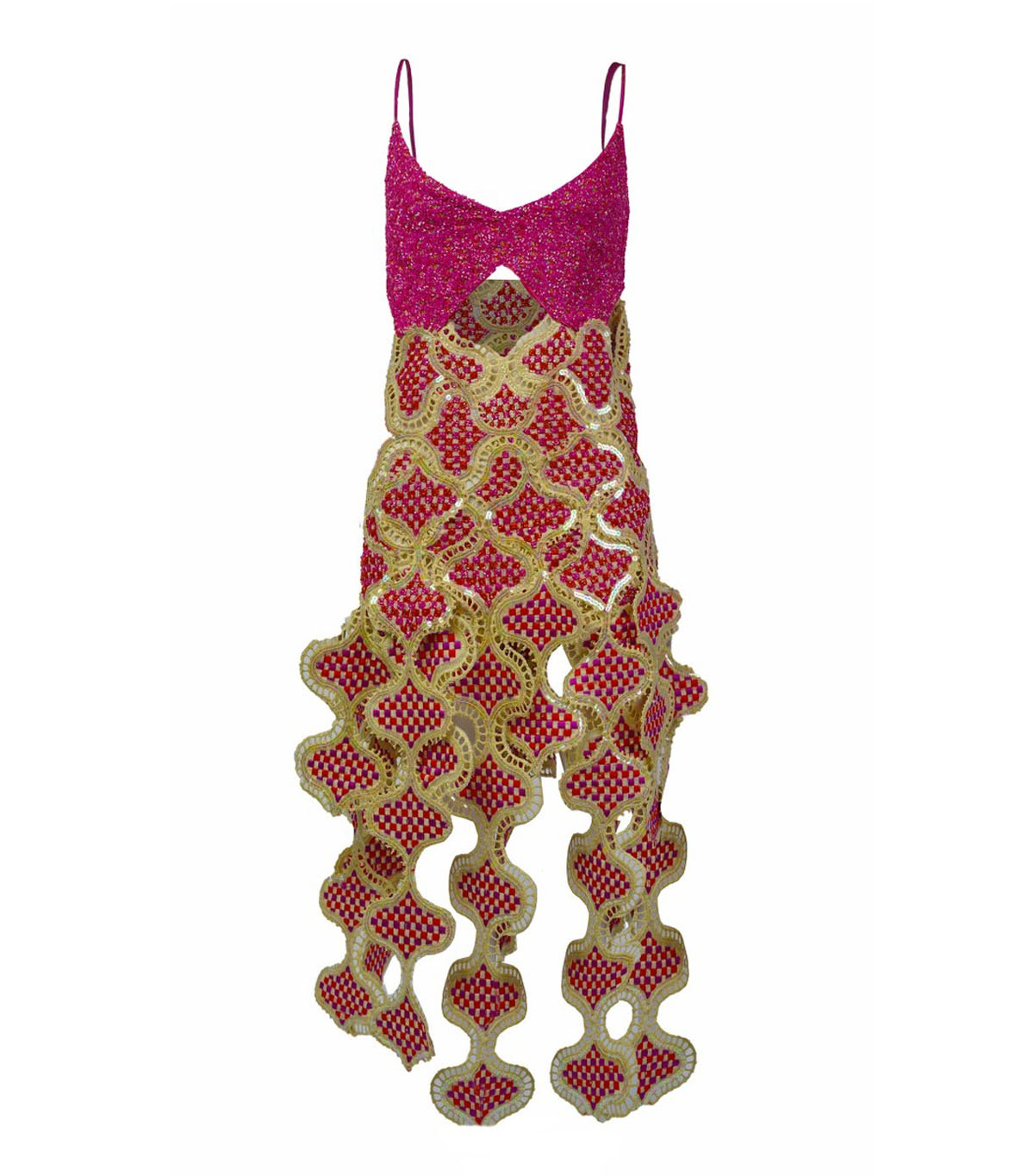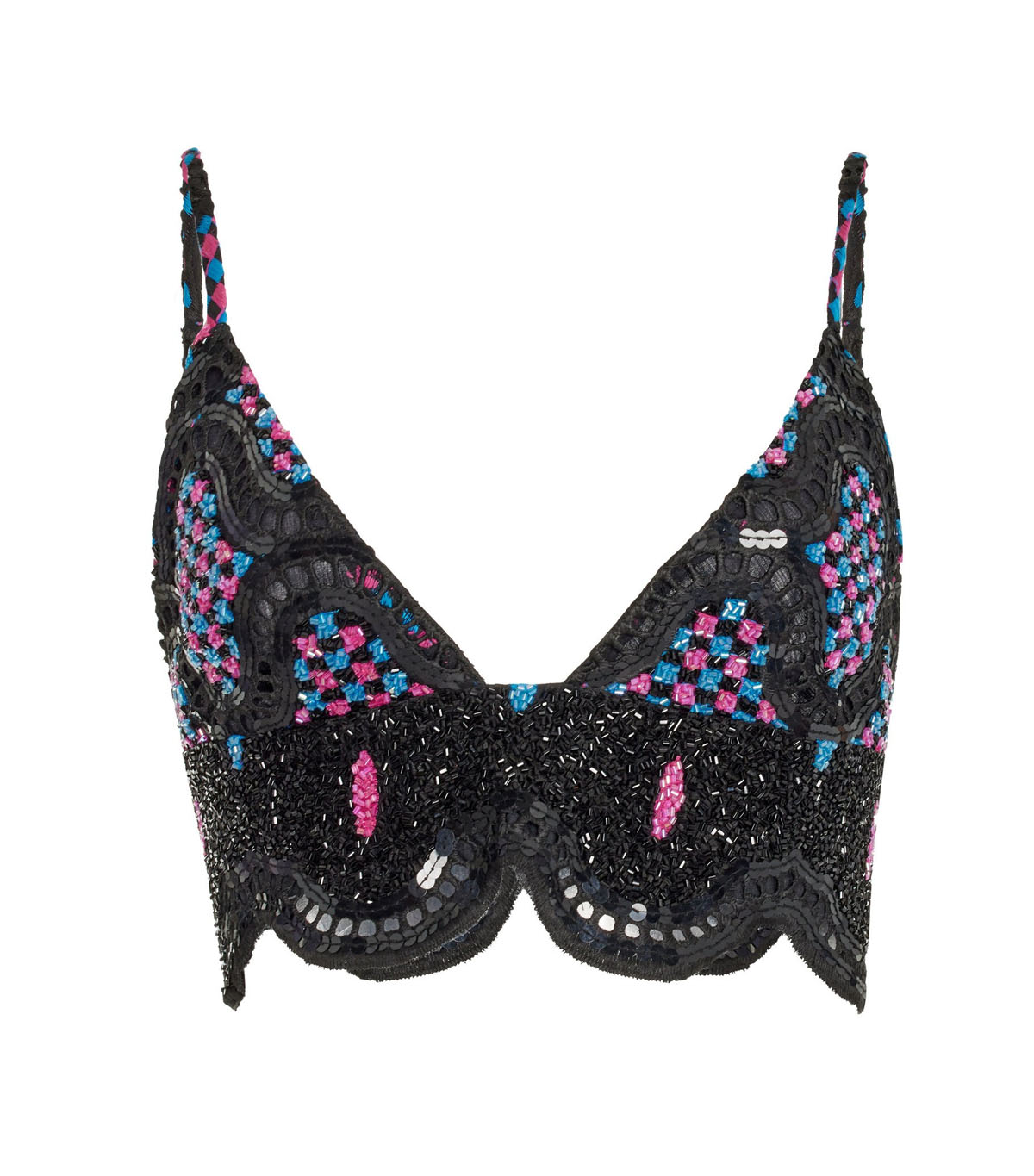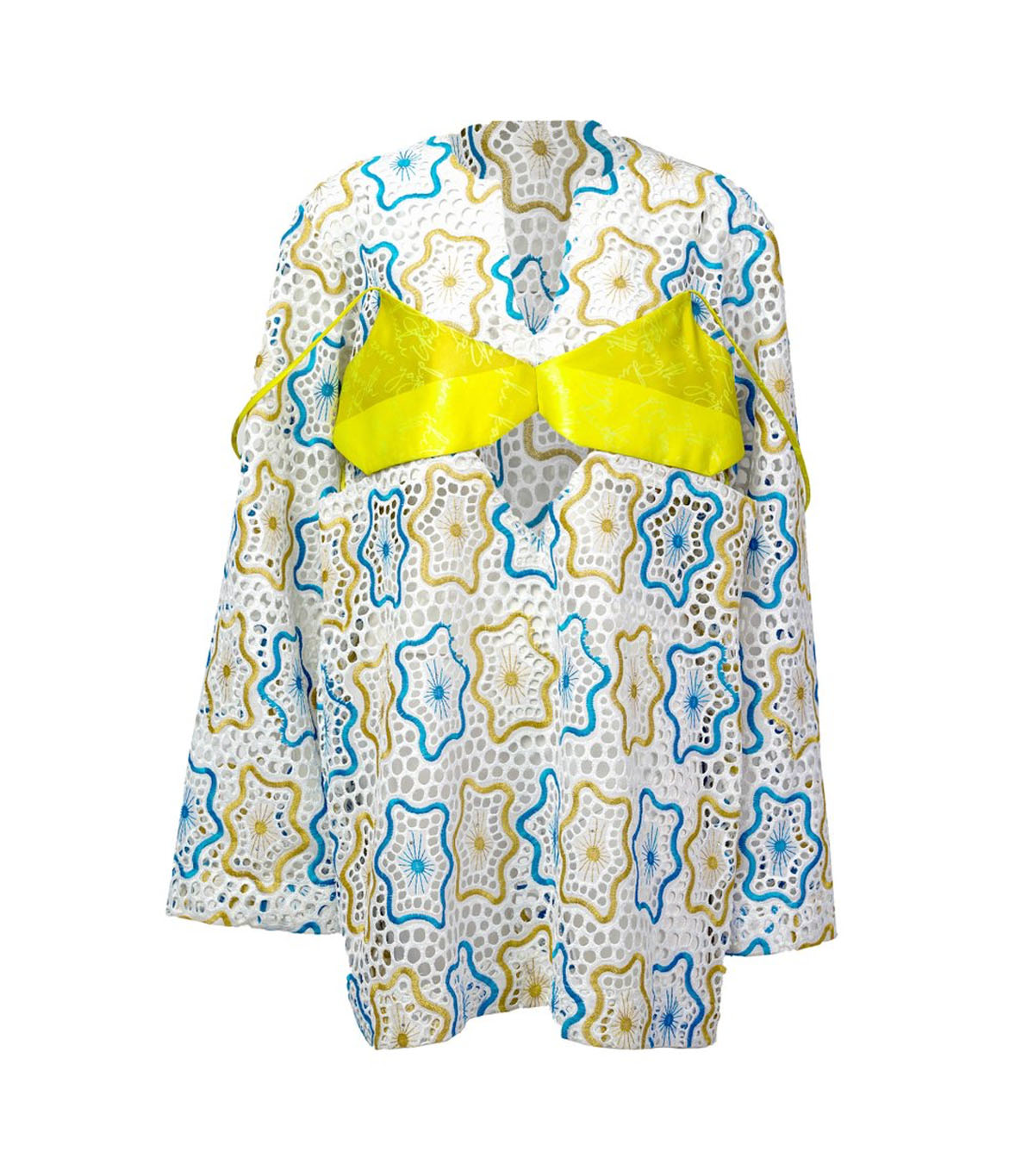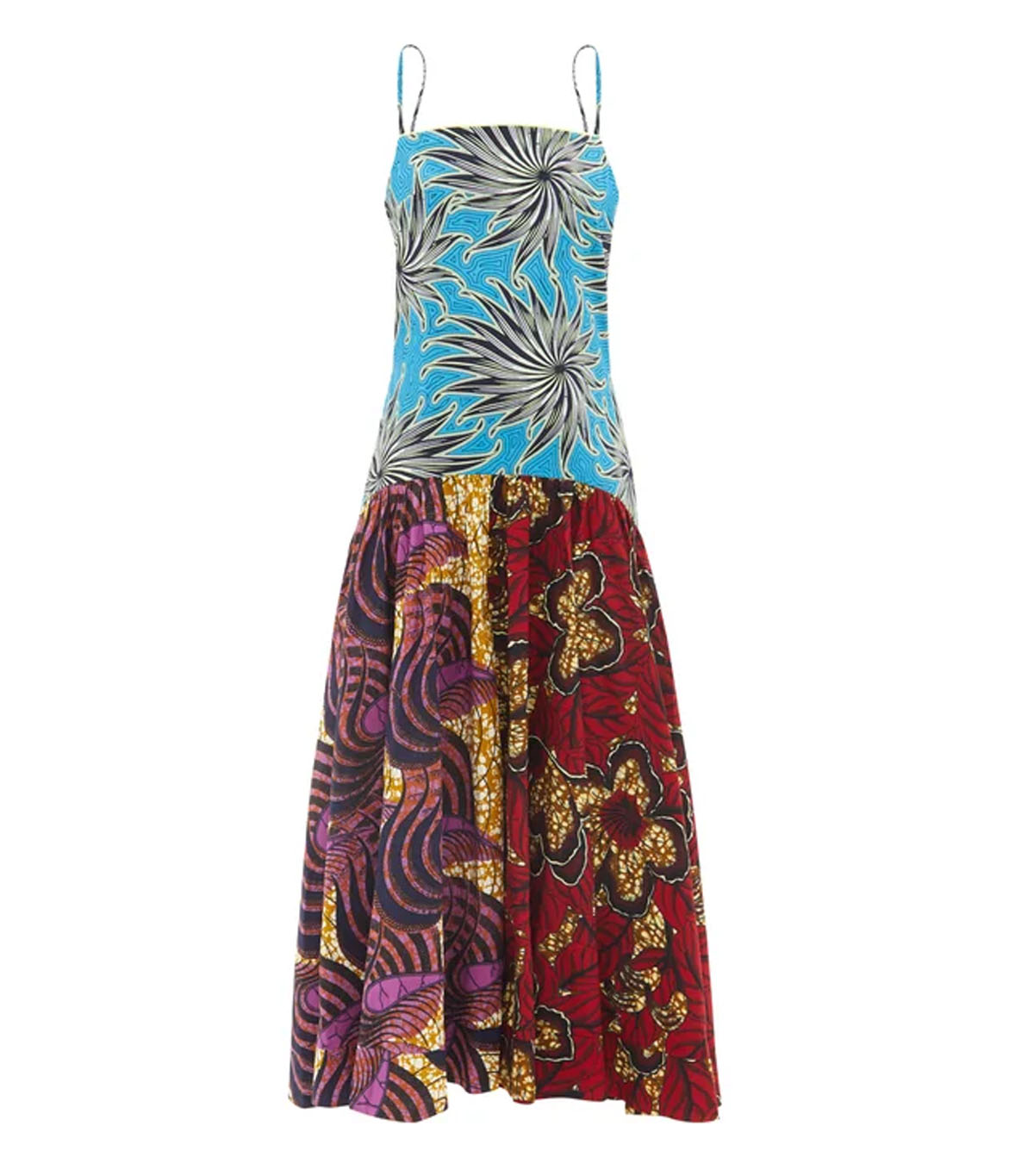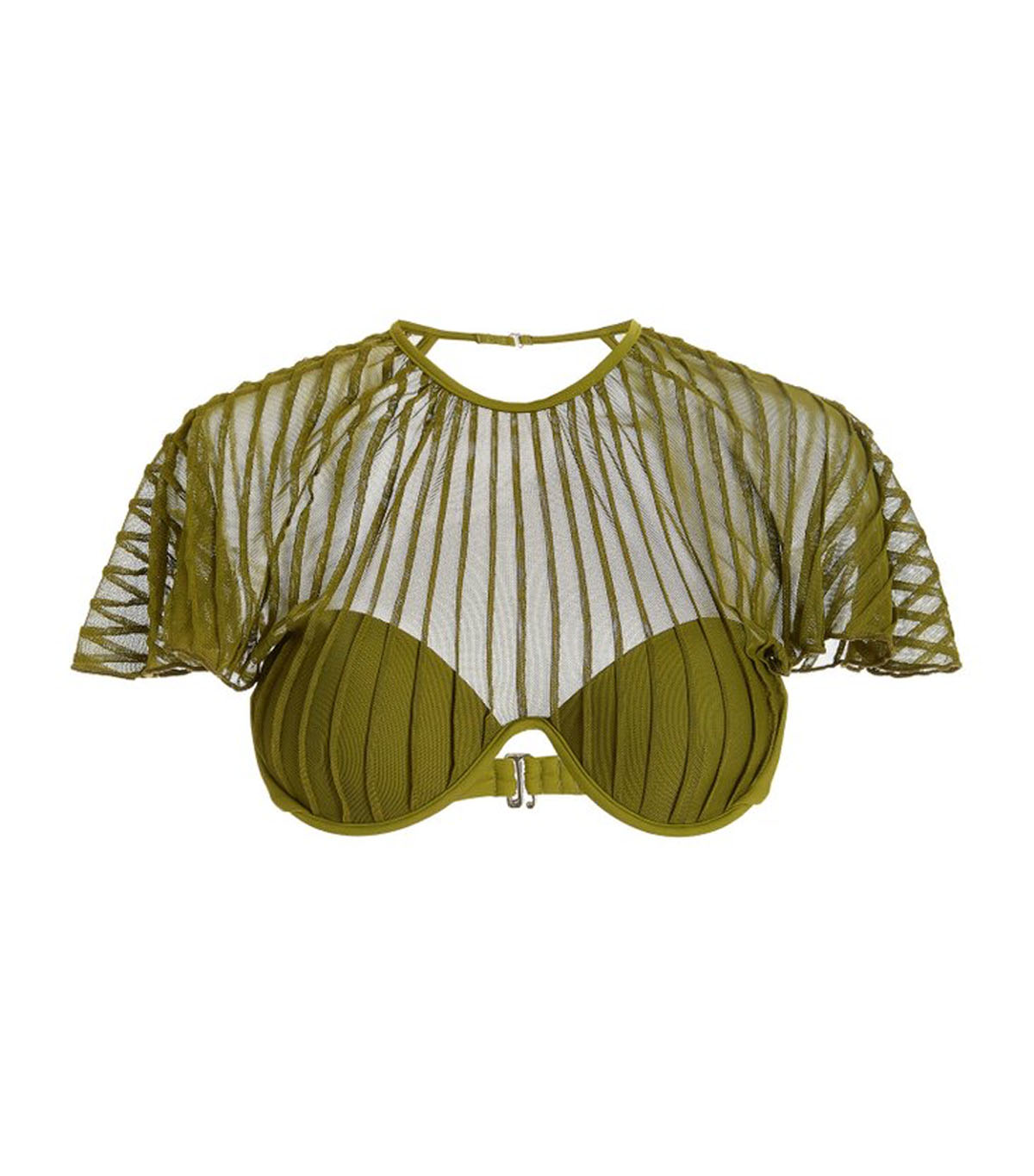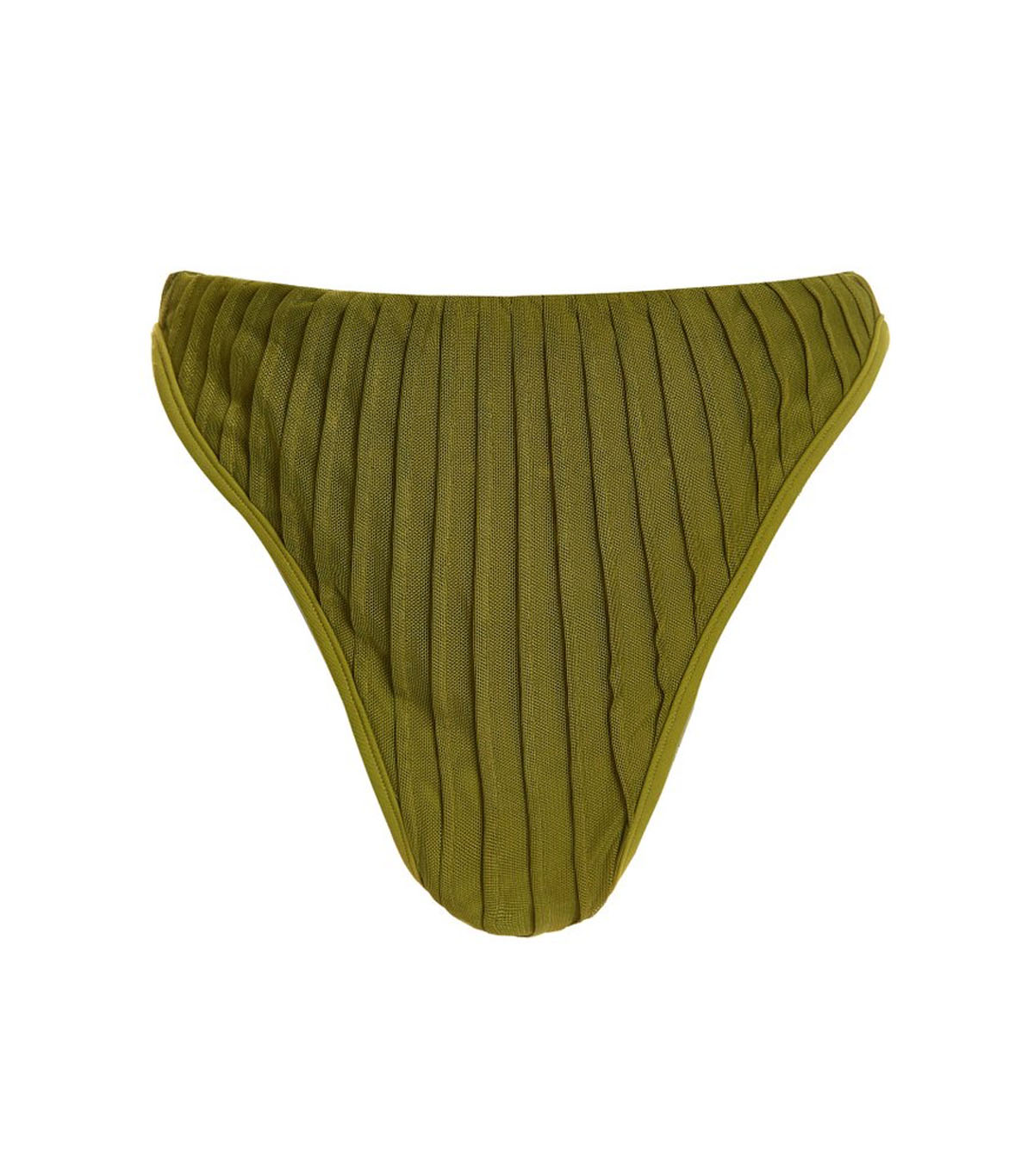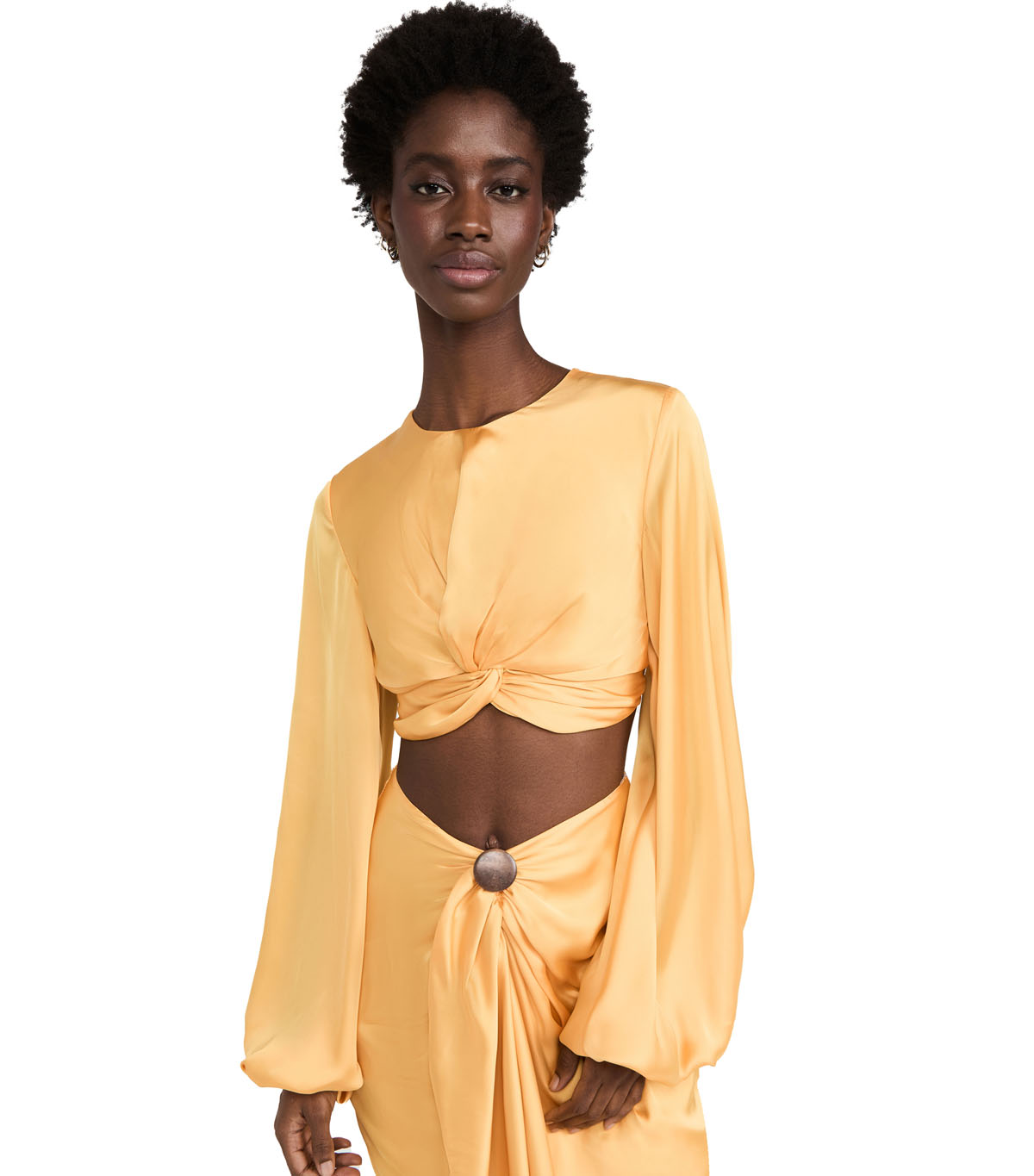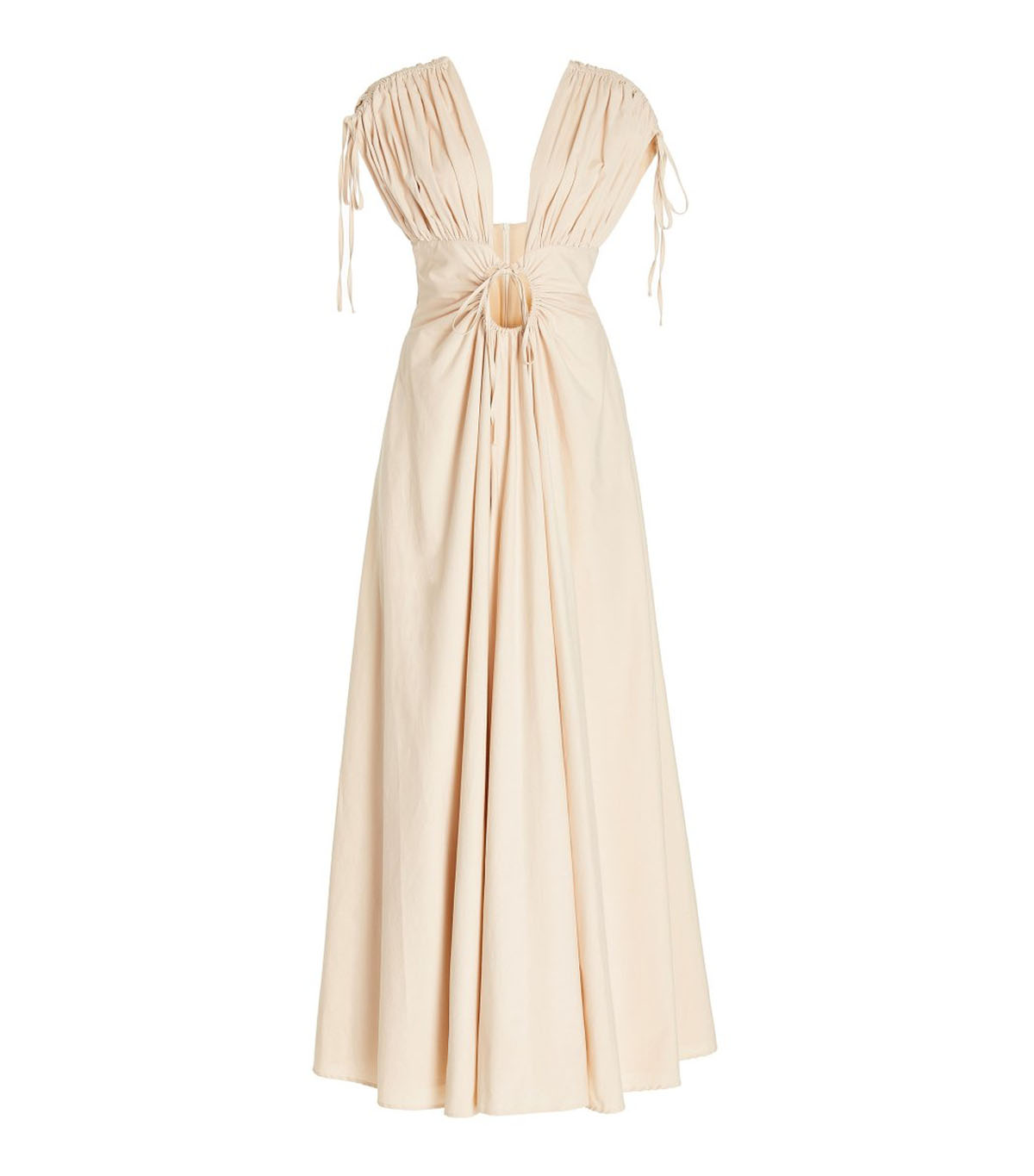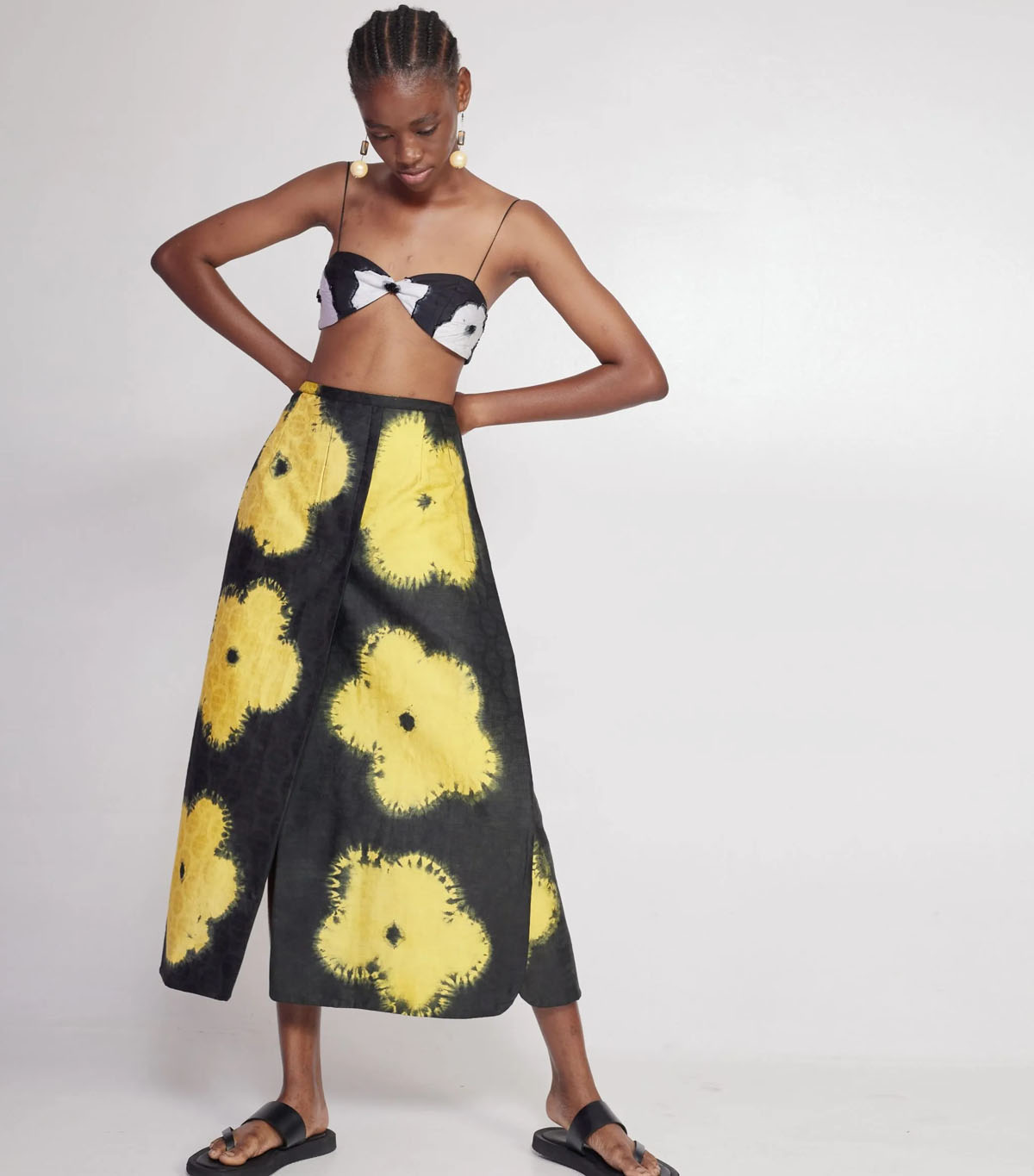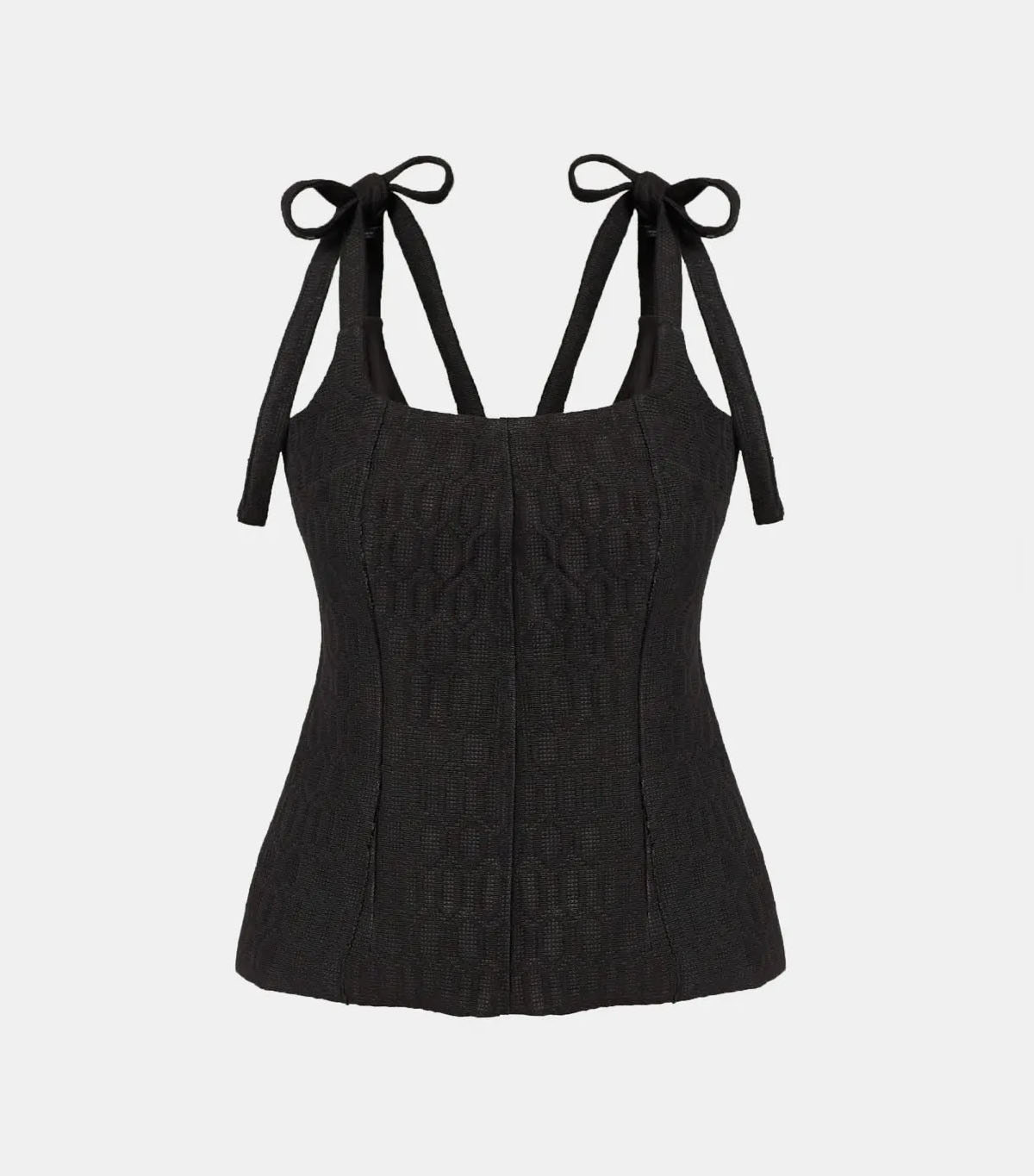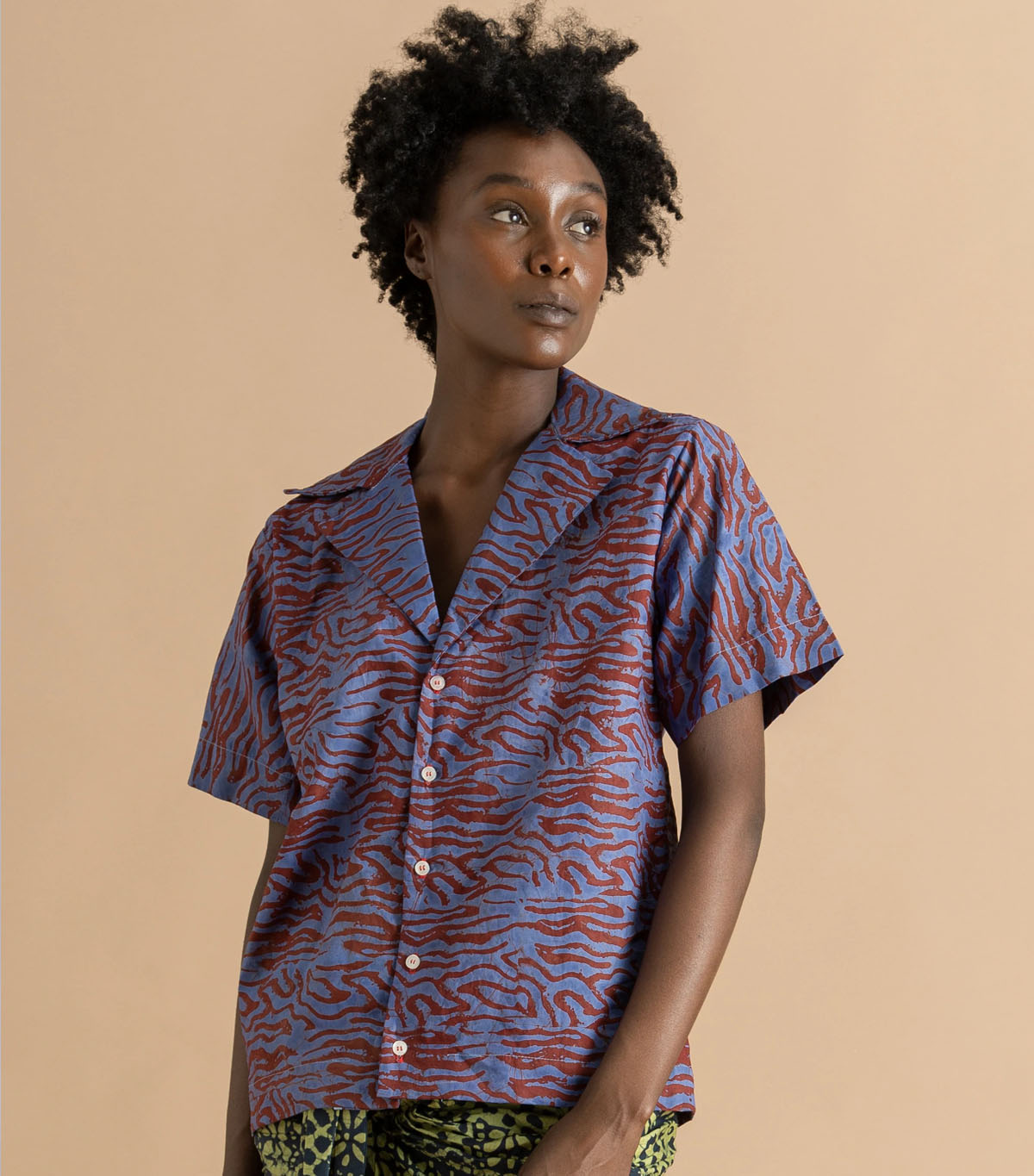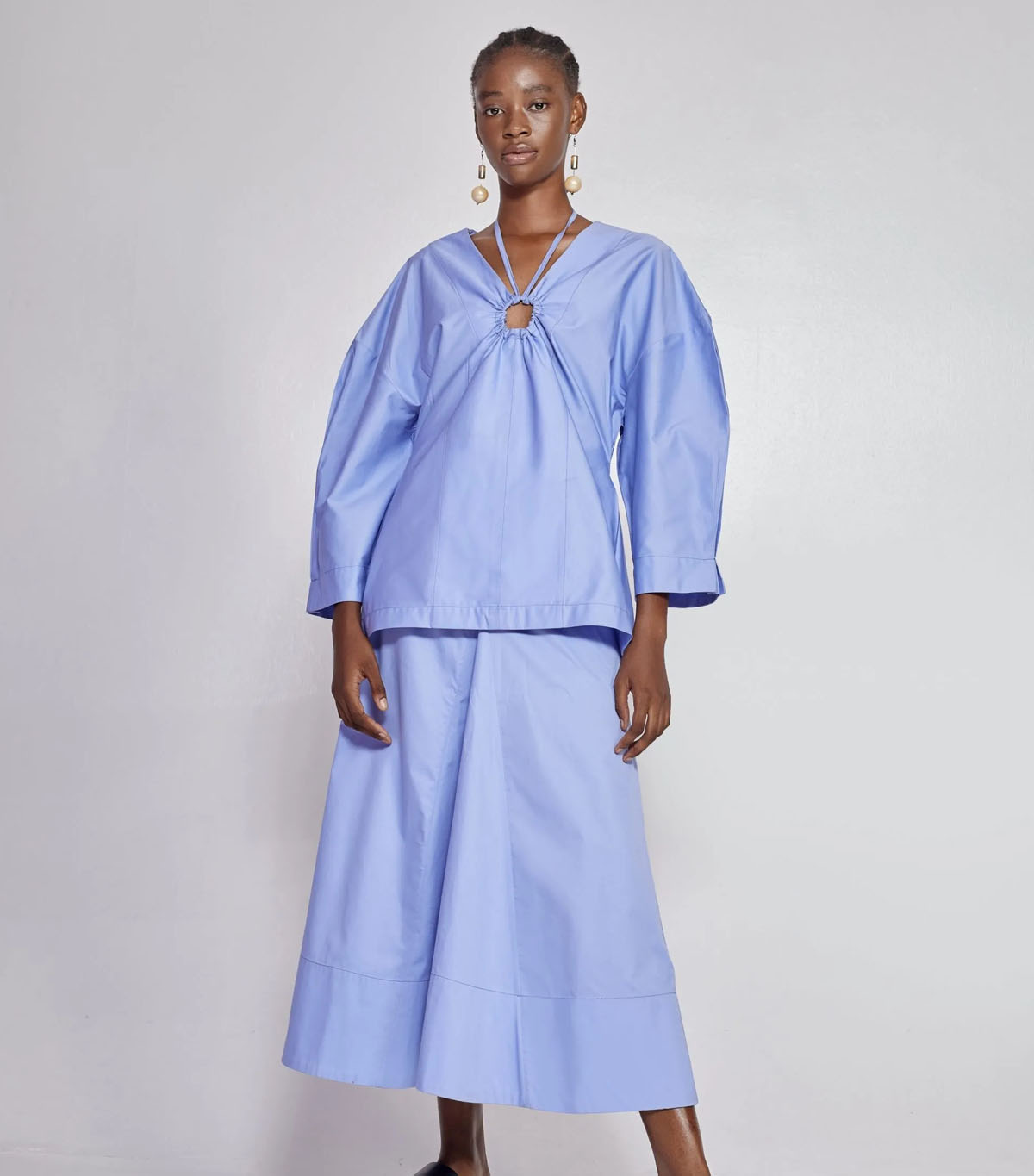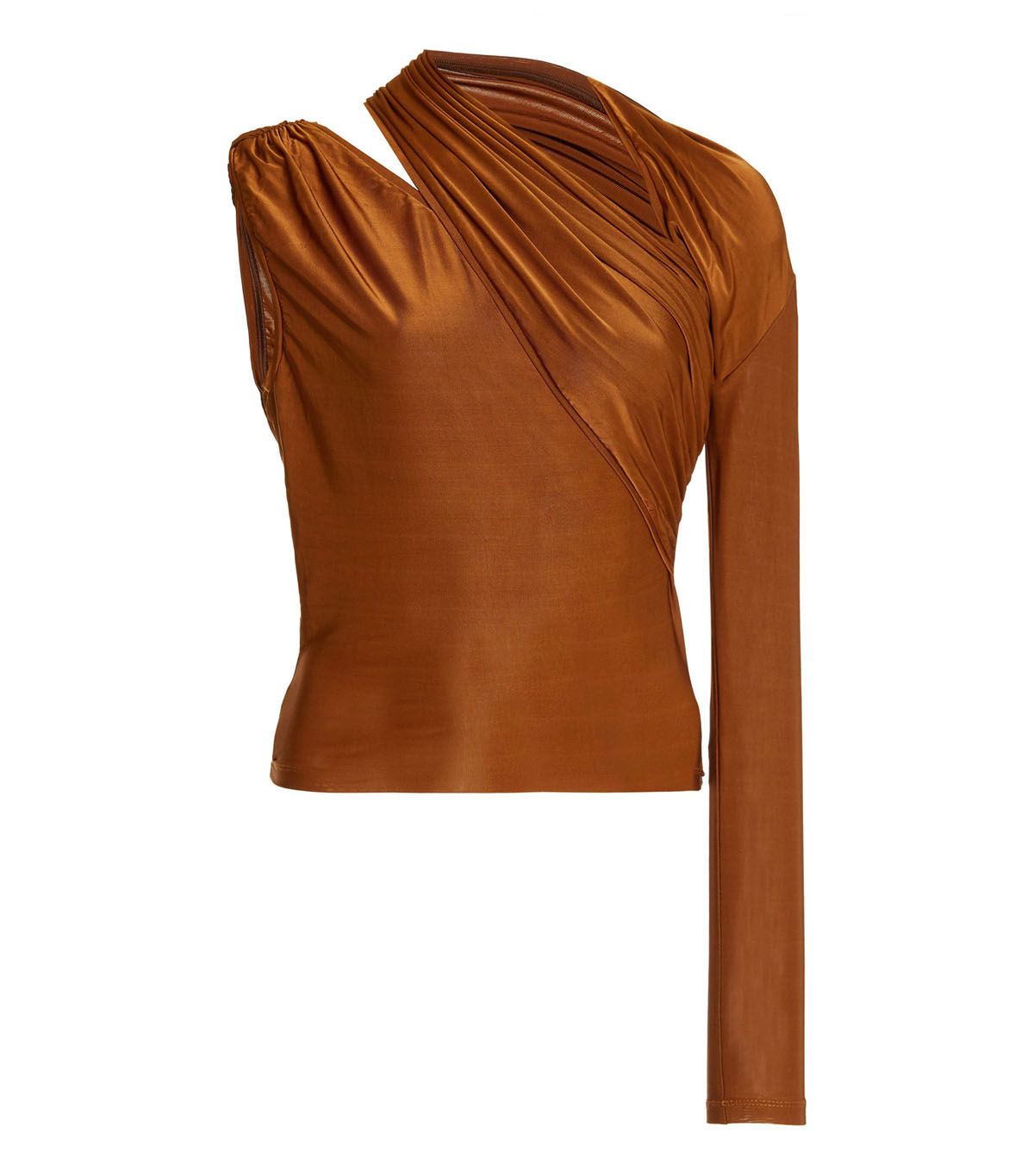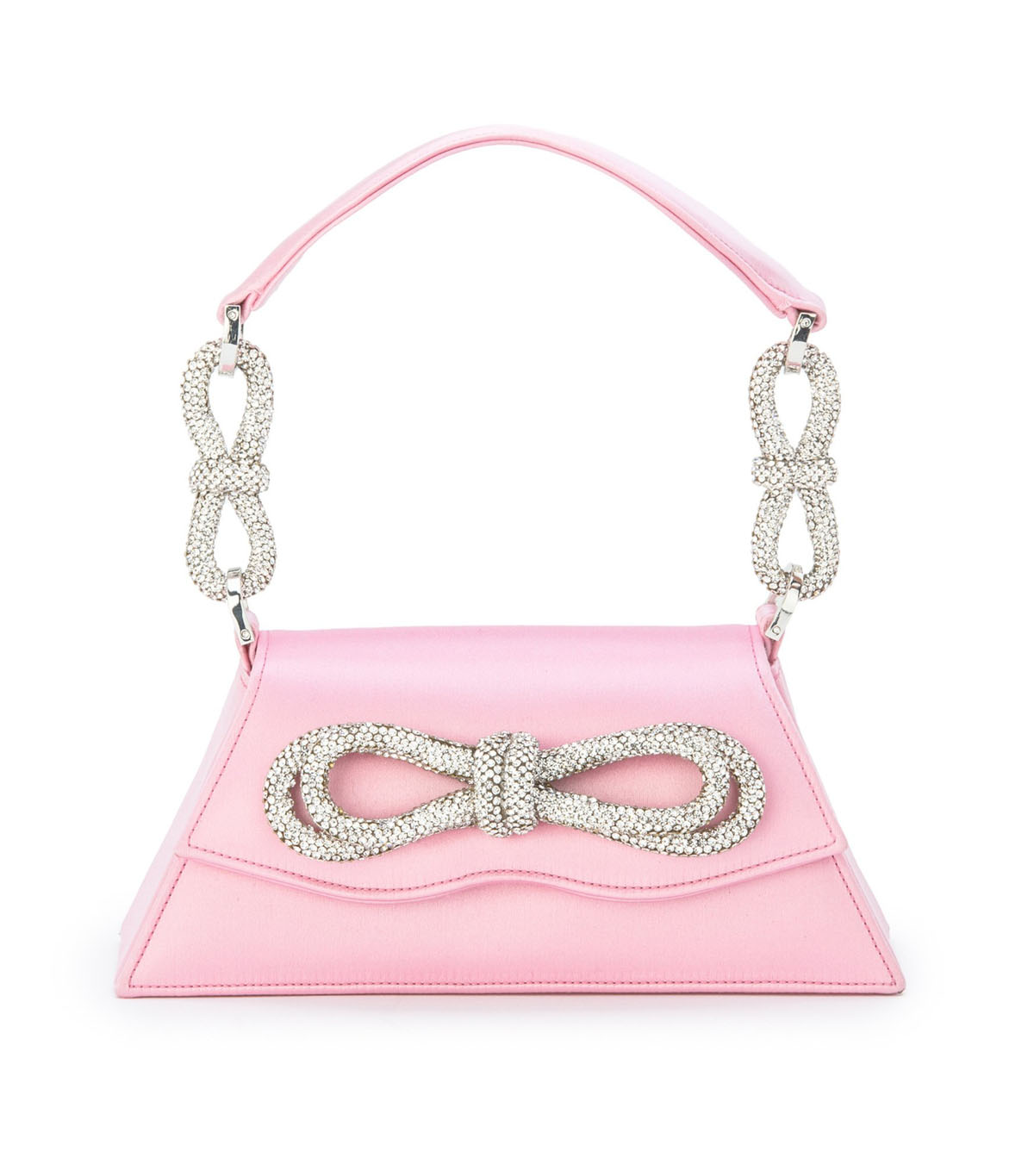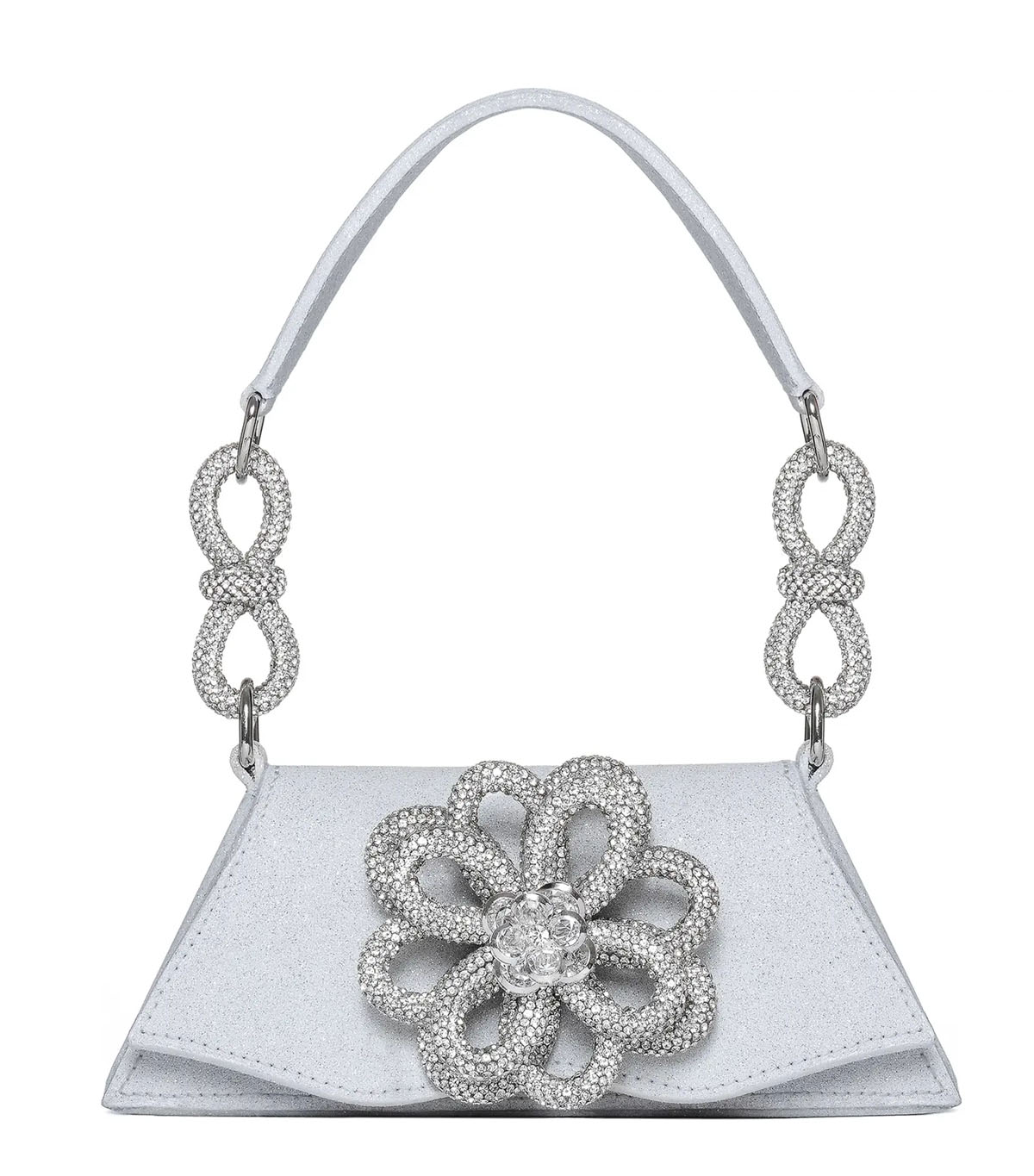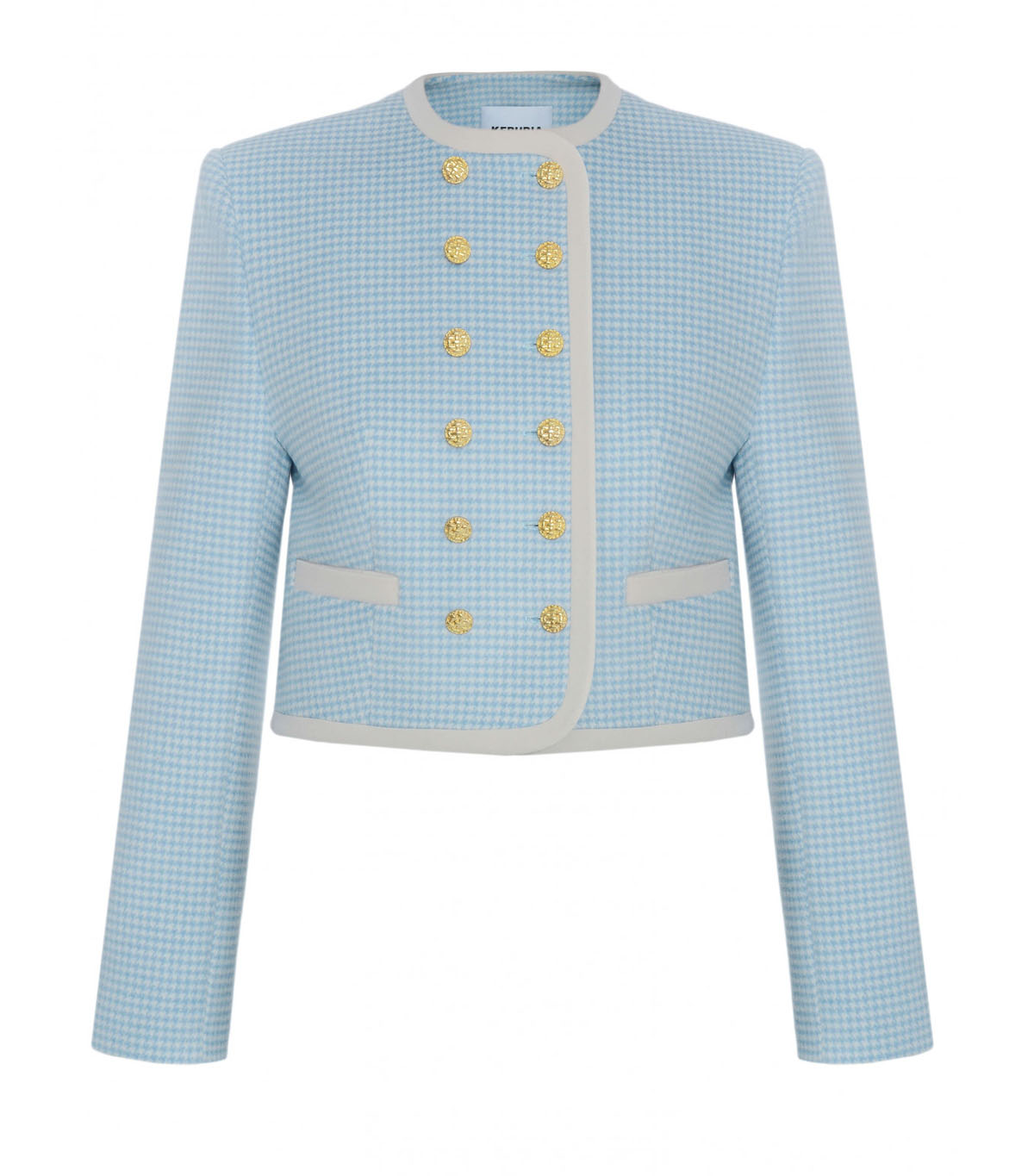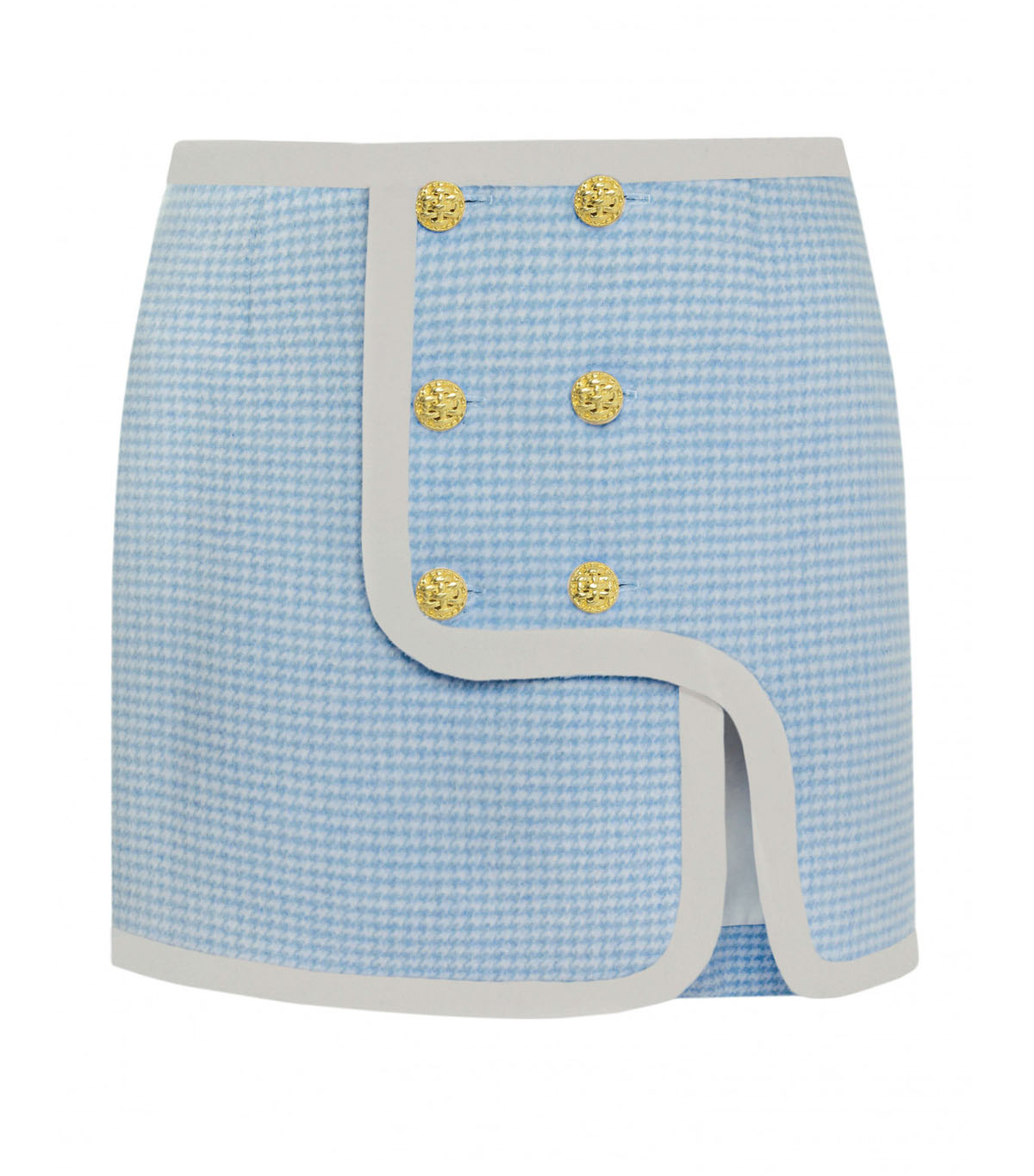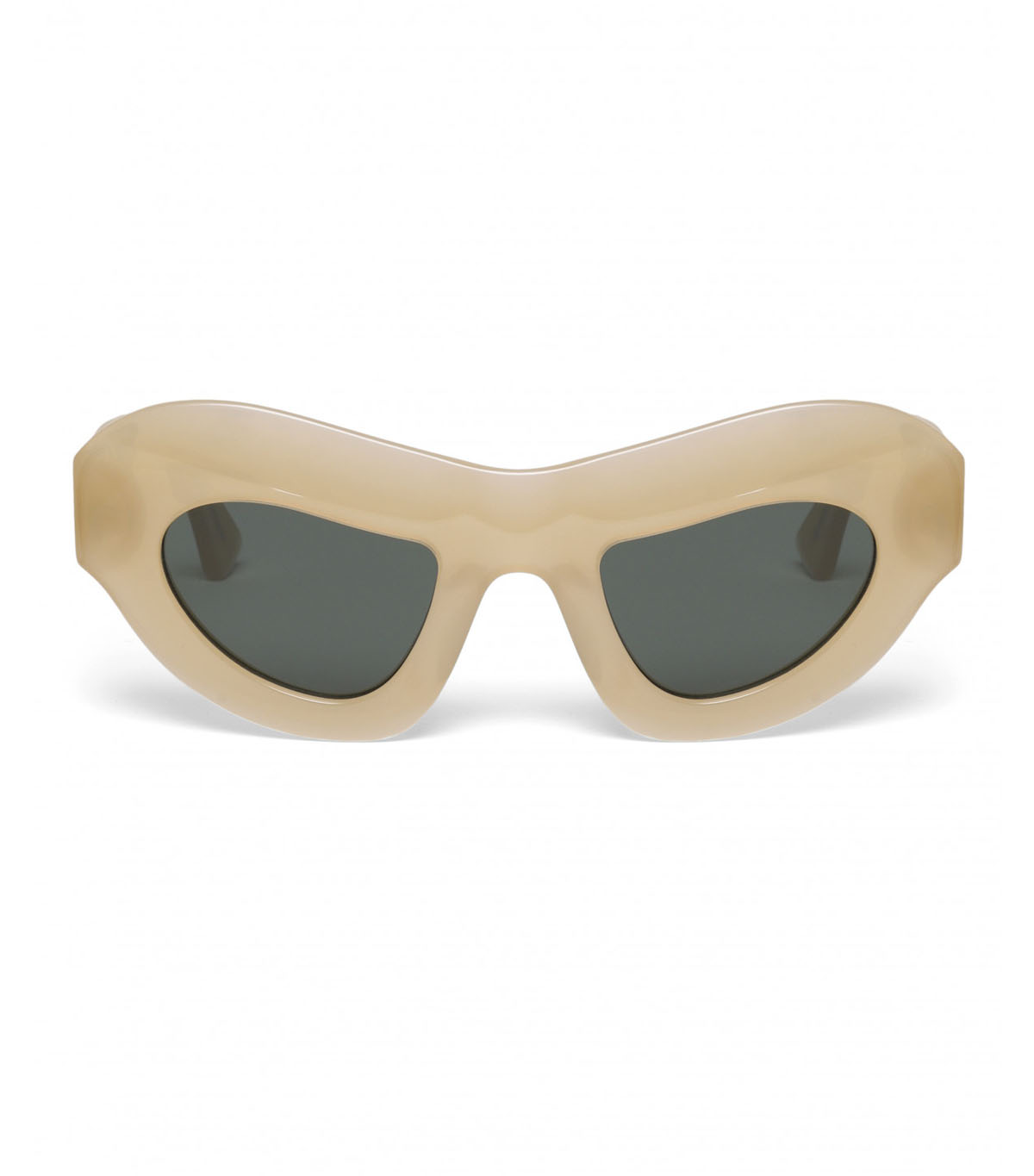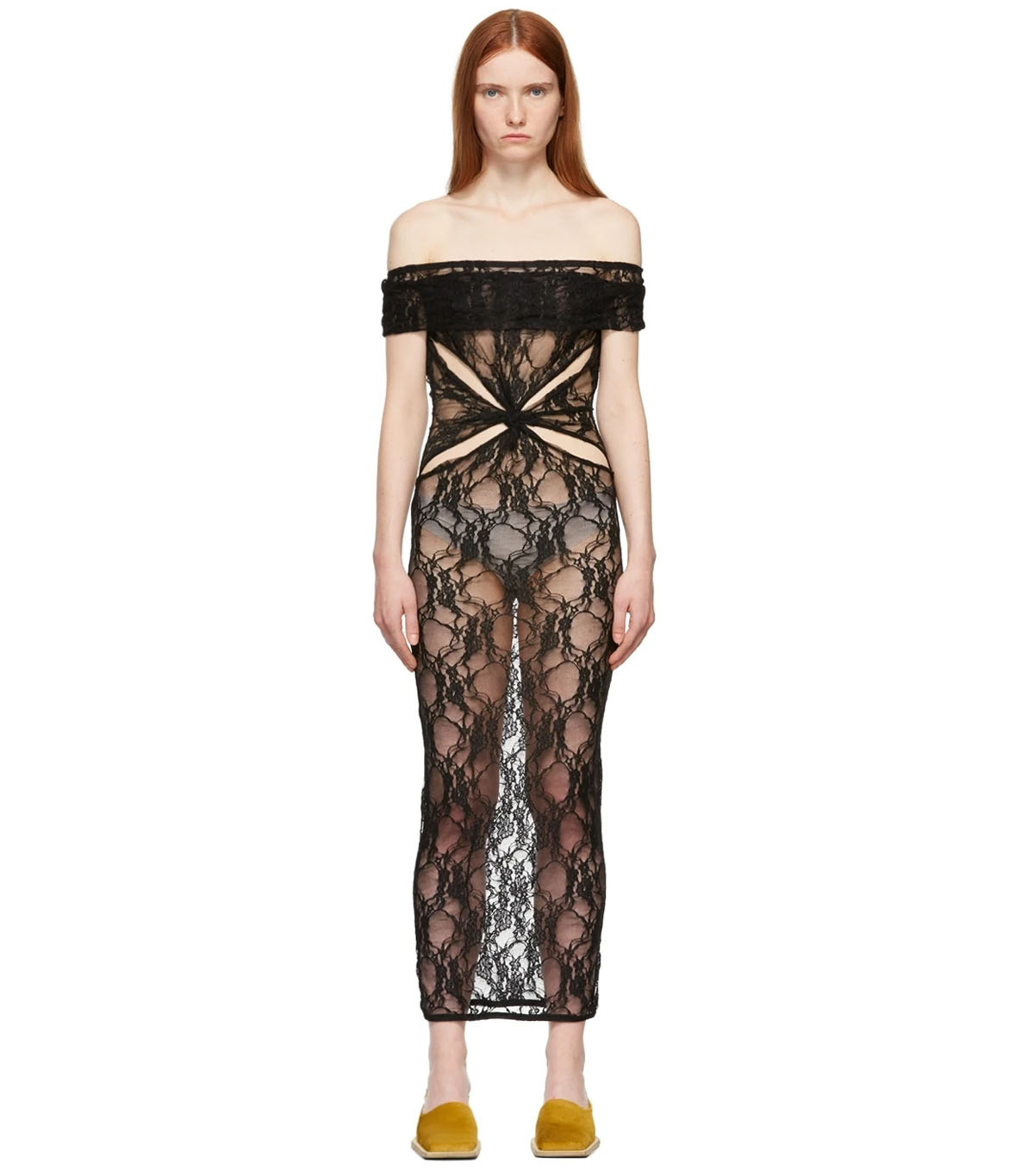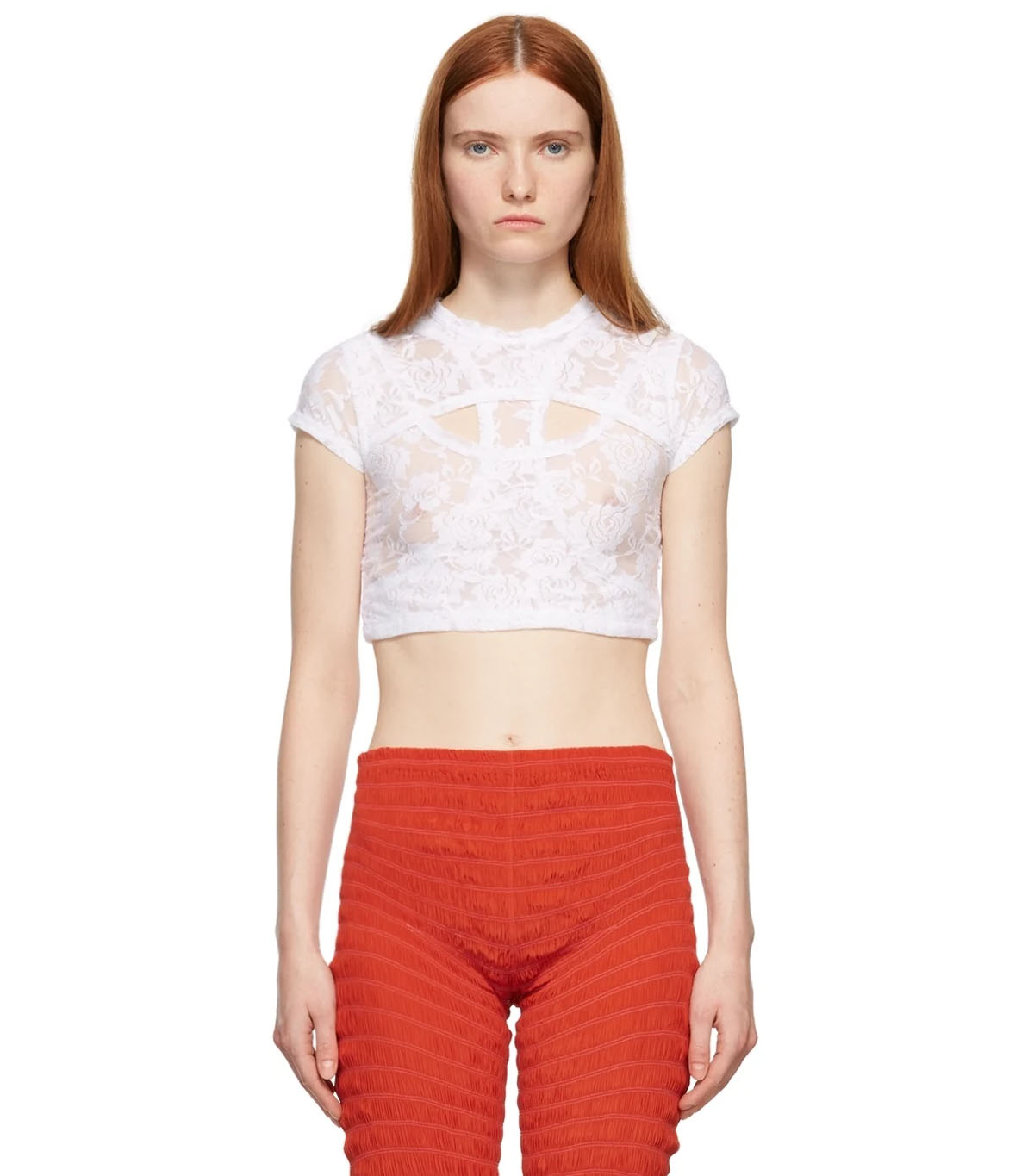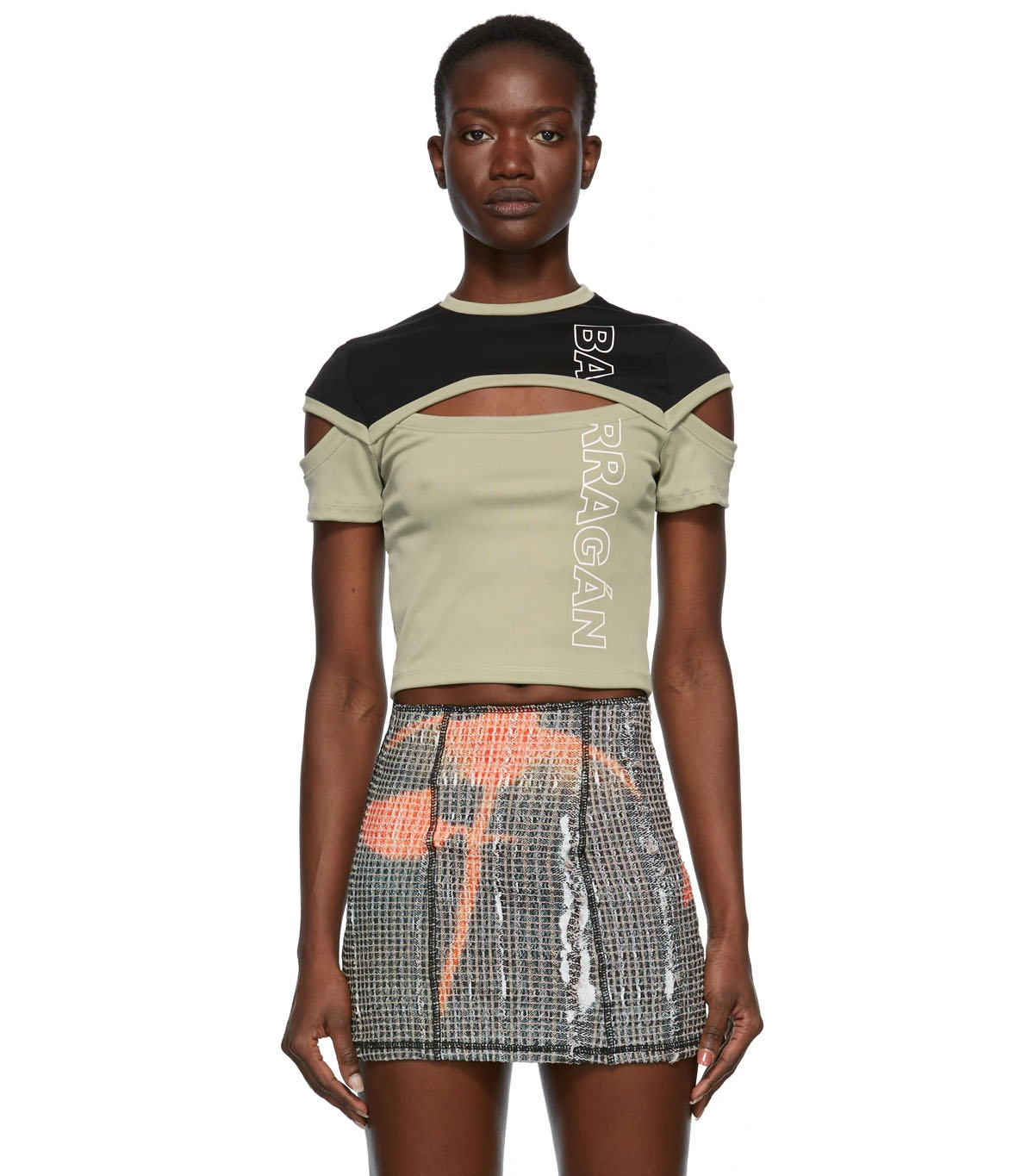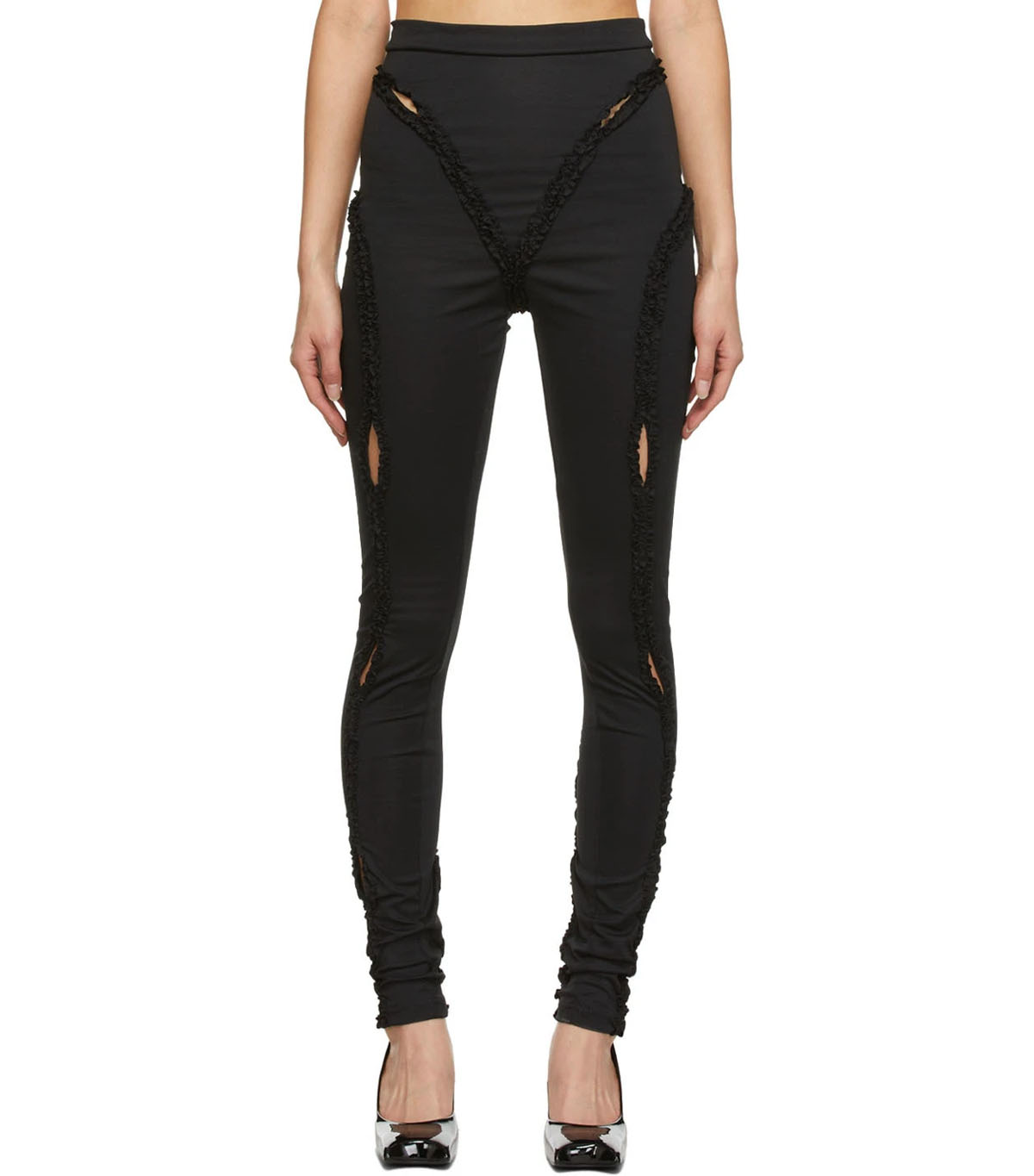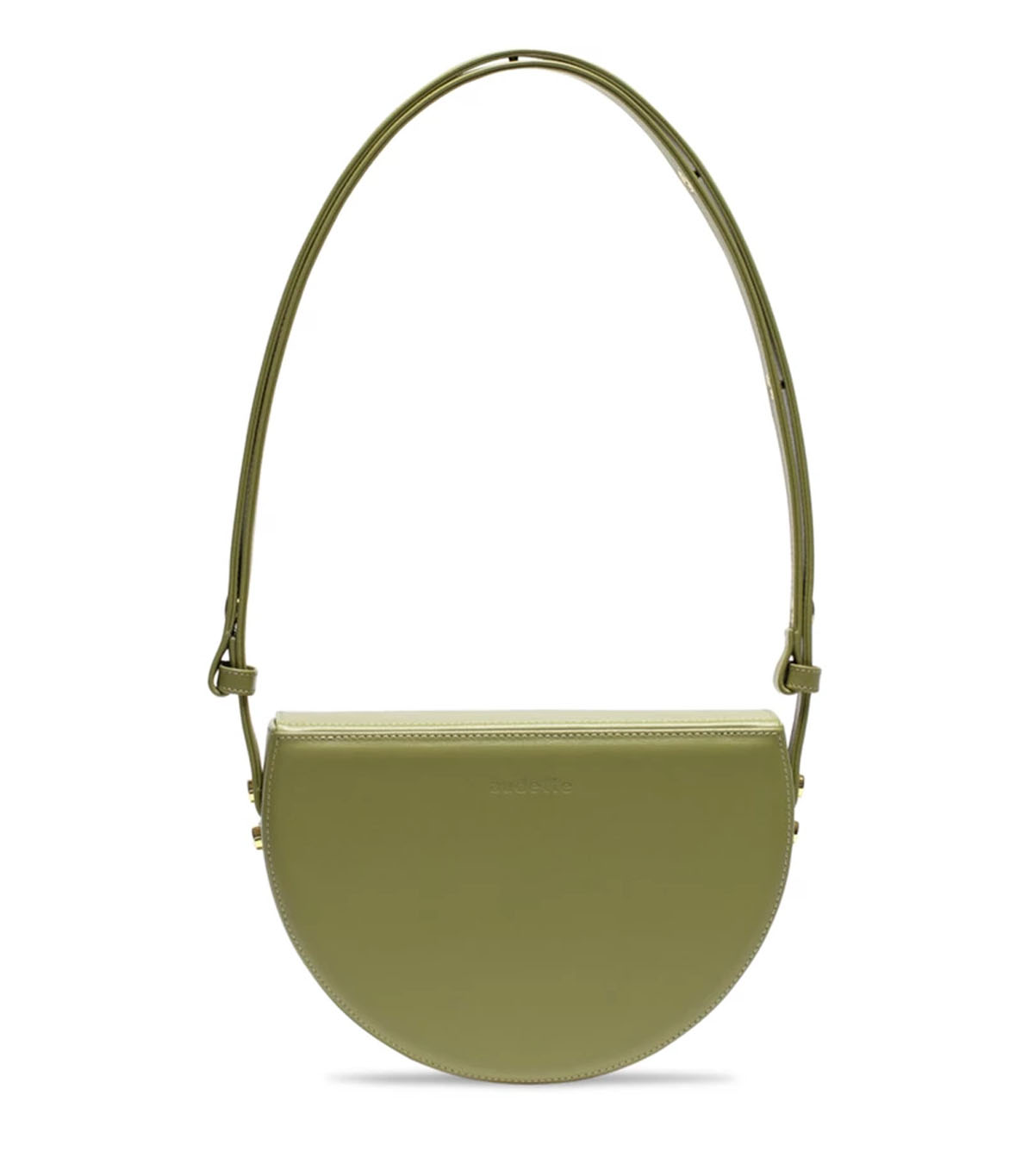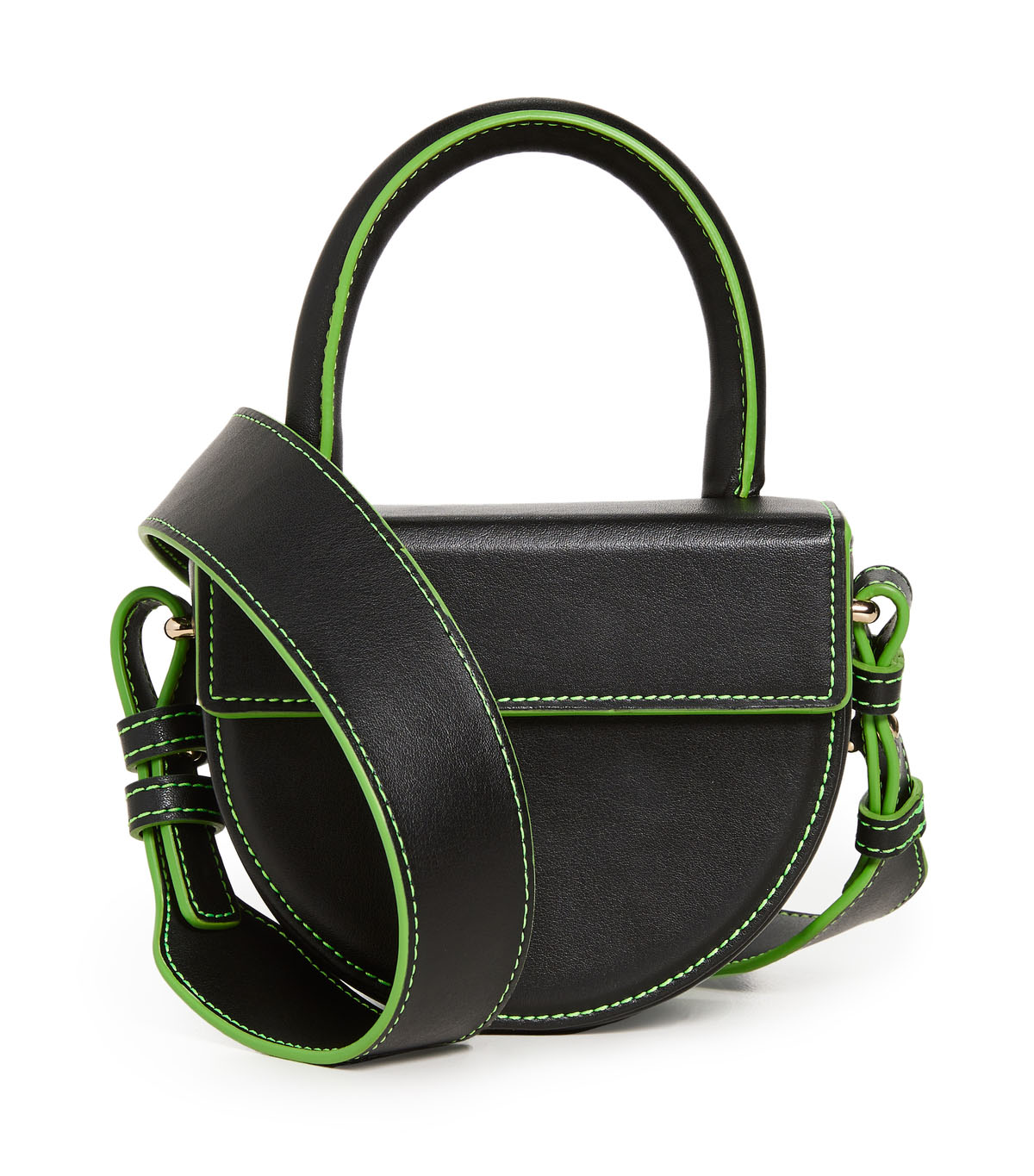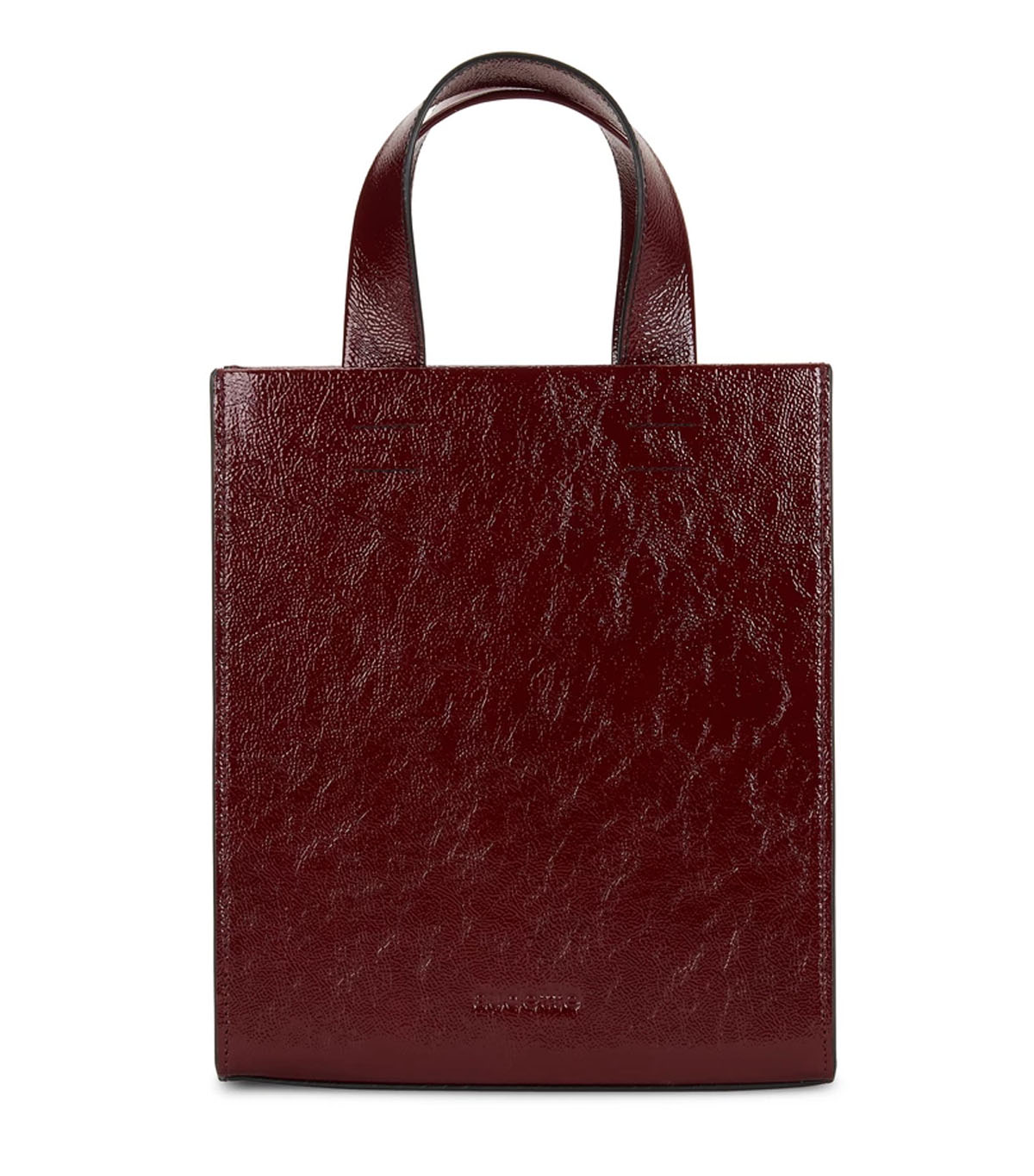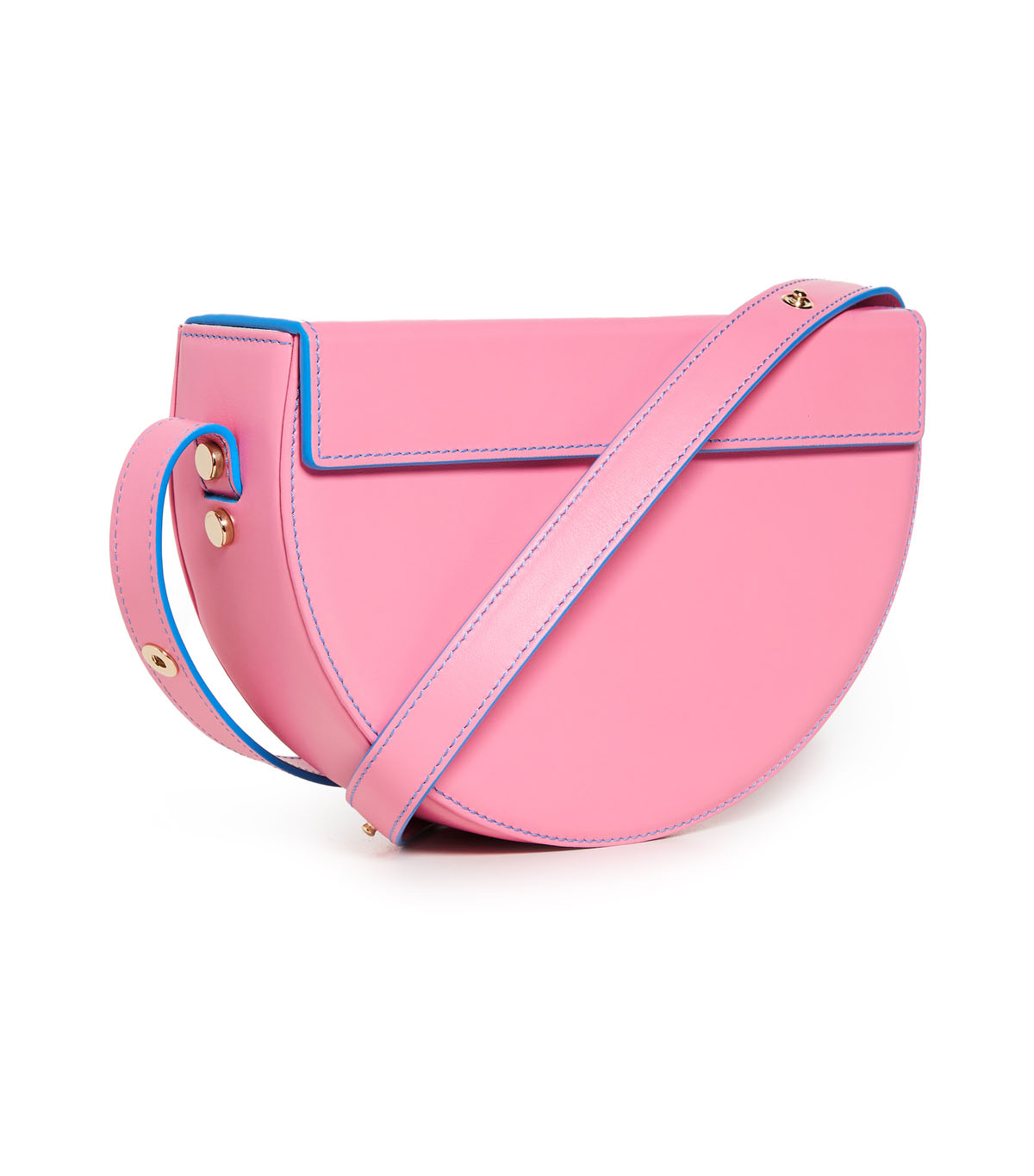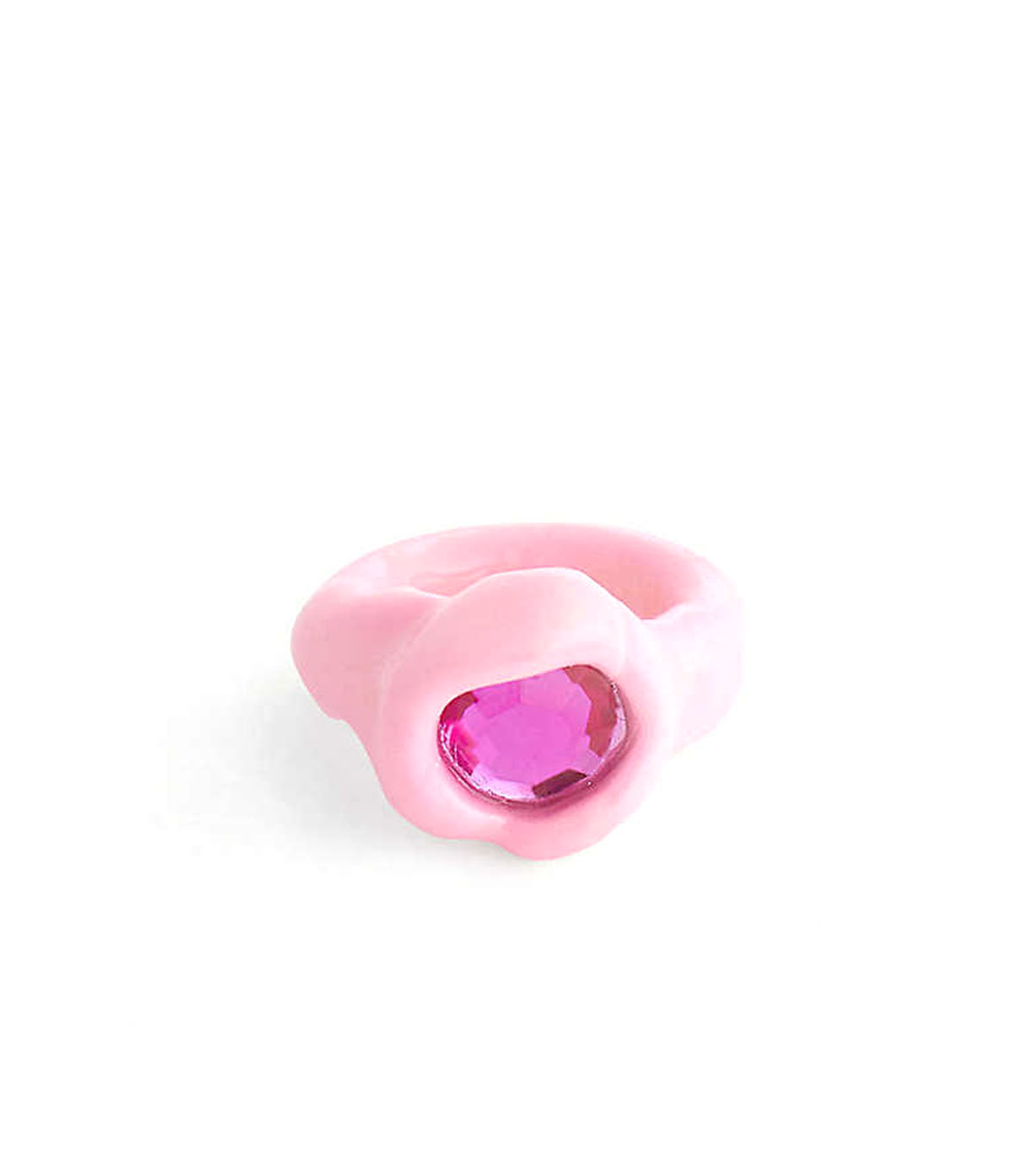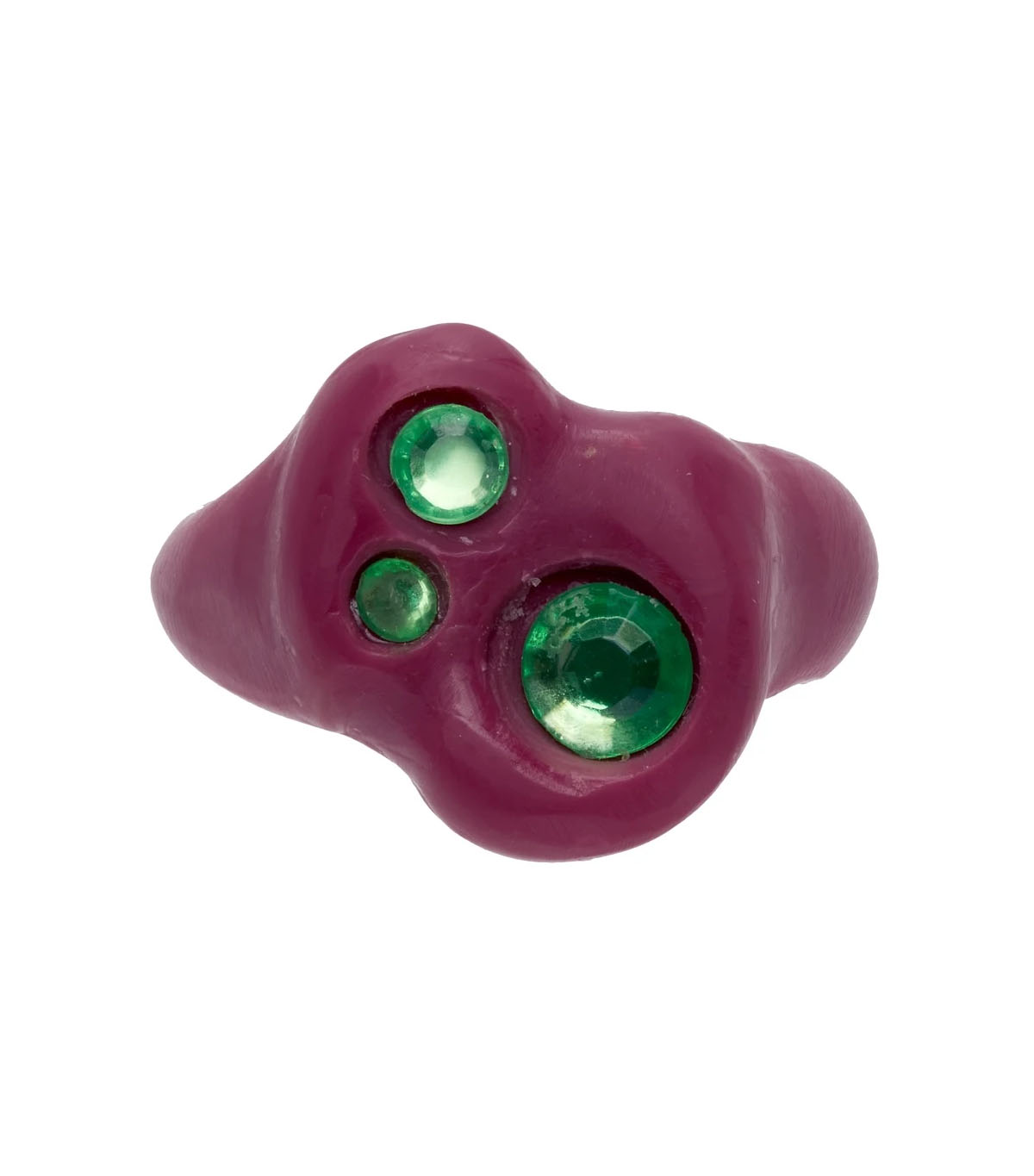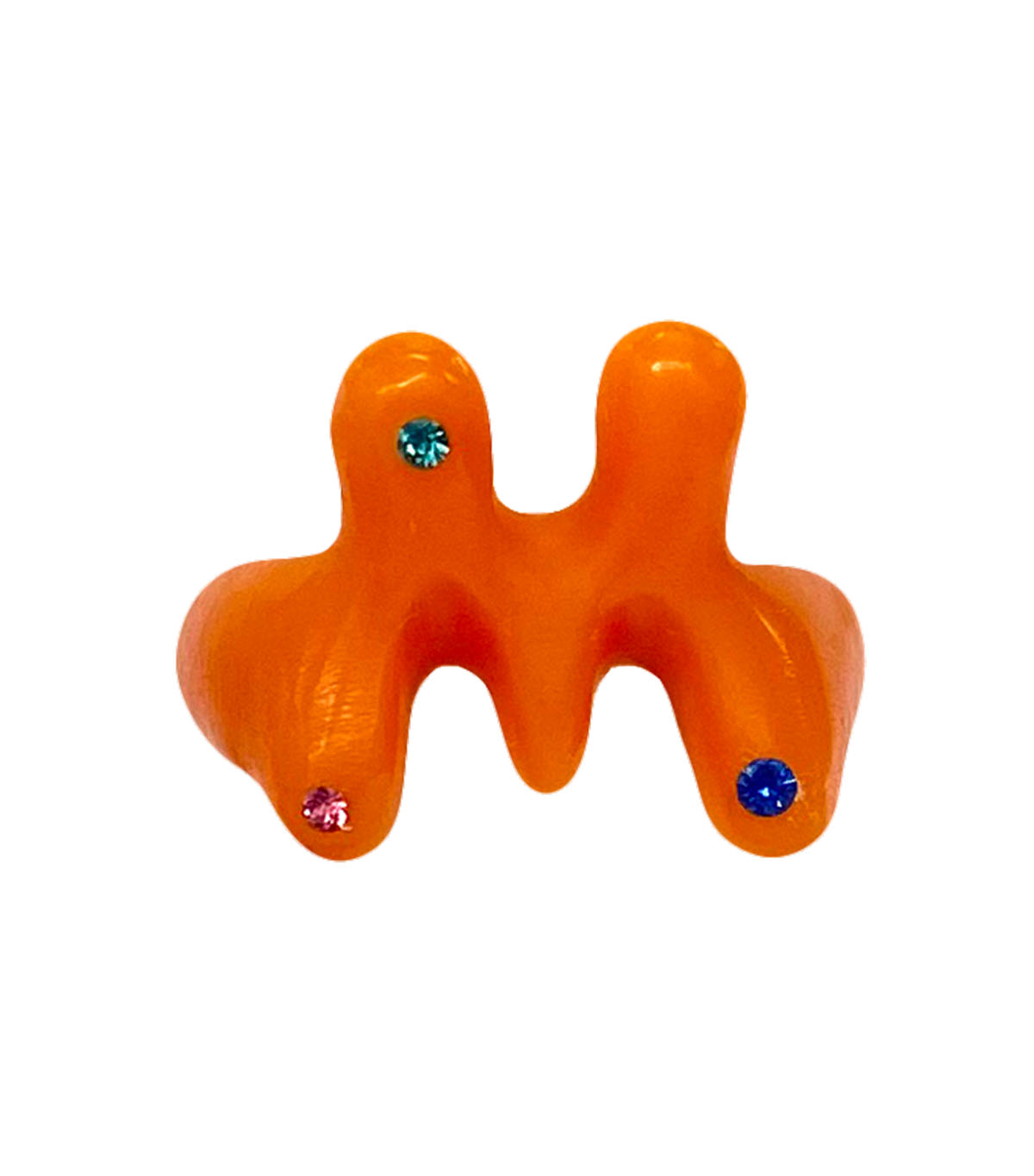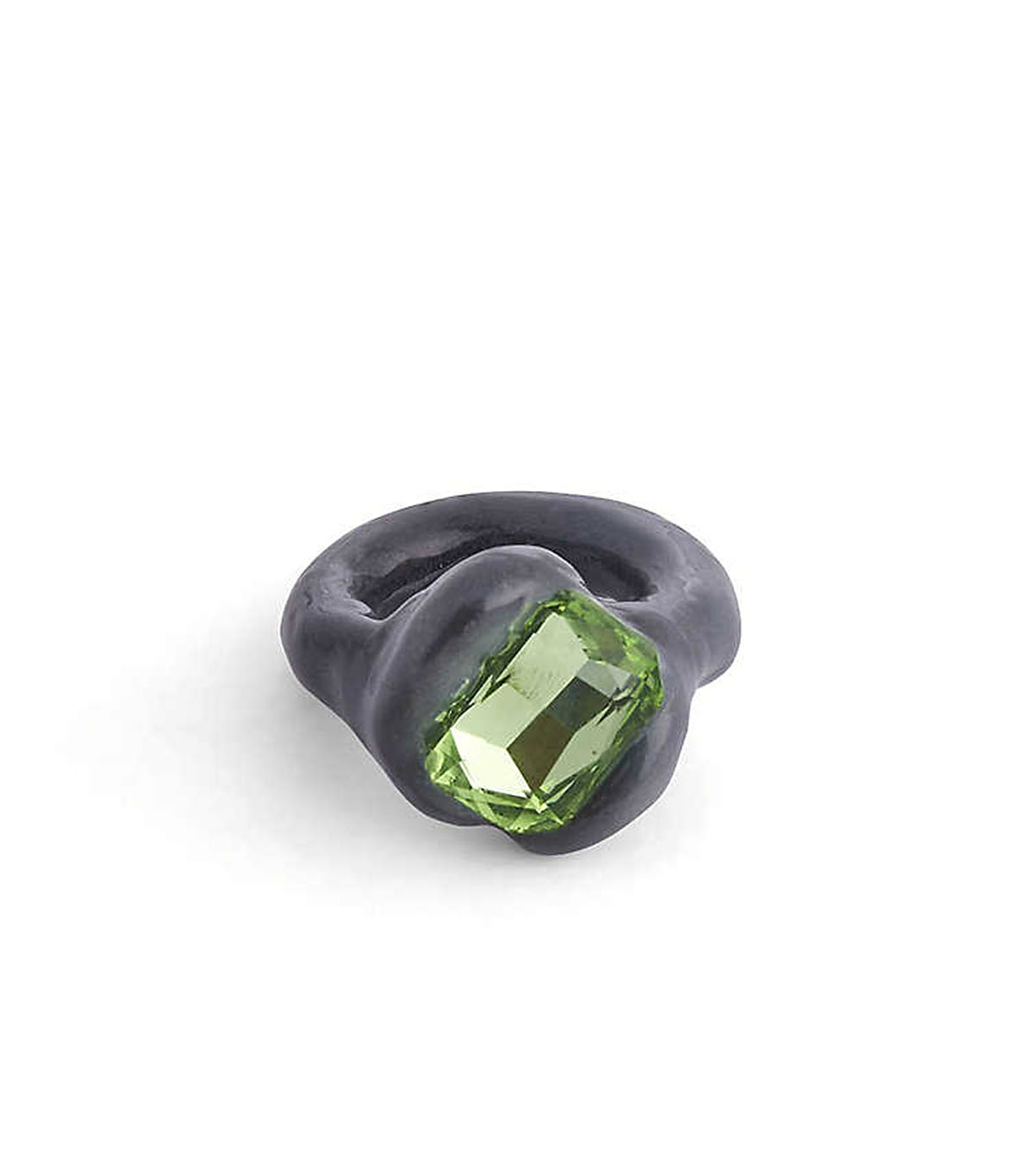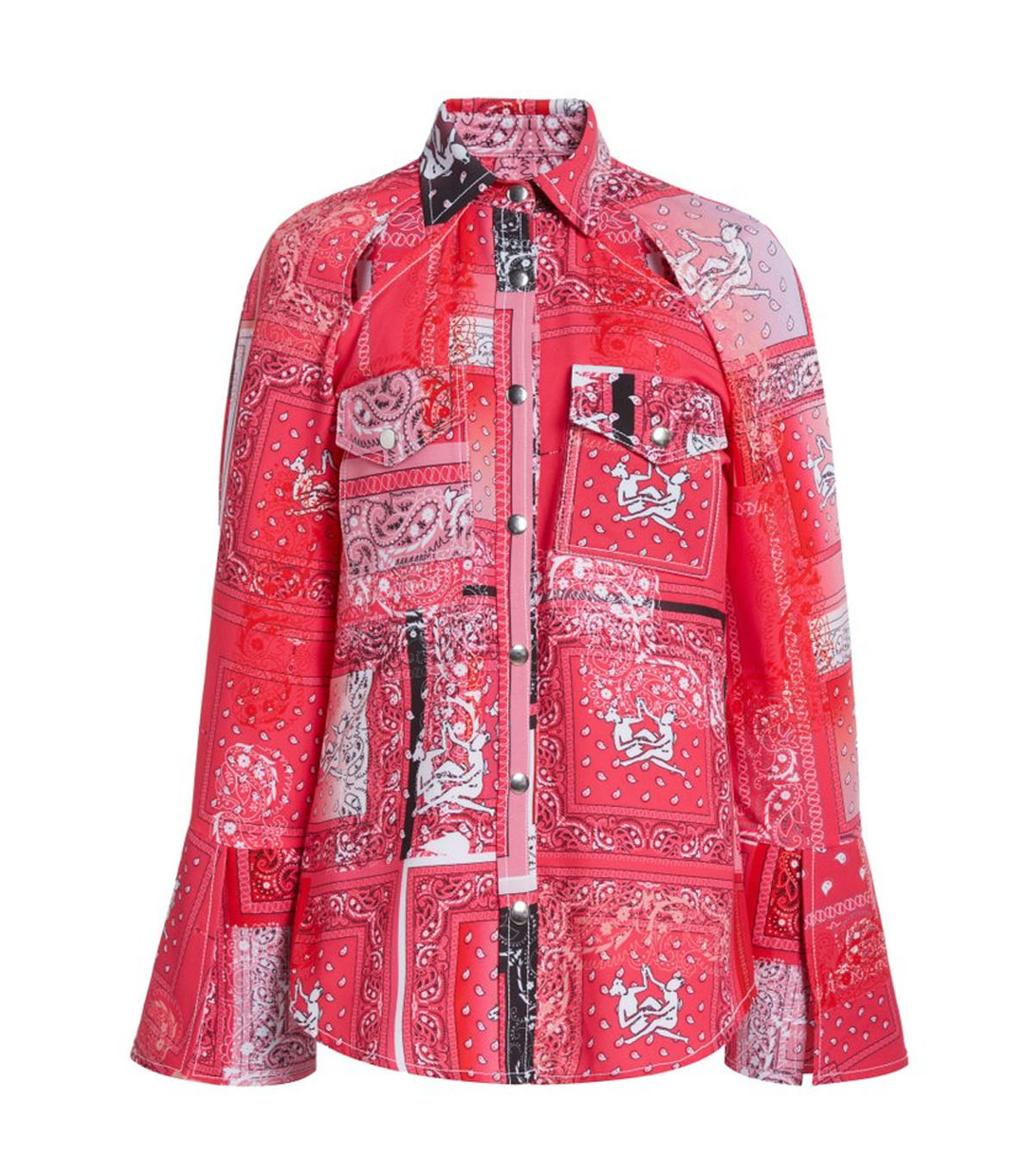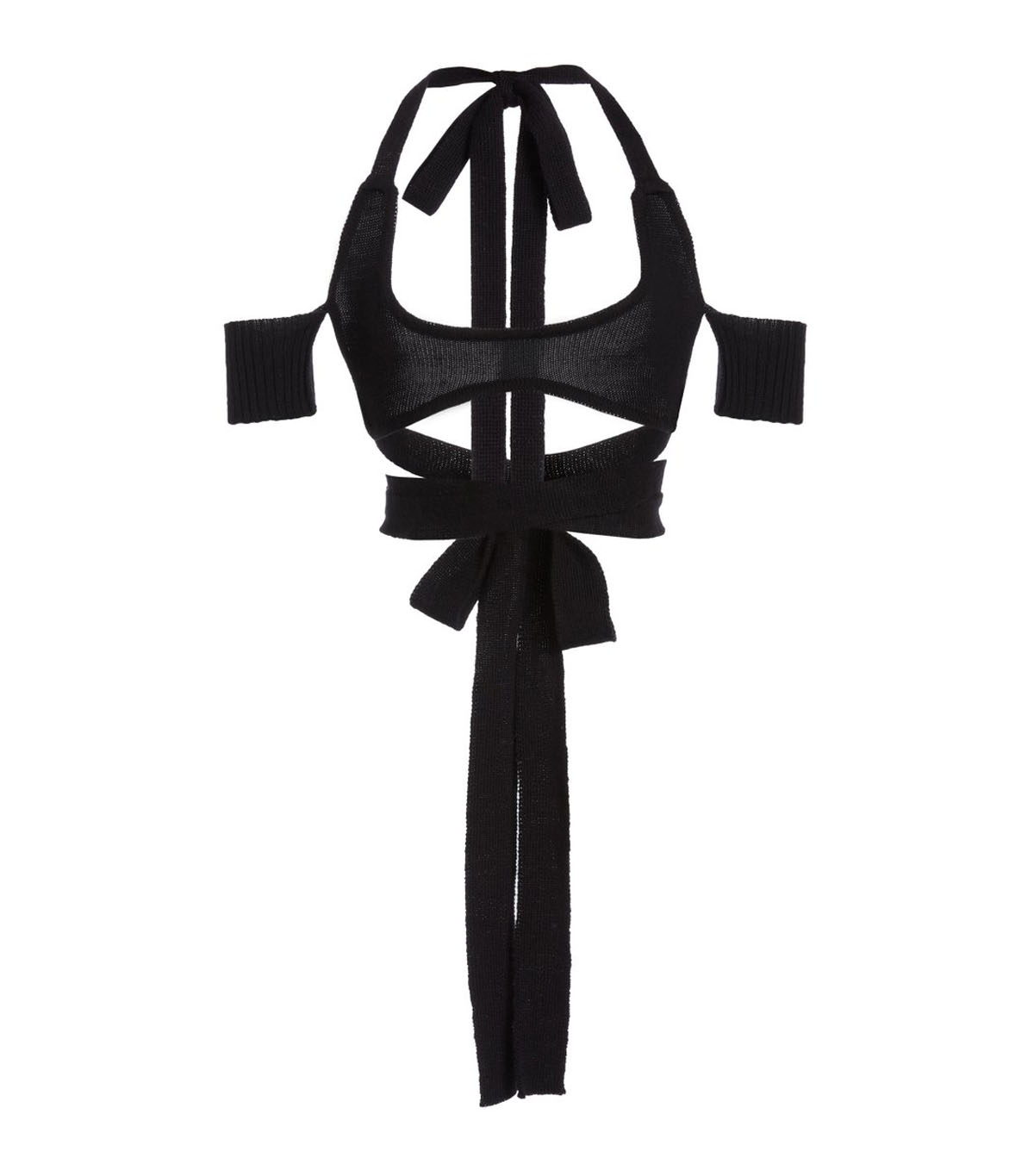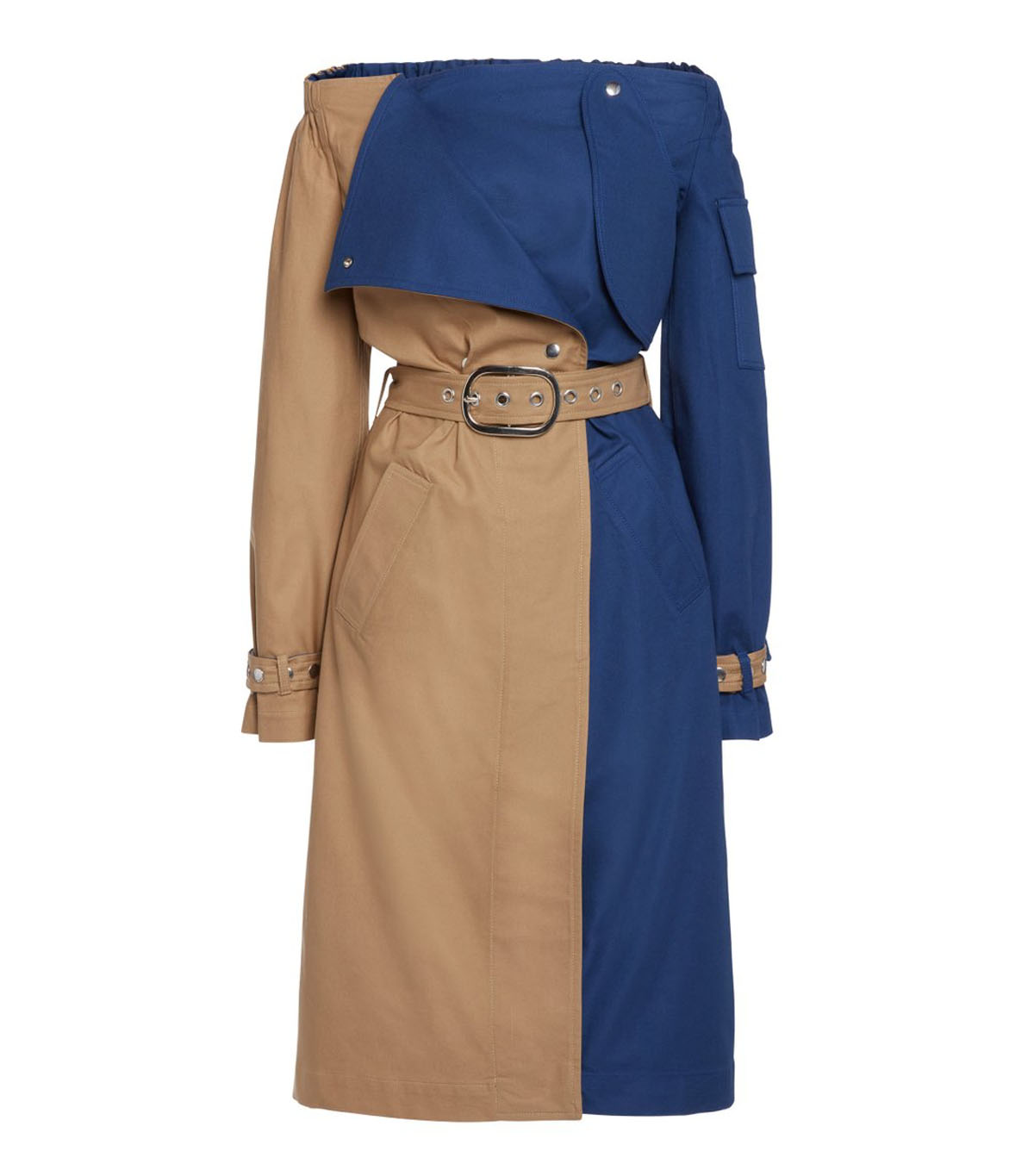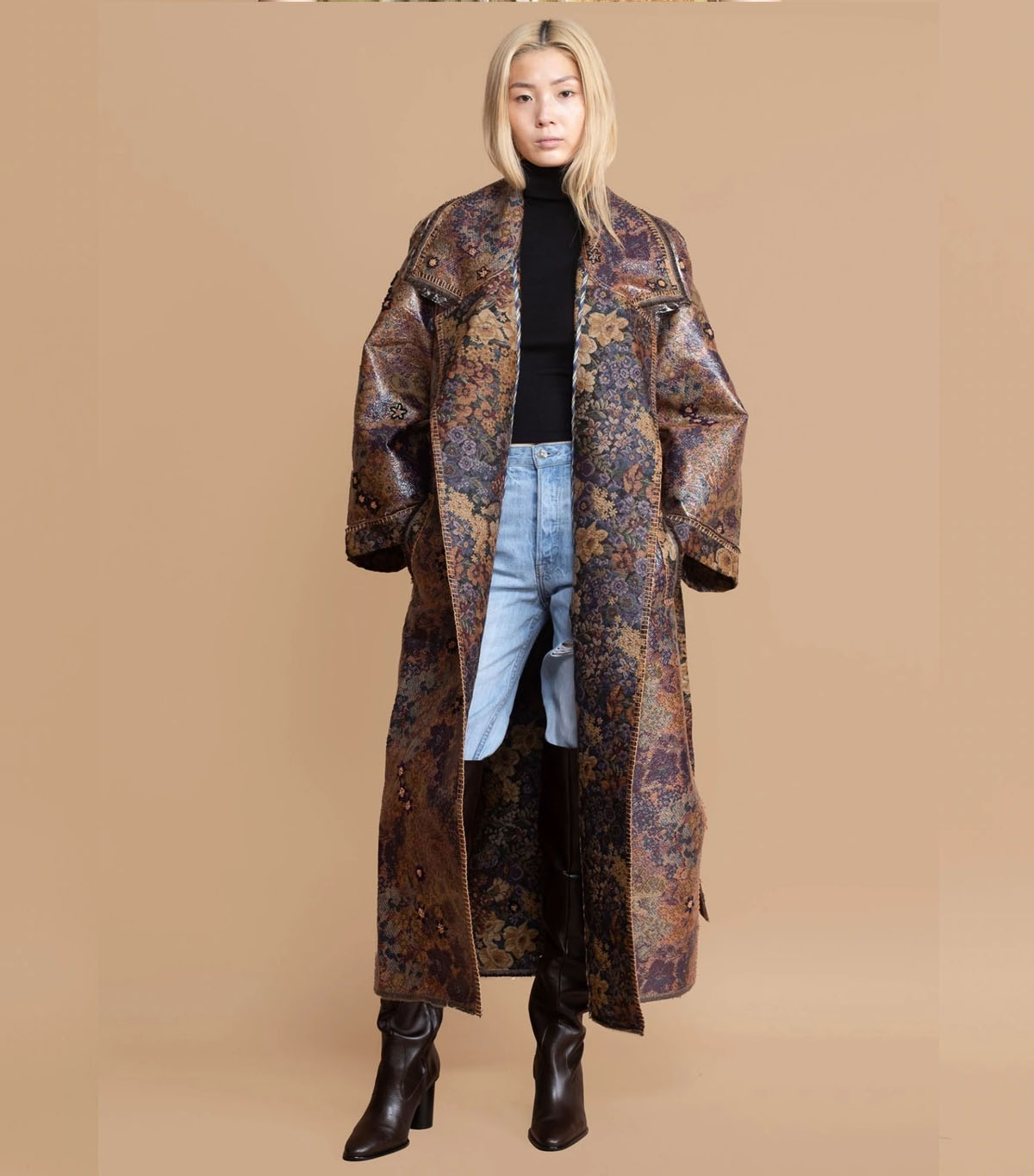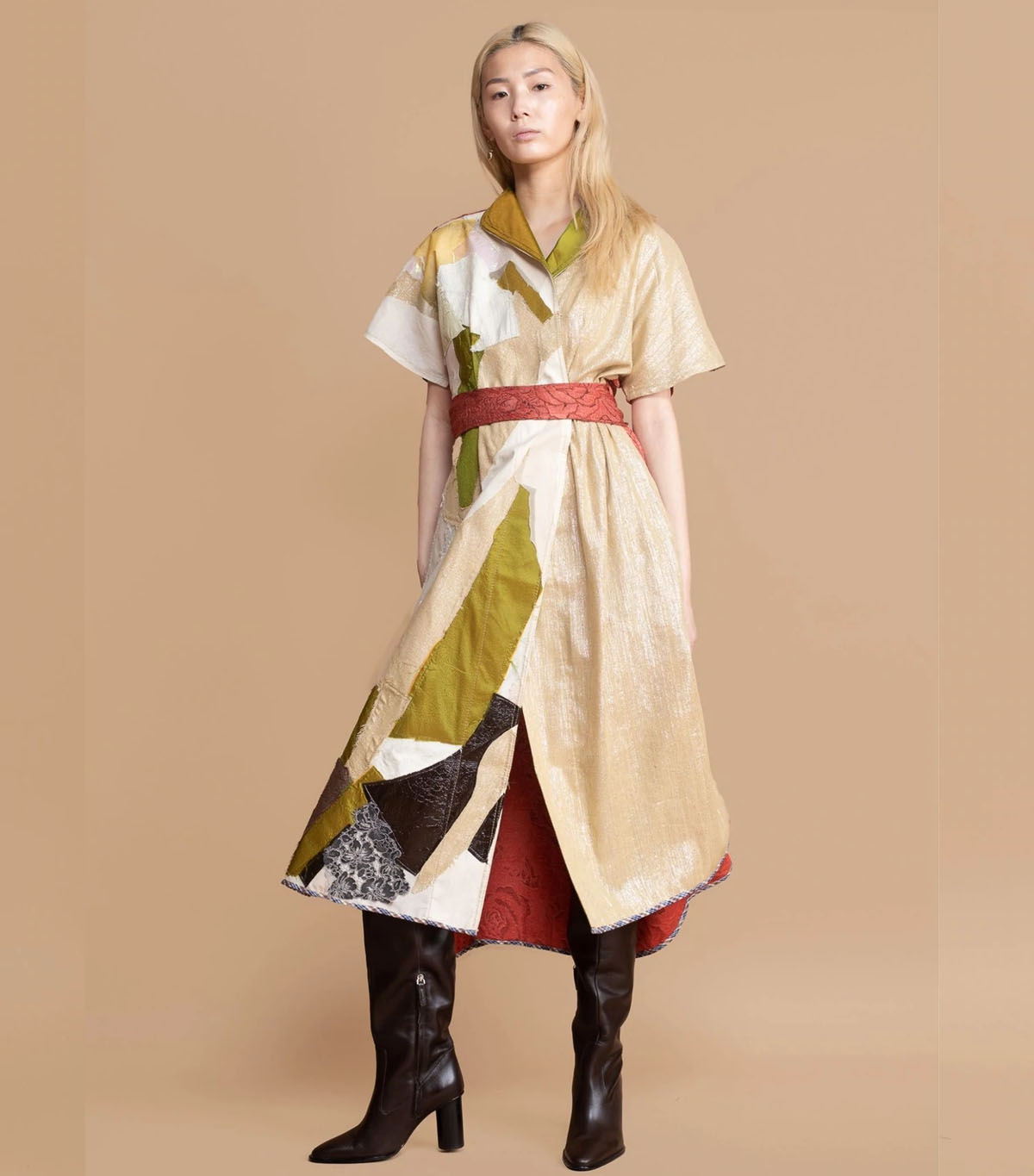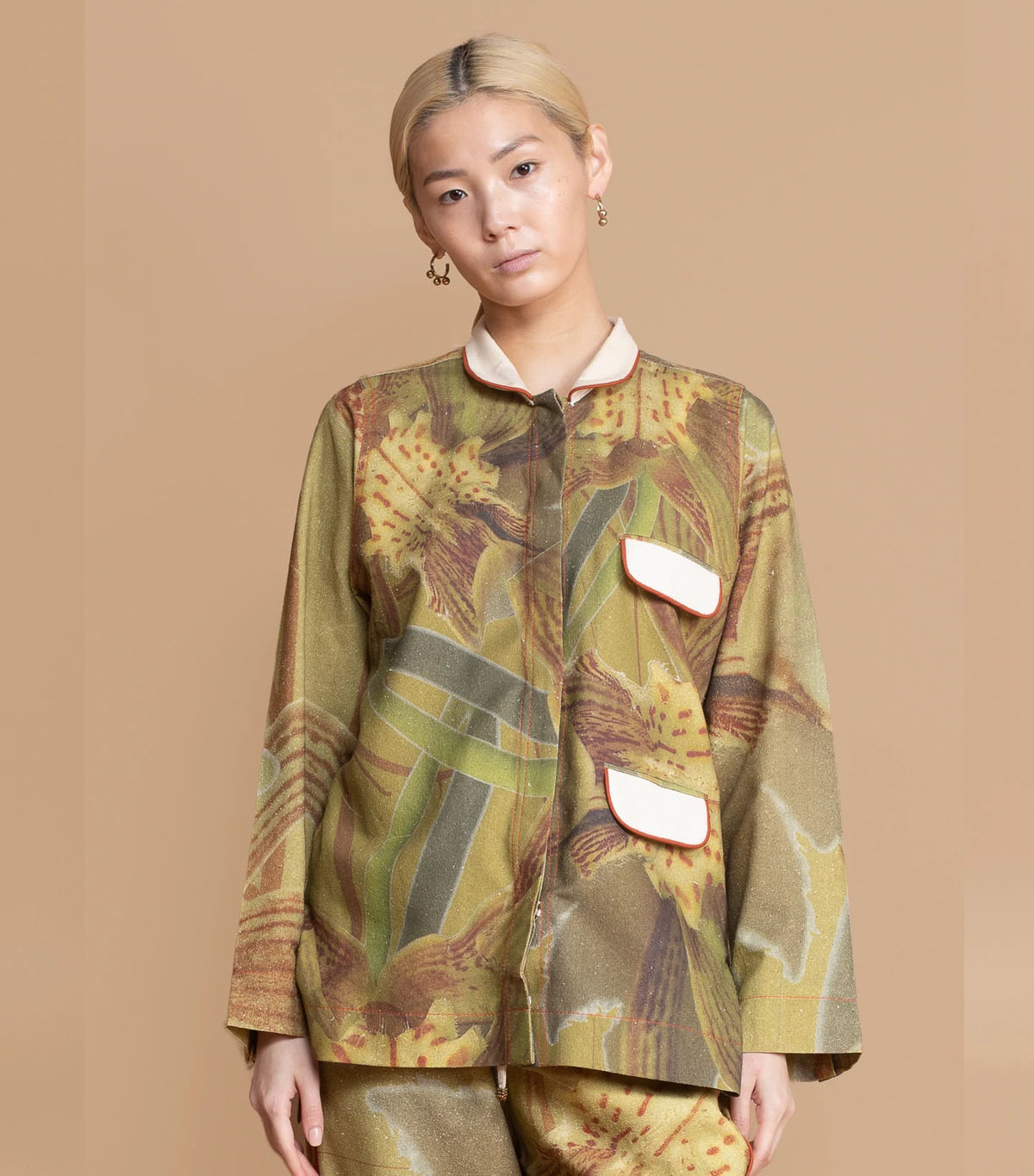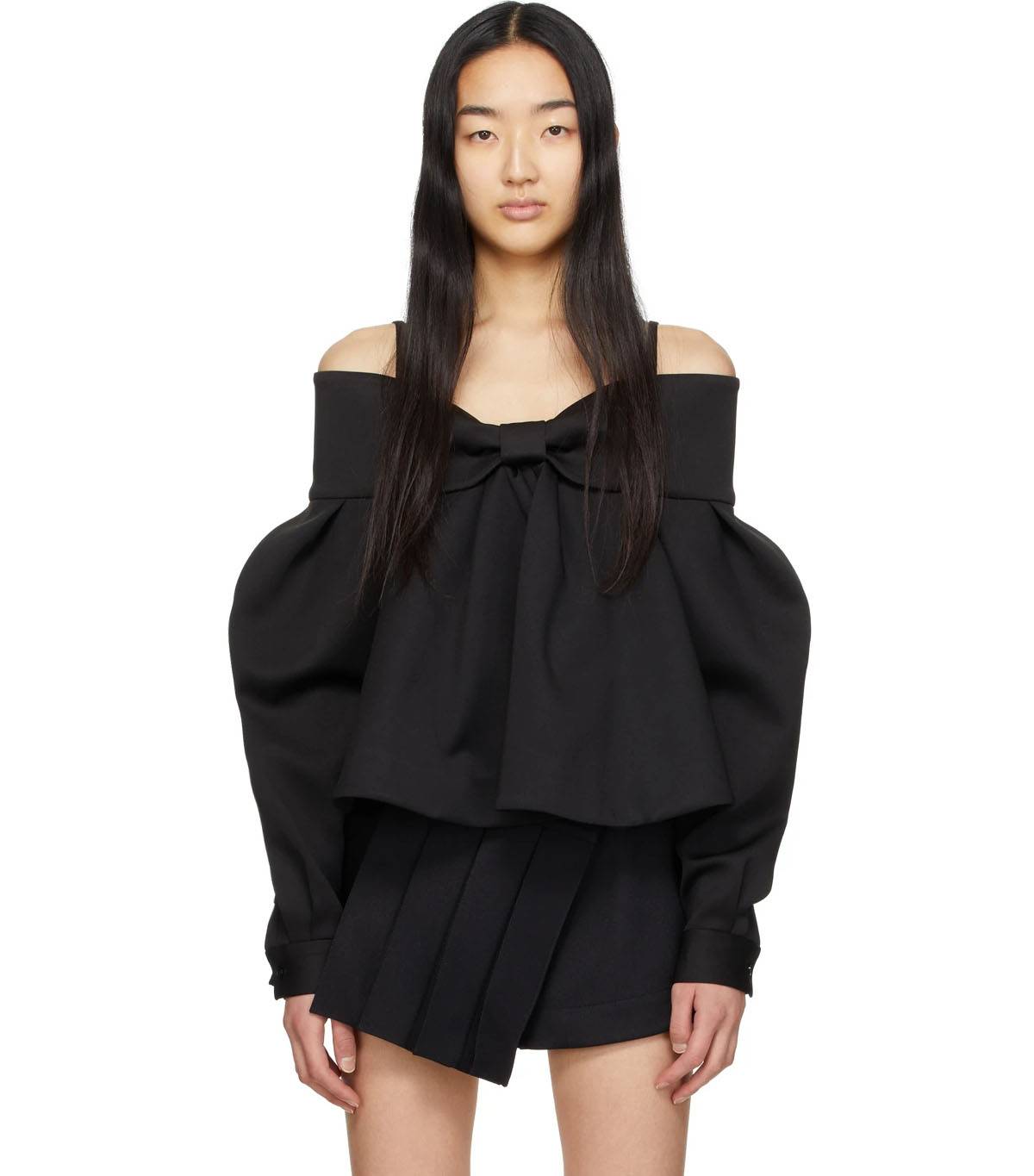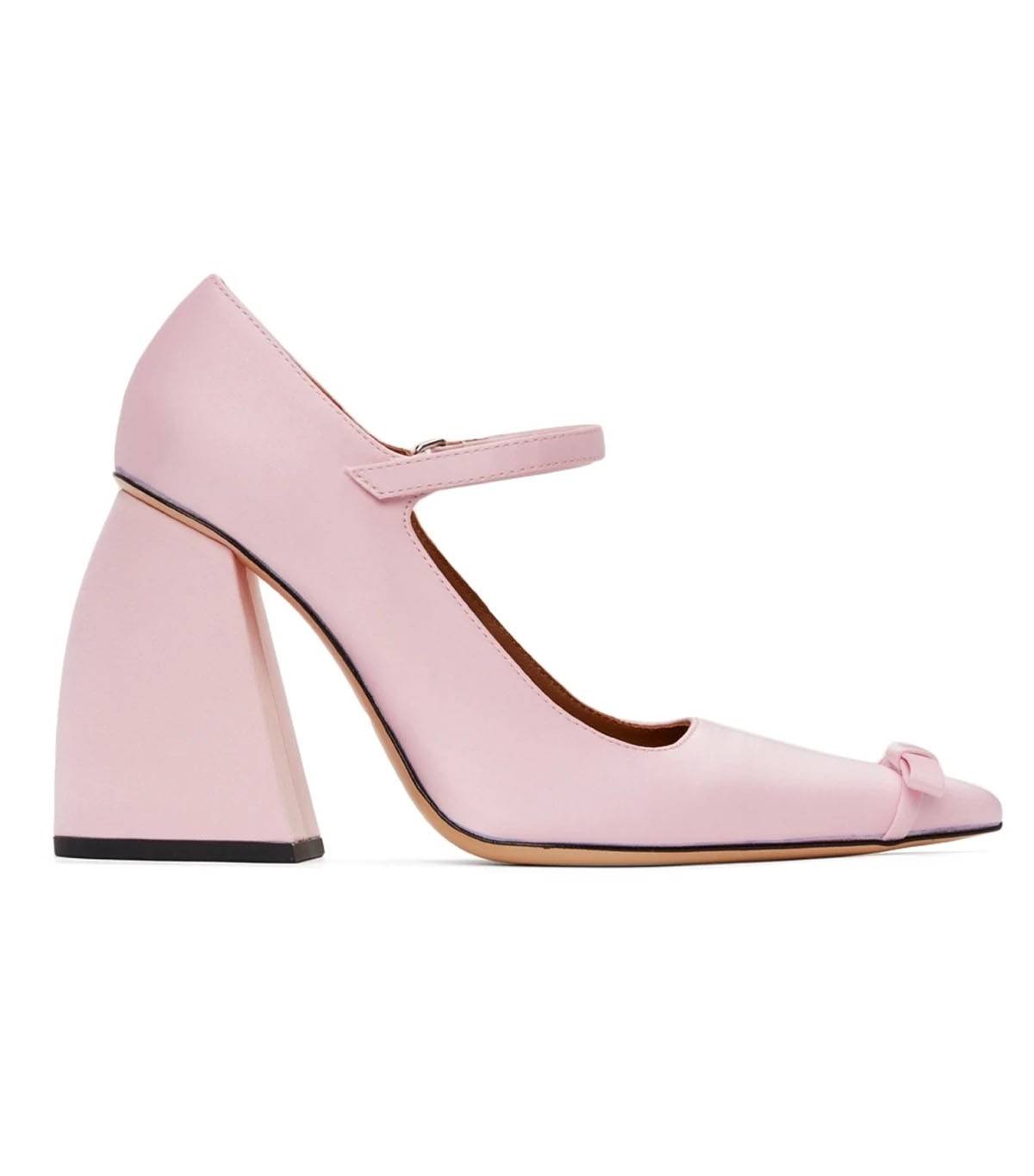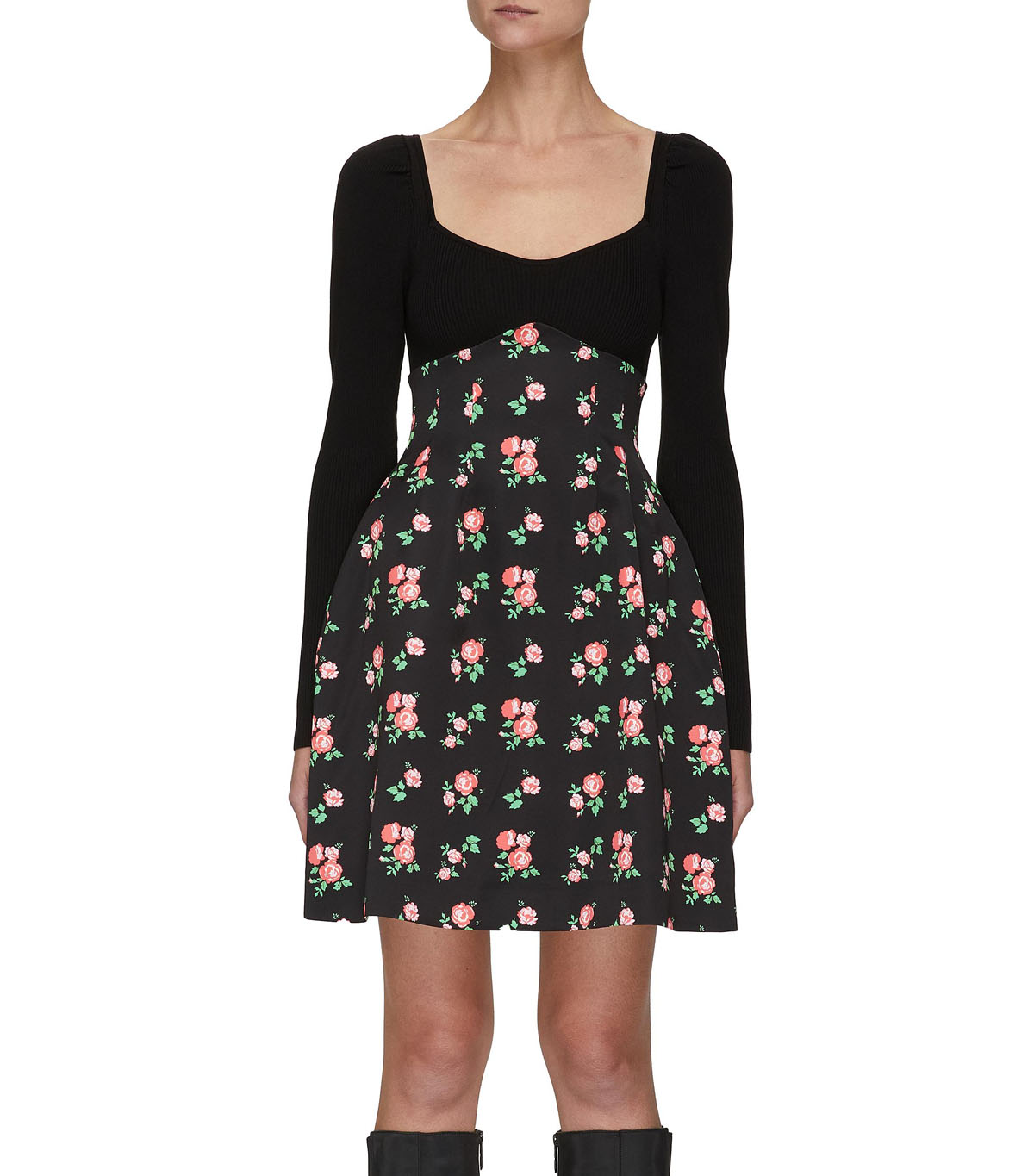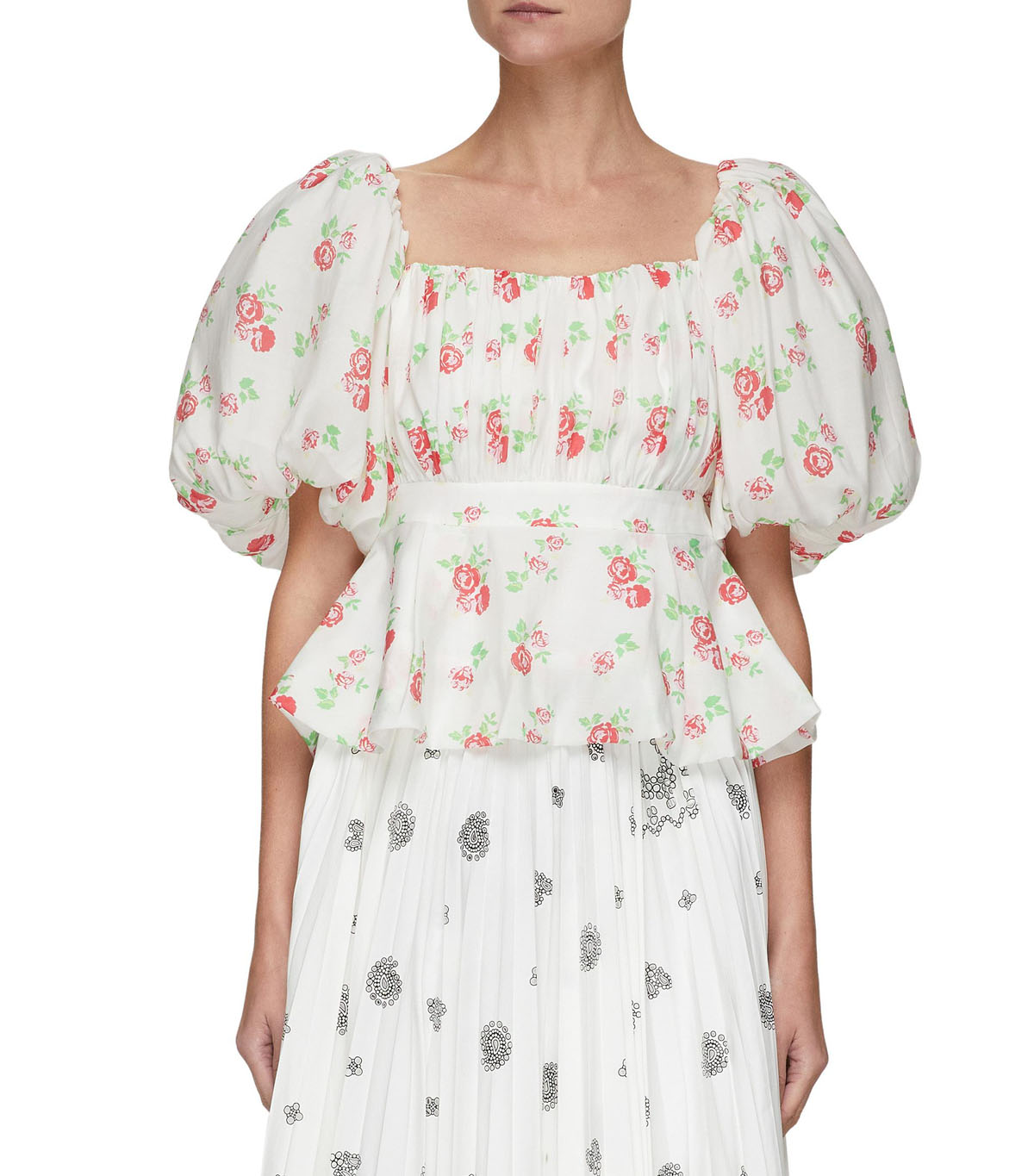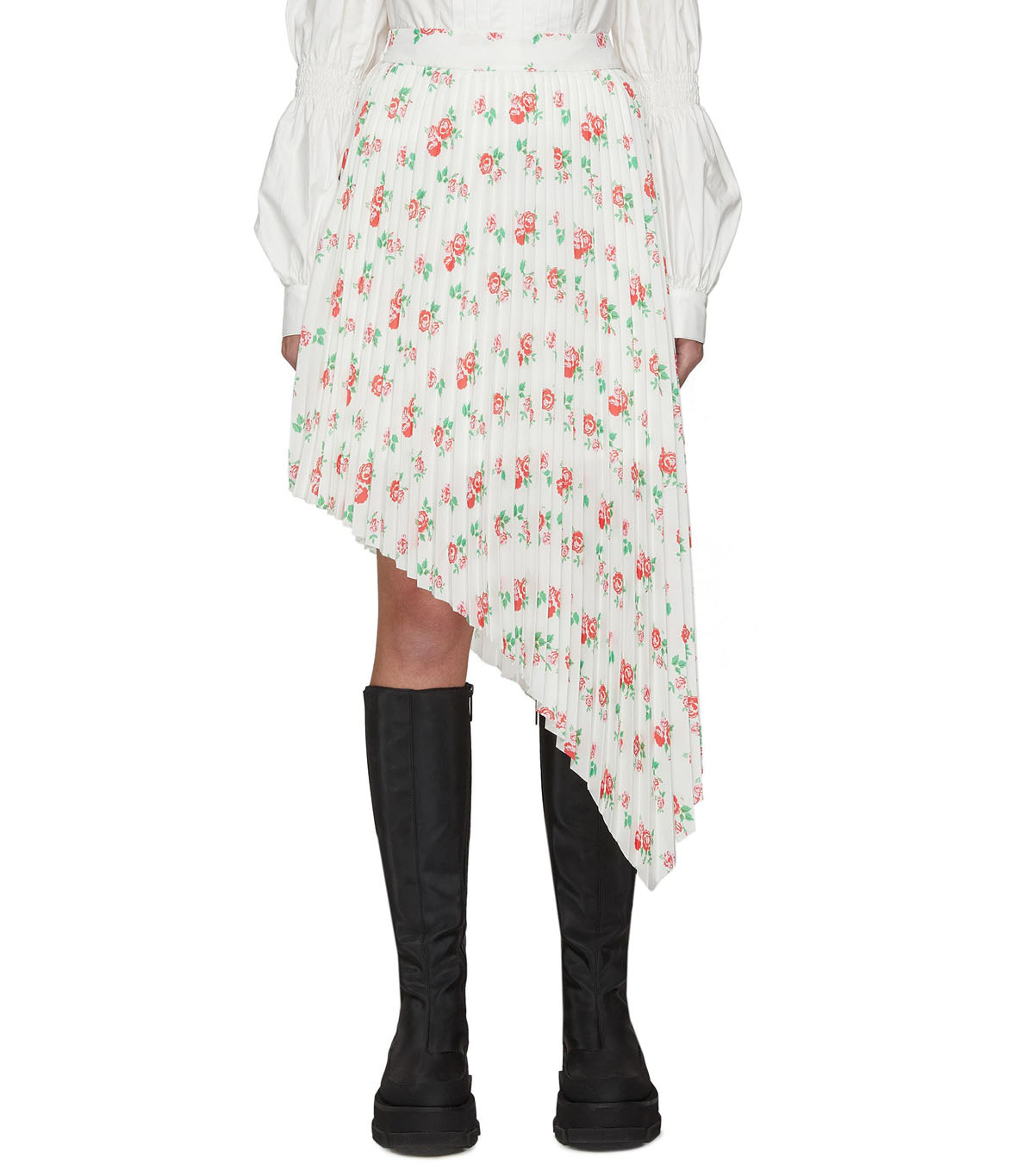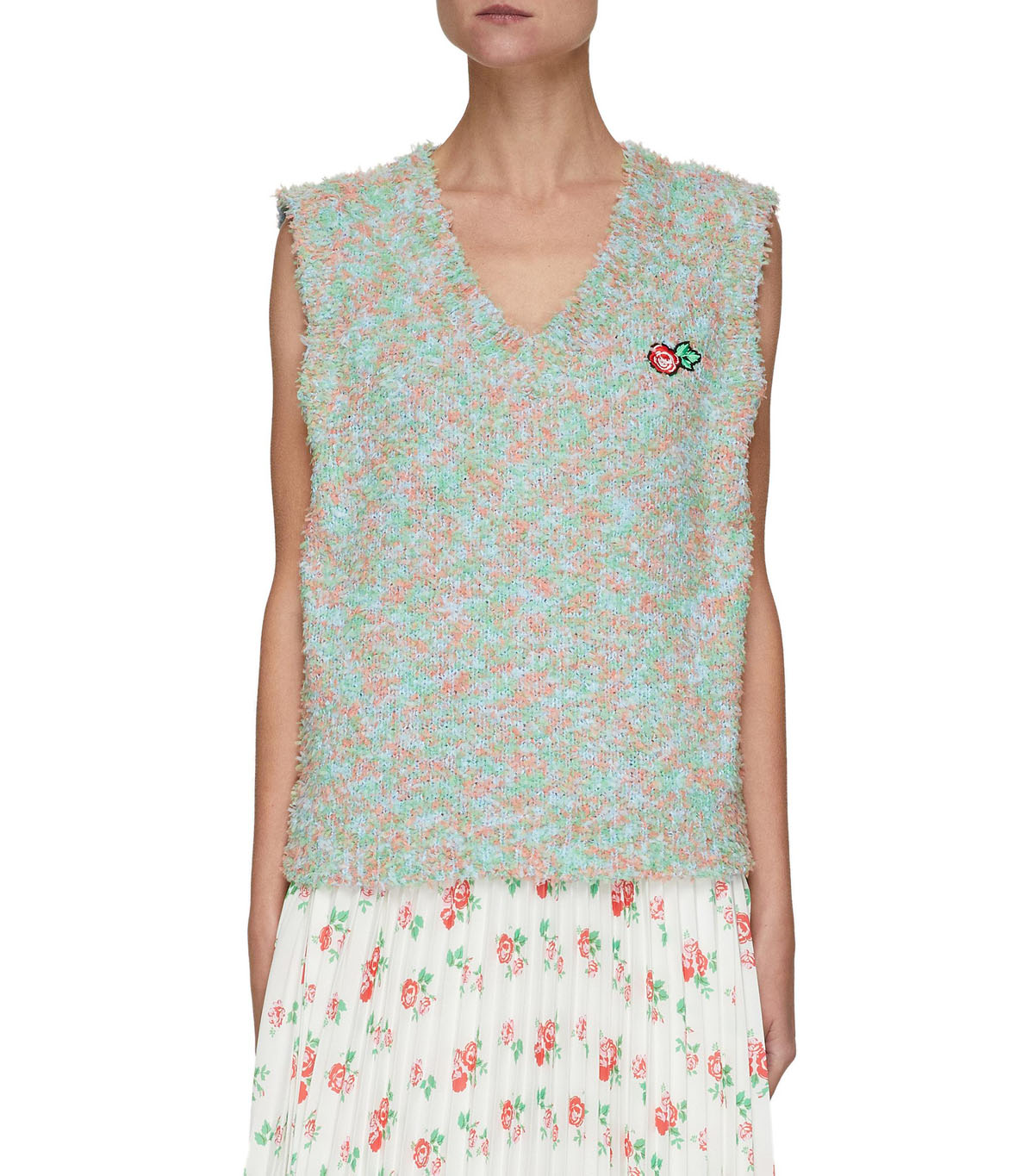Move Over, Paris and New York—These 5 Cities Are the Next Fashion Capitals

Anchored by the world's most established luxury labels, biggest publications, and heaviest-hitting celebrities in attendance, we were used to watching how the global fashion community religiously made its biannual pilgrimages to New York, London, Milan, and Paris (aka the Big Four). While the Western world's cumulative impact on fashion has yet to really waver (and we don't think it ever will), the industry is nothing if not ever evolving. It wasn't until the pandemic threw a wrench in fashion's MO that we considered what might lie beyond these four capitals. When COVID shuttered in-person fashion shows for over a year, the pandemic forced things to go digital instead. You could say that this created an opportunity for smaller markets to get some airtime and a slice of the industry's consideration, but the reality is that certain cities around the world have steadily been building their reputations as bona fide style sources for a minute now. And I think it's about time we give them our undivided attention.
The runway always has been rolled out globally (at present, Mercedes-Benz sponsors about 80 fashion weeks around the world), but more than ever, we're finding fresh design talent beyond the Big Four. In a post-pandemic world, shoppers have a newfound vigor for supporting smaller businesses. The average fashion person is no longer only clamoring to get their hands on the latest Prada bag. They're also perhaps after a leather coat from Georgian maker Materiel or a cutout dress from Lagos-based label Andrea Iyamah, items that signal to their sartorially minded peers that they, too, "get it."
With the industry peeling its focus away from the traditional system, five breakout fashion capitals are flourishing. Tbilisi, Georgia; Lagos, Nigeria; Mexico City, Mexico; Johannesburg, South Africa; and Shanghai, China are home to some of the most exciting new design talents on the scene right now, and well, we're not the only ones who think so. Major luxury retailers such as Moda Operandi, Net-a-Porter, and Farfetch have been busy expanding their rosters with fresh international designers, especially the names who call these five cities home.
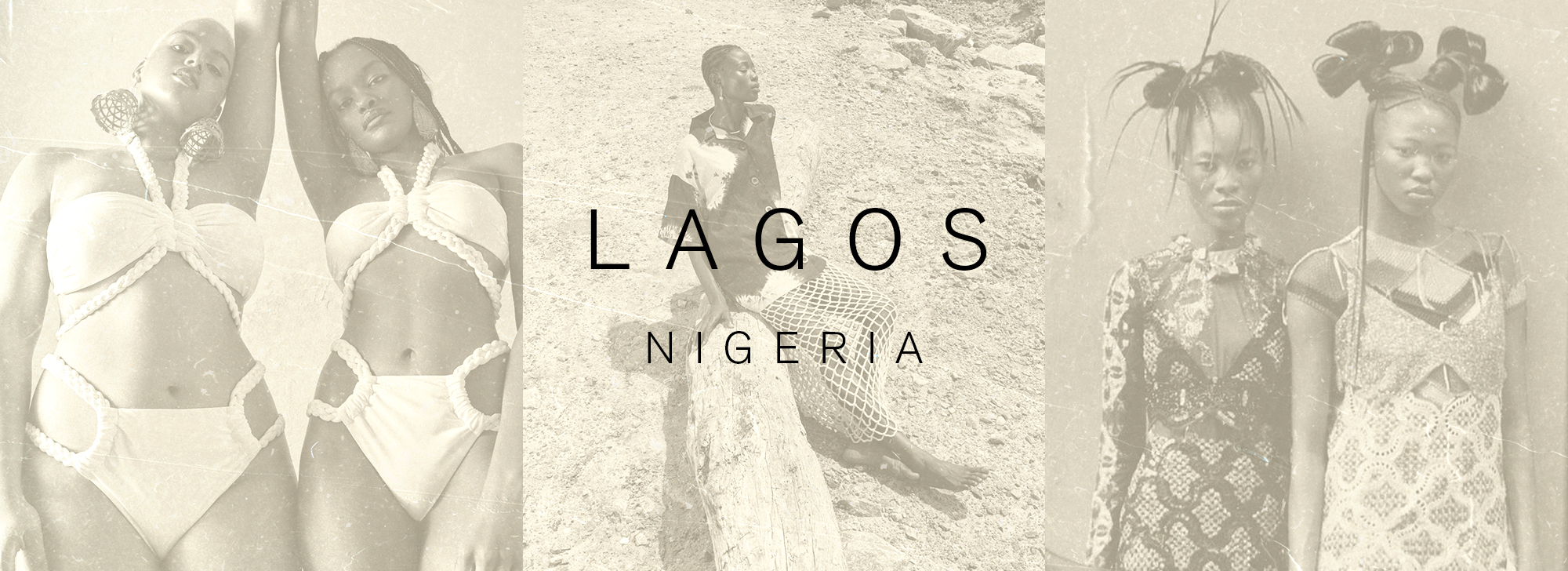
No other city on this list has experienced quite the meteoric rise to international acclaim that Lagos has. Since the Nigerian capital established an official fashion week in 2011, the rest of Africa and the world have taken note of the city's burgeoning fashion landscape. Lagos Fashion Week paved the way for a burst of more ready-to-wear lines and a move away from bespoke pieces, notes designer Andrea Iyamah. "Our client is always on the hunt for pieces that are not only unique but that tell a story," Moda Operandi's Lisa Ruffle says of Lagos's talent. "Bold prints, embroidery, and unexpected details are all hallmarks of these brands, and their elegant and high-quality pieces have certainly been a hit."
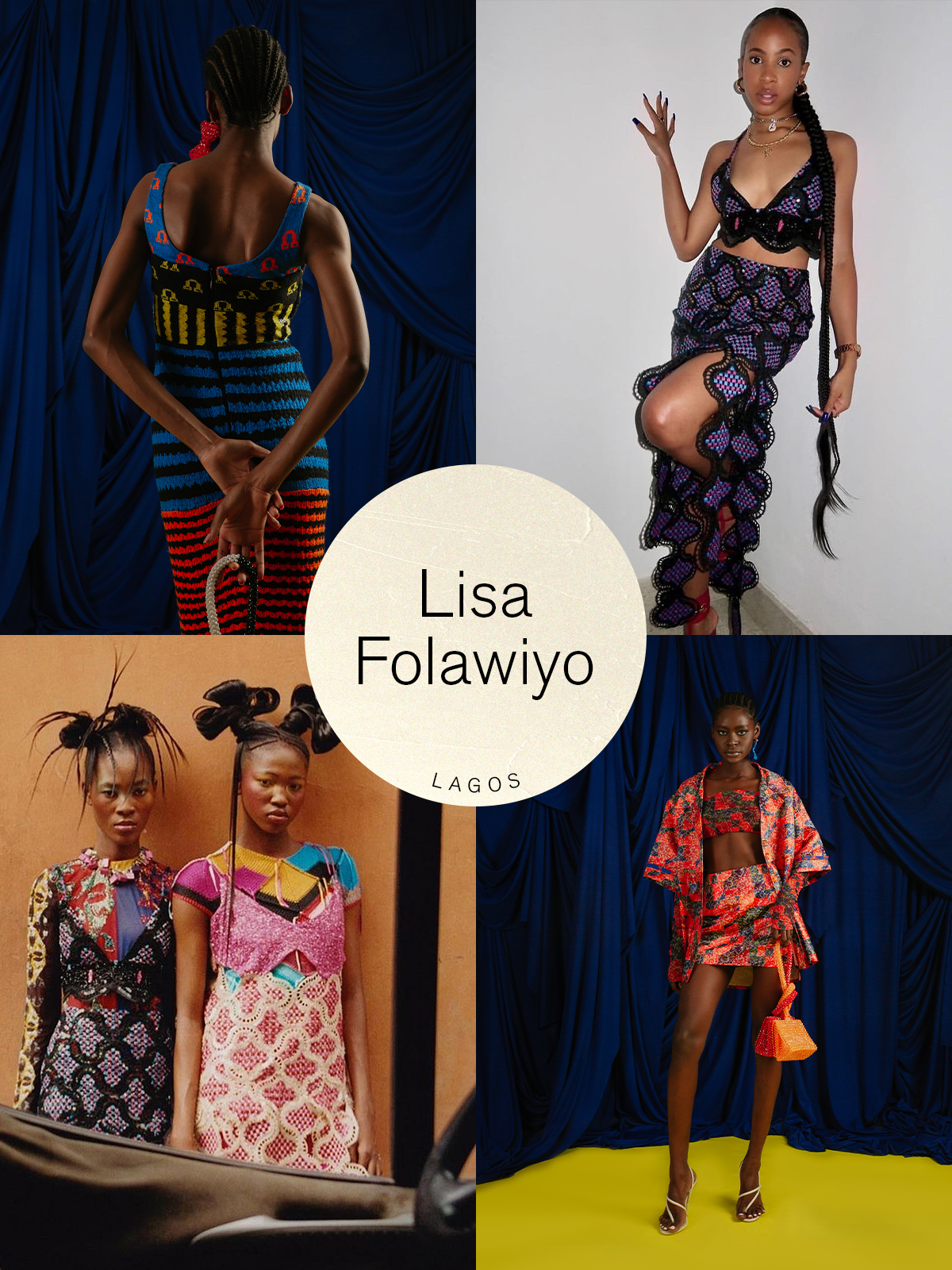
"The fashion scene in Lagos has a certain mystery to it," creative director Lisa Folawiyo tells us. "It's very edgy, flamboyant, energetic, rich, and colorful. The people, expressions, parties, experiences, culture all work together to define our scene." Since the start of Lagos Fashion and Design Week in 2011, Nigerian fashion has stepped onto the global fashion stage. The world is taking more notice of Nigerian designers, with both local and international buyers and retailers attending fashion week to discover new brands. Folawiyo notes that she's seen a considerable uptick in the press—publications such as Vogue, GQ, Elle, and Harper's Bazaar have featured a lot of Nigerian labels recently. "Lagos is definitely making its mark and has created a space for itself in the world," she says.
Folawiyo, who was born and raised in the city, agrees wholeheartedly that Lagos is becoming an important fashion capital. It's where both her brands—Jewel by Lisa and Lisa Folawiyo—design and produce from. In short, Lagos's influence looms heavy for the designer, who showcases her heritage and culture in every piece while keeping her designs fresh and modern. Folawiyo's mission is to innovate and create while harmonizing the old and new. "From the revolutionizing of the Ankara fabric to our exquisite hand-craftsmanship and artisanal work to the creation of new textures and shapes, we are about pushing reimagined ideas of the traditional and historical to create the now in fashion," she says.
As the industry leans toward sustainable fashion, we can look to Lagos and designers like Folawiyo who tap into traditional techniques that are environmentally responsible by nature.
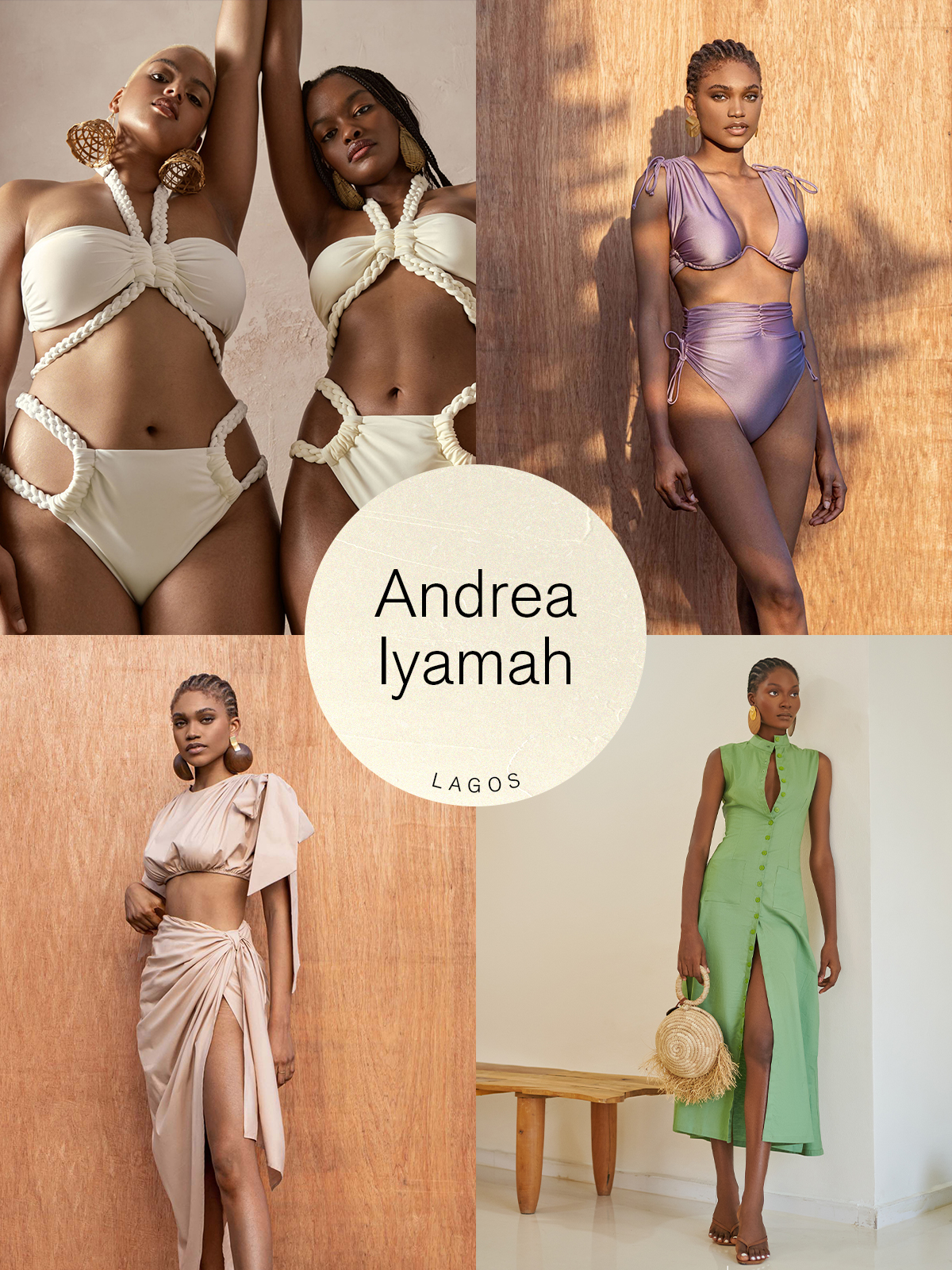
The path to global success can be a short and steep rise, but it can also take a slow and steady course. Nigerian designer Andrea Dumebi Iyamah took the latter. She founded her namesake label in 2011 as a celebration of her African roots and the cultures beyond them. Over the course of the last decade, the brand has garnered repeated recognition from the fashion industry for its resort- and swimwear. The designer has been featured in publications such as Vogue, Forbes, and InStyle, and her brand is widely acknowledged as the leading African resort- and swimwear label.
Today, Iyamah's ethereal swimwear sets and stunning billowy dresses have officially gone global. Retailers such as Moda Operandi, Farfetch, Shopbop, and Revolve have all recently added the label to their rosters, and while she's certainly well-known at home, Iyamah and her collections are just now starting to make waves around the world. For her spring/summer 2022 collection, the designer staged her first solo off-site show on the beachfront in Lagos, a production that she designed herself alongside the brand's creative director, William Ukoh.
Iyamah started her brand in Canada while she was in high school, and while operations happen in both Lagos and Toronto, the line has Lagos's warm climate in its DNA, with sumptuous skirt sets, airy cotton dresses, and beautiful swimsuits making up the brand's core offering. "Even though I gather inspirations from around the world, growing up here, the beautiful seaside landscape and vibrant energy you see in the brand are deeply rooted in Lagos," she says. That international vibe is not lost on Iyamah's customers, who look to the elevated resortwear to anchor their wardrobes for vacations the world over.
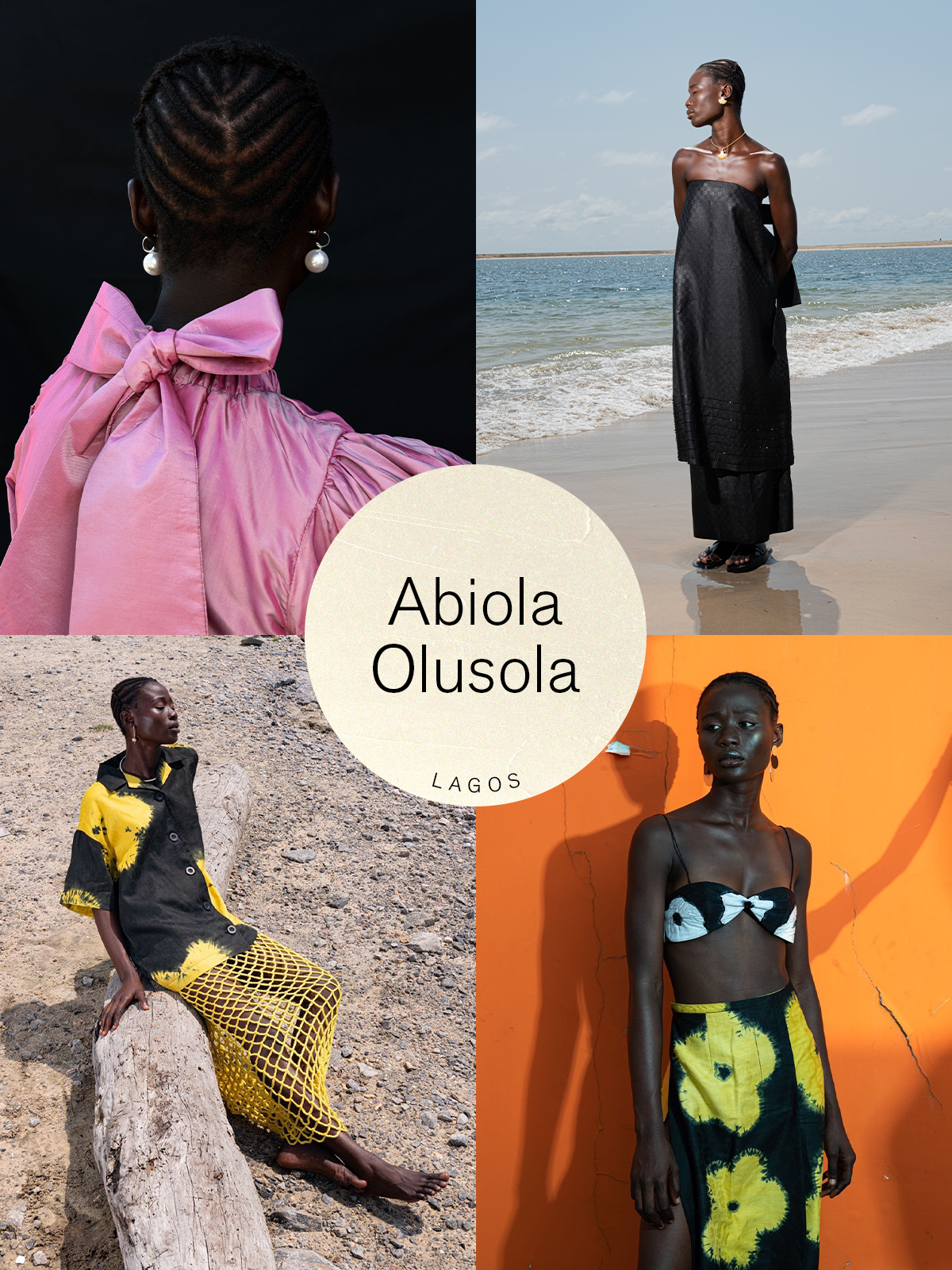
Quiet confidence, subtle sensuality, and a pragmatic nature are the descriptors Nigerian designer Abiola Olusola uses when she tells us about the ethos of her namesake clothing line. Olusola has been working on her brand since 2017, returning to her hometown of Lagos after studying fashion design in Paris. Although she was born in the quieter industrial city of Ibadan and moved to Lagos with her family as a teenager, she admits that the city has an undeniable influence on her design aesthetic. "If you slow down and look at the architecture in the older parts of Lagos—like Lagos Island, Yaba, Ebute Metta—it is reminiscent of a different time. I am very nostalgic about the past, and this is reflected often in my designs and inspiration," she says.
Olusola's perspective may be steeped in her Nigerian heritage, but the clothing itself resonates far beyond the country's borders. With boxy-cut shirting and exciting but wearable prints, Abiola Olusola is the brand you pack for vacation but end up wearing just as much at home. As for Olusola's personal favorite? It would have to be the Awe Dress. "It's such an easy dress," she notes. "It's a blend of silk and modal, and it was hand-dyed in Lagos. It's an embodiment of everything I like—ease, detail, craftsmanship, beautiful fabrication, and versatility."
The Folklore and Industrie Africa, two retailers specializing in putting African designers on the map, have both picked up the brand, and it's only a matter of time until more follow suit. Olusola admits to having a lofty set of goals for herself, including being short-listed for the LVMH Prize, being stocked at global retailers like Net-a-Porter, and dedicating an entire building for her brand's HQ.
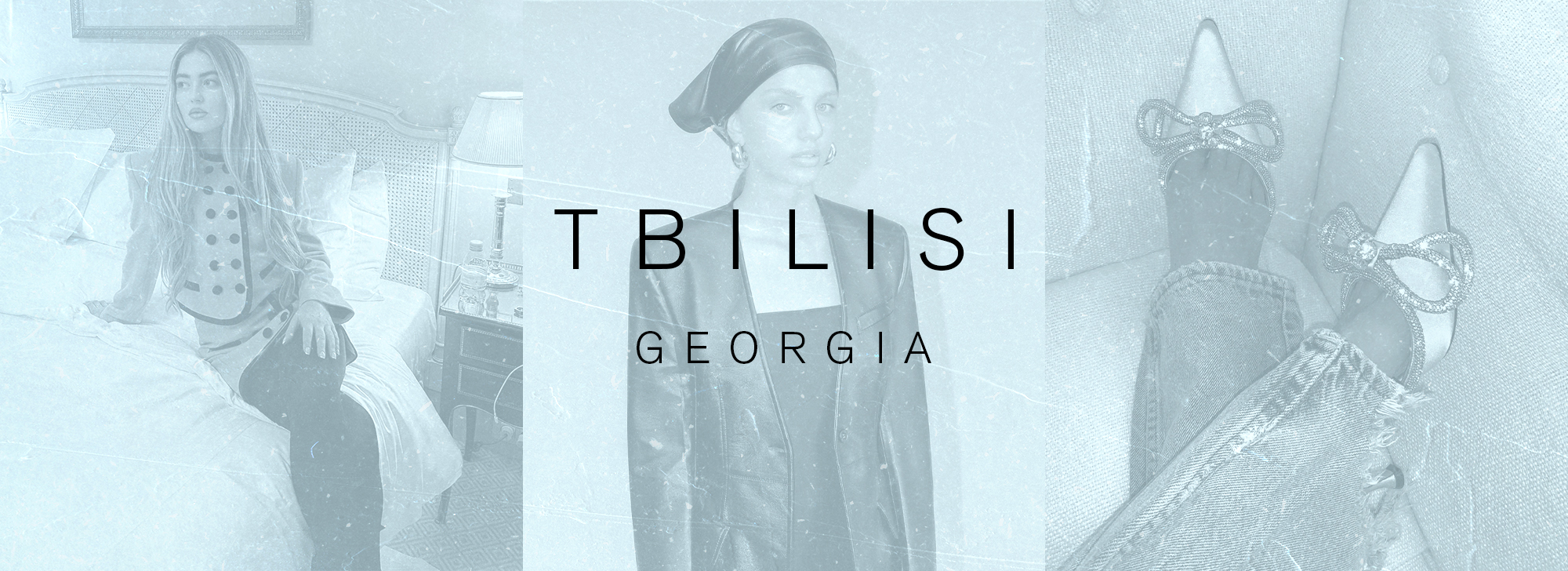
Tbilisi may be geographically adjacent to Western Europe's fashion capitals, but culturally speaking, the Eastern European city and capital of Georgia has a distinct perspective you won't find in Paris or Milan. "Georgia is one of the oldest countries in the world with a particularly diverse culture," note Nina and Gvantsa Macharashvili, co-founders and creative directors of Mach & Mach. The country borders Europe and Asia, and there's a long history of enduring conflict. Because of it, the creative community has channeled a spirit of innovation and self-expression. According to Materiel CEO and founder Maia Gogiberidze, Tbilisi itself was always a hub of artists and creatives. "As we keep evolving the local scene, we will see the emergence of more prominent industry figures whose voices will be critical in paving the road for the next chapter of the fashion narrative," she explains.
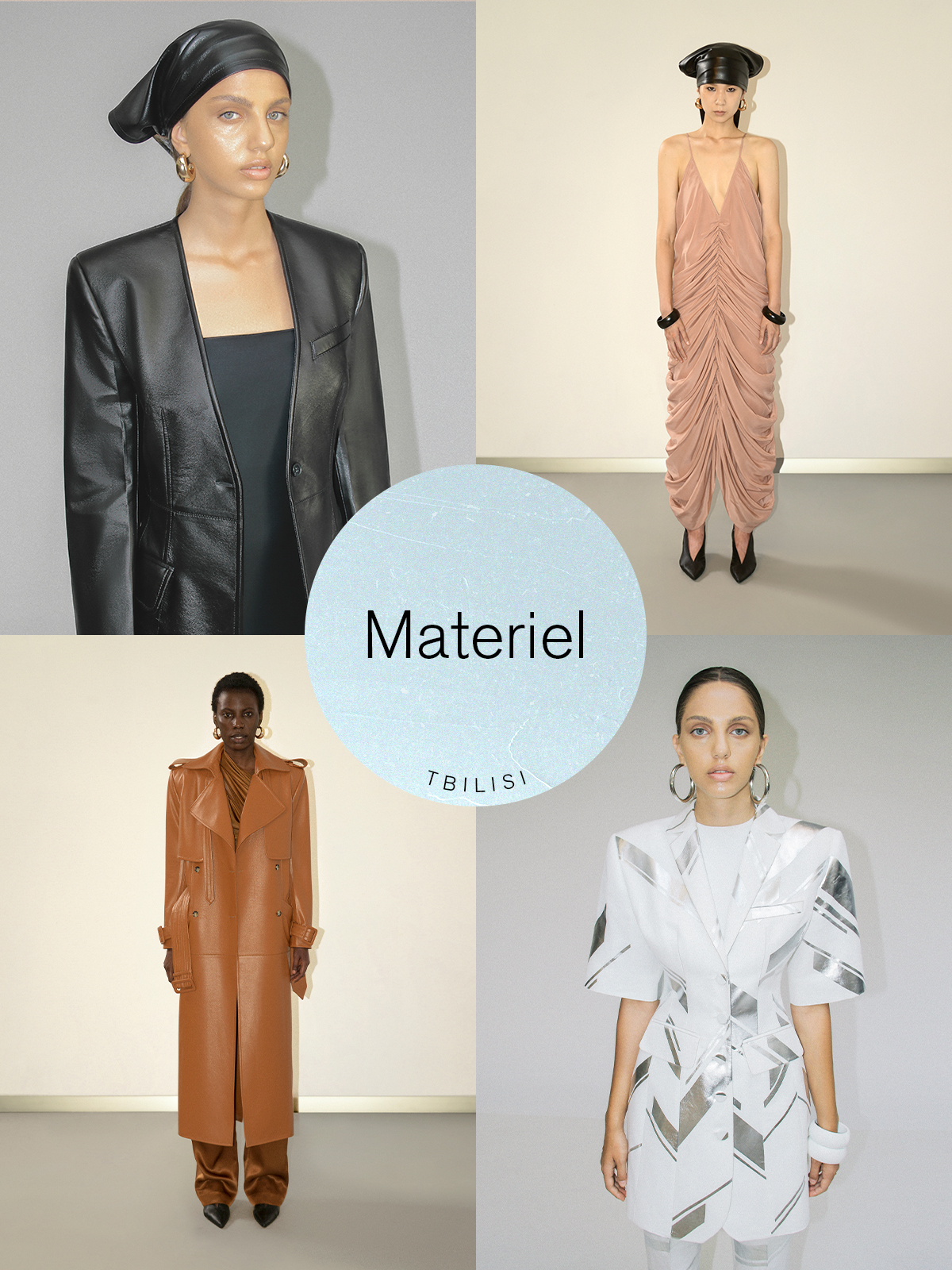
Born and raised in Tbilisi, Gogiberidze spent much of her life in New York before returning home to launch Materiel in 2014. The central vision of the label has always been to support the growth of the local fashion scene by empowering young Georgian designers, she explains. By taking a family-owned apparel factory and applying the minds of local design talents, Materiel brings to life a line of sharp tailoring and exquisite leather separates that are uniquely Georgian.
"In most of the collections, you can notice a bit of rough, rigid lines and forms, which associates with the aesthetics of the '90s, one of our biggest sources of inspiration. We try to emphasize and understand people, but especially women, through our silhouettes," Gogiberidze says. "An ambitious, strong, and forward-looking woman is what feeds us when creating Matériel staples." The staples in question include the label's leather trench coat, which represents the signature brand aesthetic to the fullest, according to Gogiberidze. She notes that Materiel's outerwear, in general, is meant to showcase the elegant shapes of a woman, appearing strict and even masculine to create a paradoxical effect. "It is also nice to know you are wearing something recycled as if you are wearing it with a clear conscience," she concludes.
Fans of the ready-to-wear line's exploration of feminine and masculine energies have more to anticipate, as Materiel is currently working on expanding into accessories, including sunglasses, jewelry, and, most exciting of all, shoes and bags.
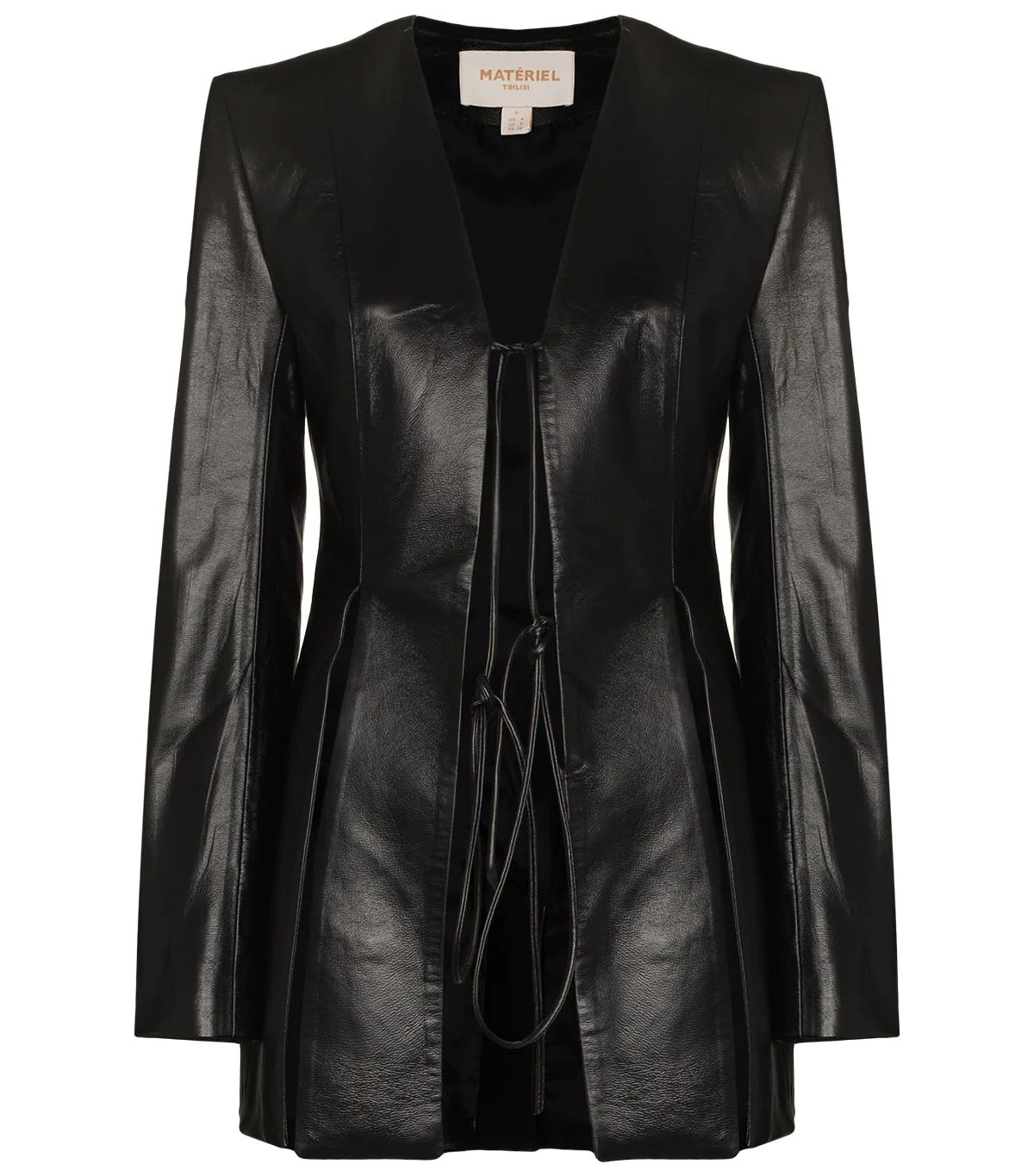
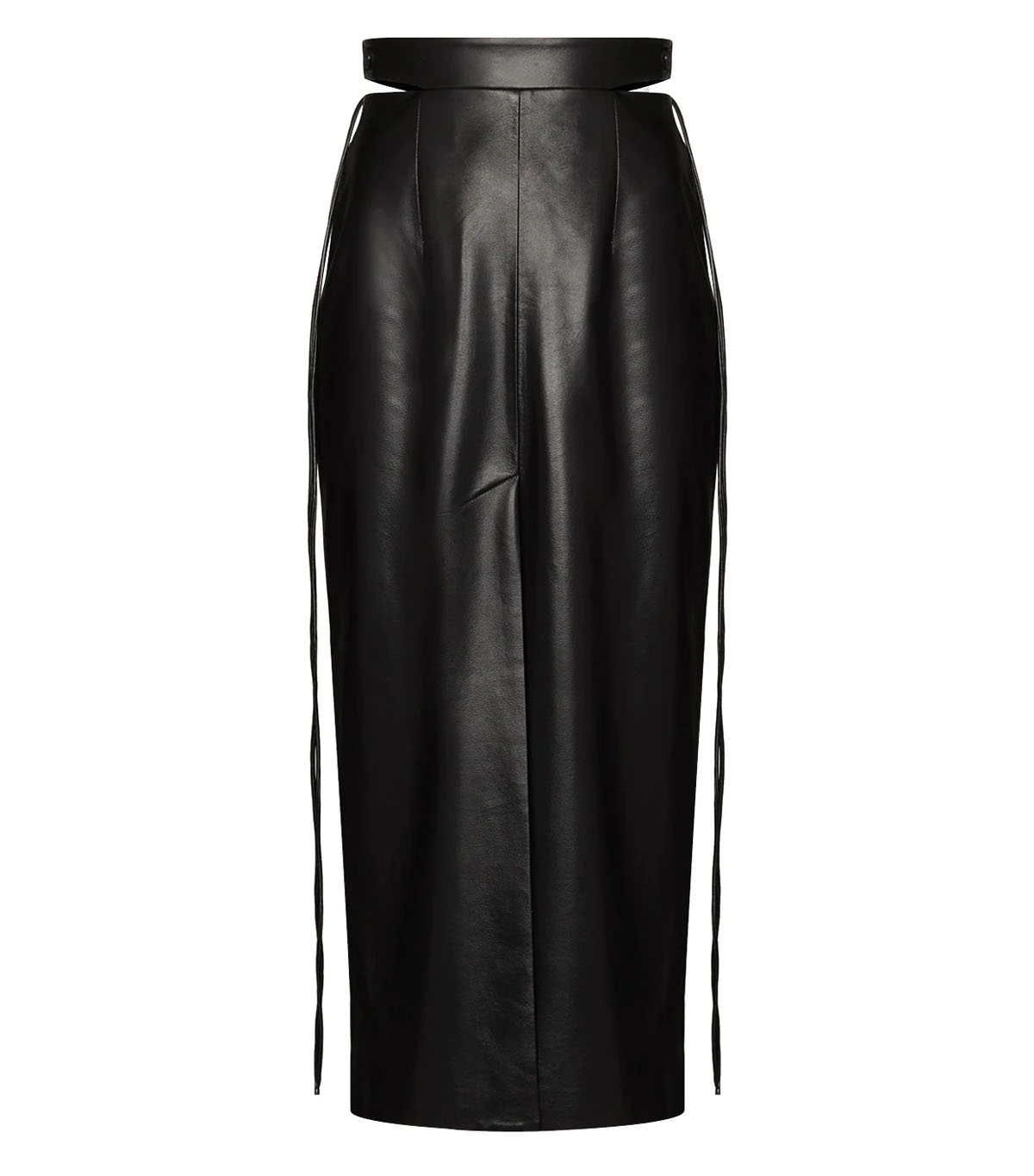
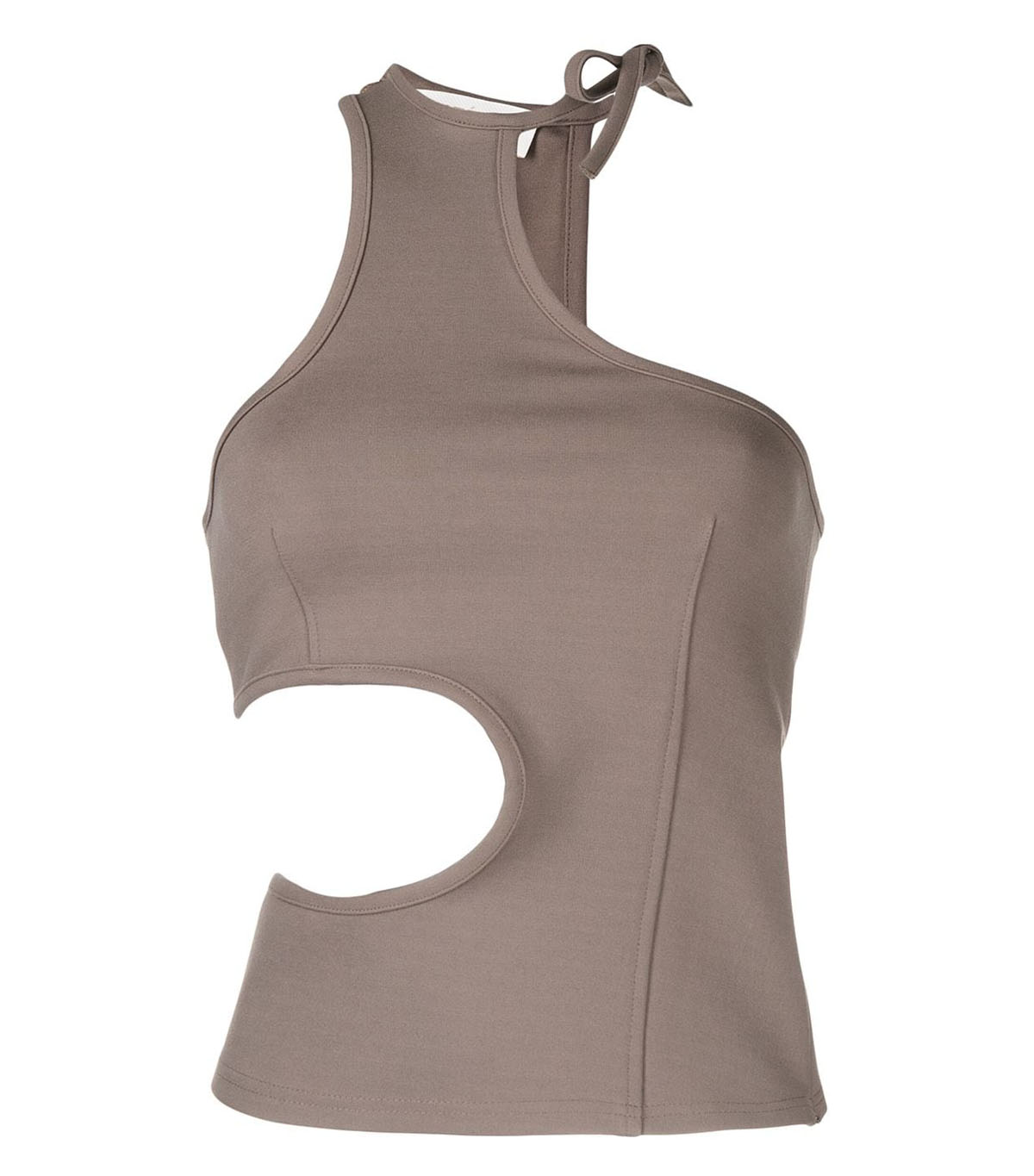
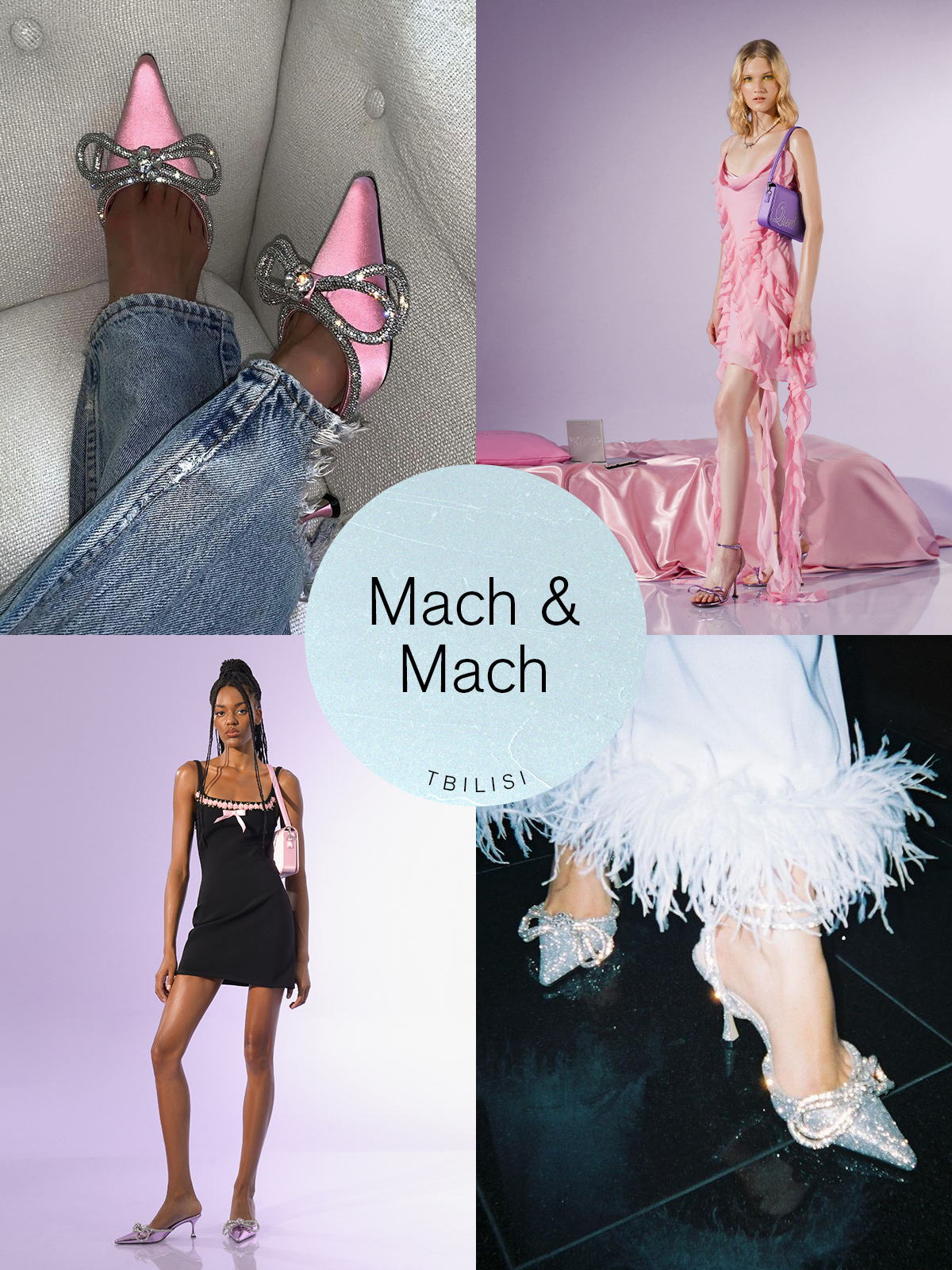
Mach & Mach has had quite the year. The brand's crystal-embellished heels absolutely lit up our social media feeds in 2021 with their unmistakable bow-tie details and bright candy hues. The heels have officially earned Hollywood's stamp of approval, as celebs such as Megan Fox and Kylie Jenner have added them to their closets. We even crowned them an It Item of the year. Thanks to the resurgence of early-aughts aesthetics, the Georgian accessory label has really put itself on the map.
Launching in Tbilisi, Georgia, Nina and Gvantsa Macharashvili spend a lot of time designing in Paris. They note architecture and French street culture as inspirations for the line. Although, they're just as often inspired by their Georgian heritage as what they see around them. Echoing the sentiments of Matériel's founder, the two are passionate about ensuring that Mach & Mach stands for more than the Cinderella heels the brand offers. "We want our brand to help inspire the younger generations in Tbilisi and ensure that Georgia is a creative force to be reckoned with," they shared.
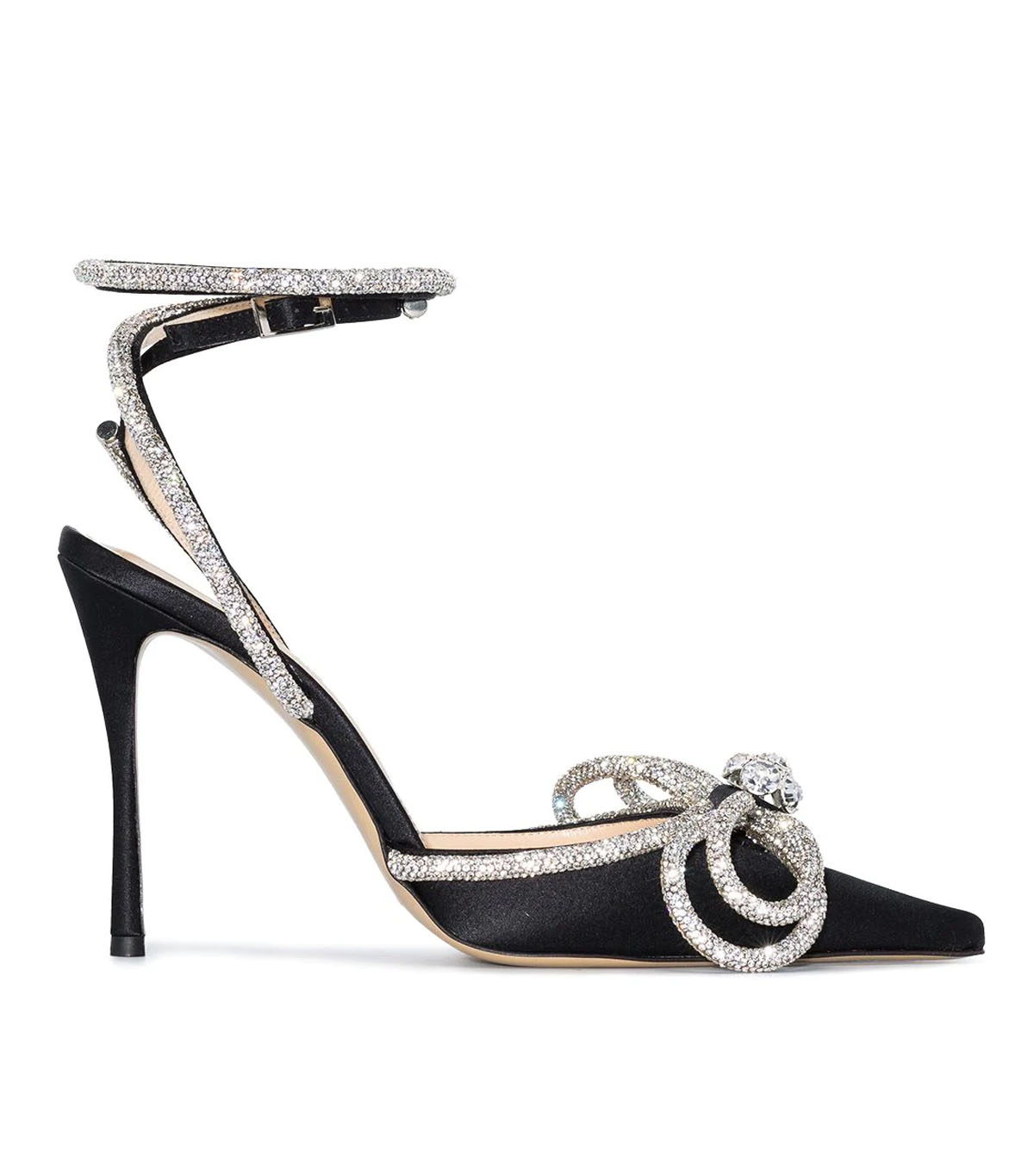
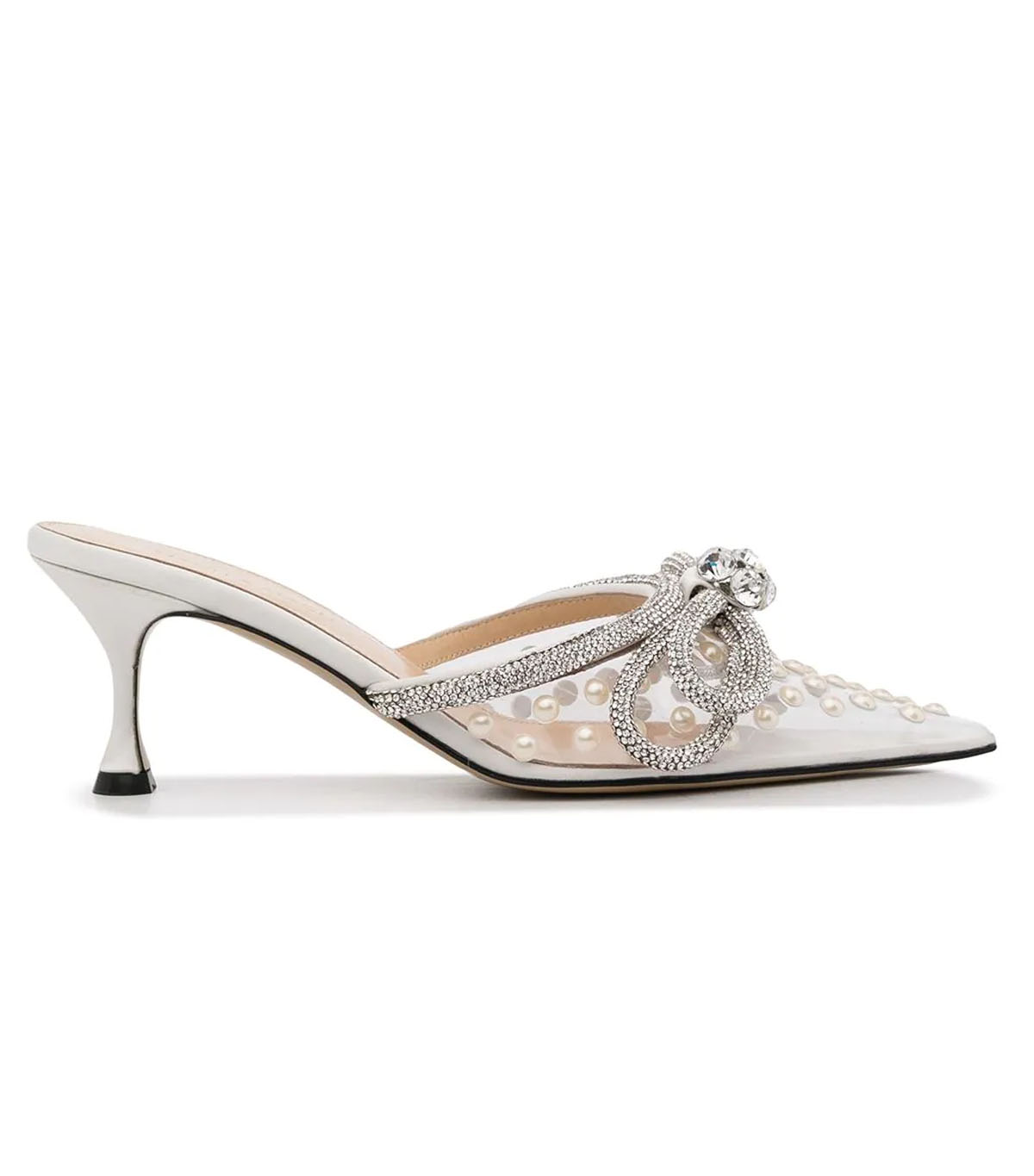
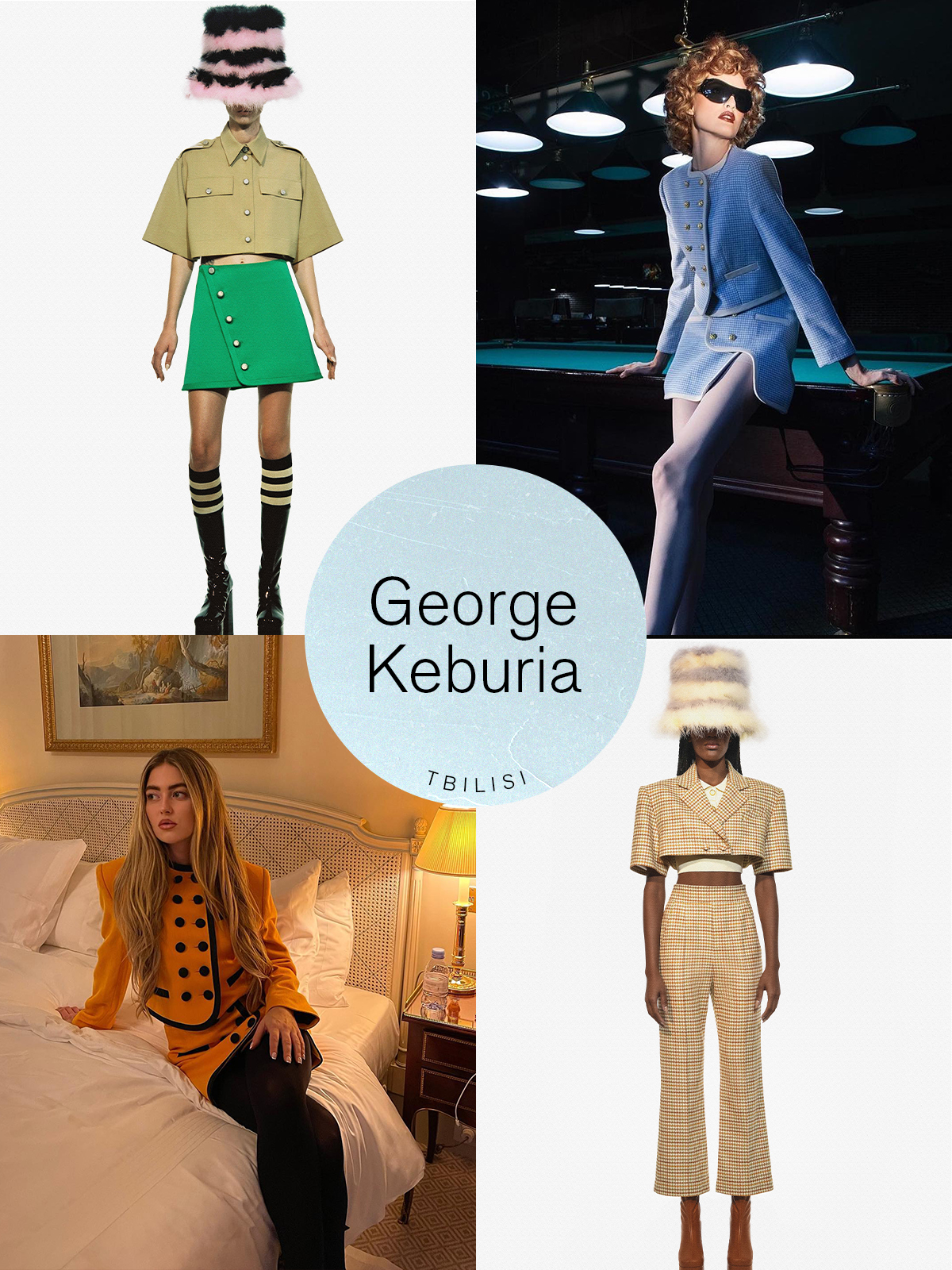
Working from Tbilisi has its perks and disadvantages, designer George Keburia tells us. Several years ago, fashion was practically nonexistent in Georgia. Mercedes-Benz Fashion Week Tbilisi was held for the first time in 2015, and it was the first time that international guests attended and covered the shows. Since then, the Tbilisi fashion scene has successfully gained global attention, but being located farther away from all major fashion capitals, Keburia remarks, means that it takes much more effort to be heard.
Keburia adds that the arrival of MBFW wasn't the only pivotal moment for Tbilisi. For many in fashion, the capital city is synonymous with another major player: Demna Gvasalia. The Balenciaga creative director and Vetements co-founder who hails from the Georgian capital also helped put it on the map. After the so-called Demna phenomenon, as Keburia coins it, interest in Georgia rose dramatically, and suddenly, Georgian designers were greeted with a global audience. "I think that Georgian creatives were well prepared to meet the international interest because of the fresh and interesting collections that designers are presenting as well as a strong street style scene," Keburia says.
Keburia is certainly one of them. His collections revisit what may be called "dusty" vintage wardrobes and, we'd argue, have played a significant role in shaping the "granny" aesthetic that's soared in recent seasons, adding his playful take on the retro theme that labels such as Gucci have popularized.
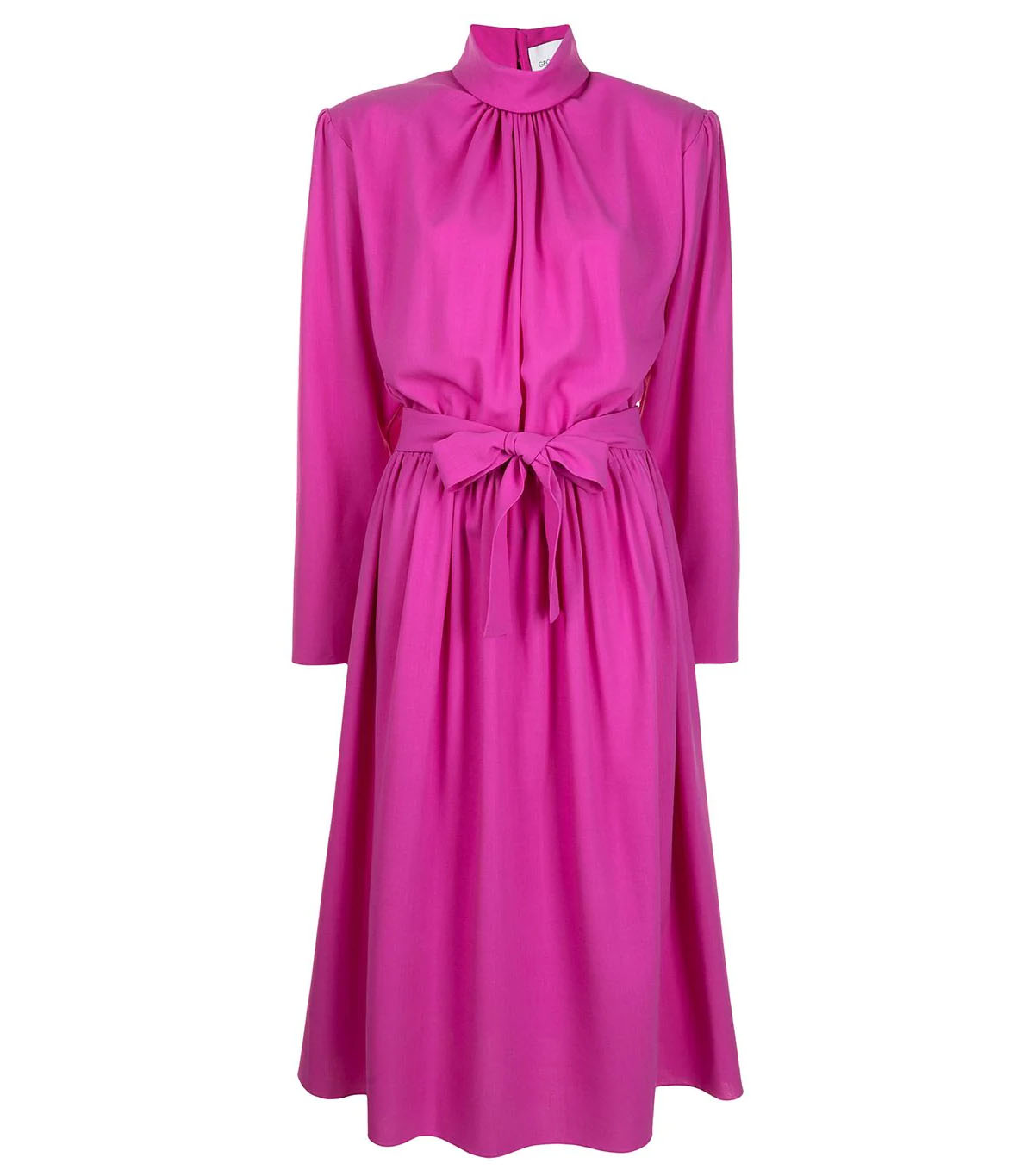
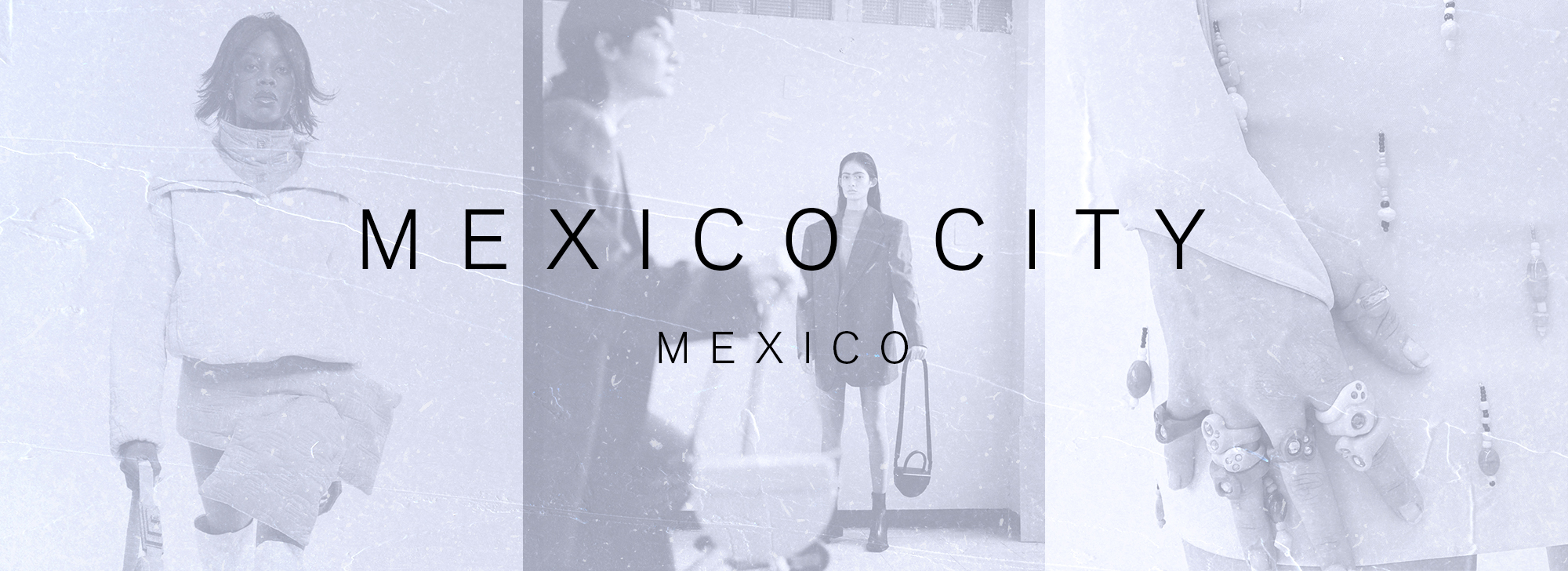
Mexico City is one of Latin America's biggest fashion and design industries, and the city is a cultural hub whose local fashion scene is increasingly capturing the attention of worldwide design enthusiasts. The city has undergone a powerful cultural awakening and has seen an influx of young people who are revitalizing the local art, party, and fashion scenes. From a style perspective, there's nothing more exciting than seeing and discovering emerging fashion designers, and Mexico City provides a gold mine of untapped creatives who showcase distinct craftsmanship, style, and personality.
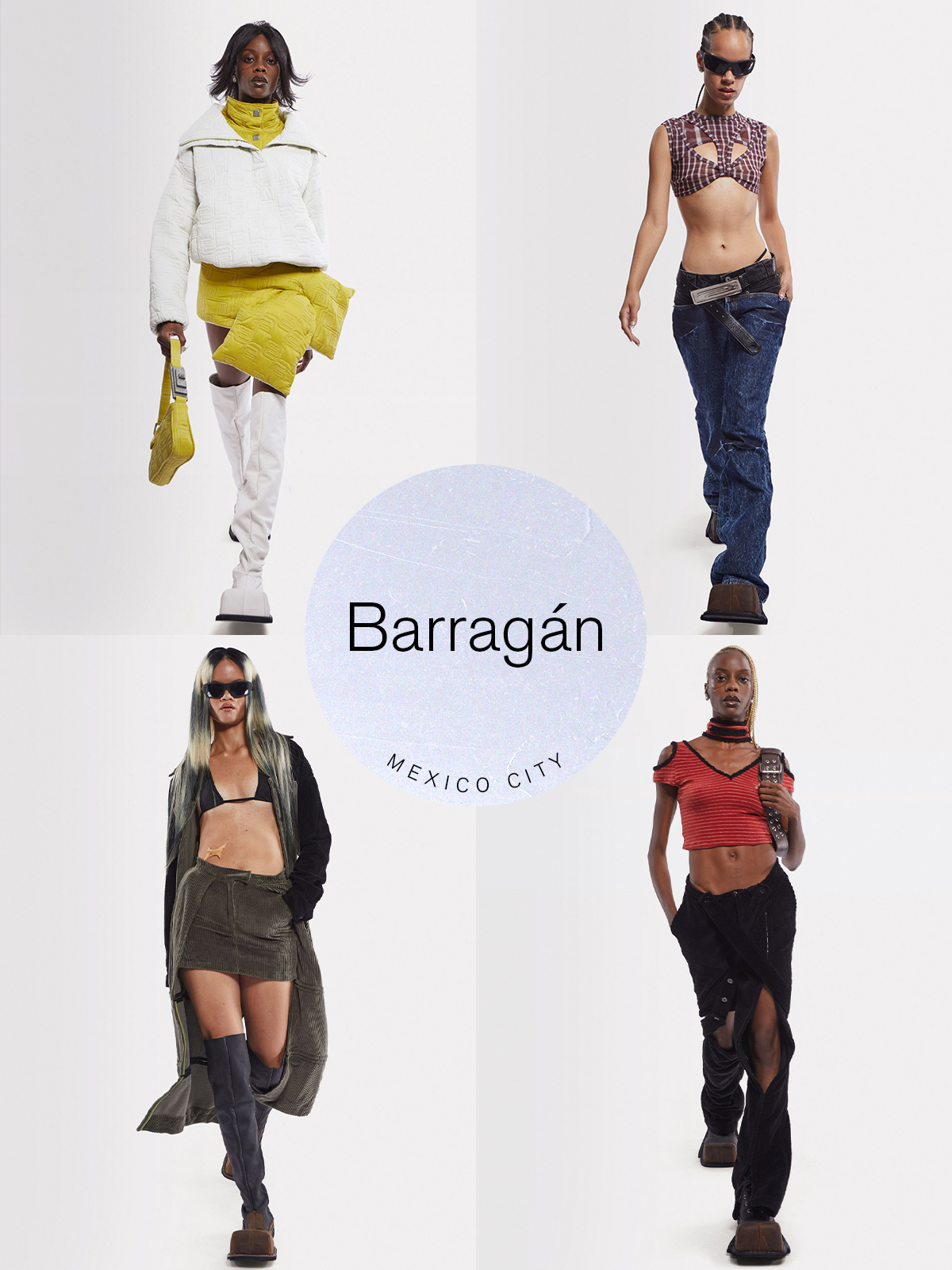
Victor Barragán transcends place. A Mexican-born, self-taught creative, he launched his namesake label Barragán at New York Fashion Week in September 2016 and was quickly embraced by the indie fashion community for his experimental ethos. The clothes, which shirk traditional menswear or womenswear labels, have a deconstructive element to them that is showcased best in the brand's signature cutout Brazos T-Shirt. "For me, design is also a state of mind, so I'm constantly in design mode wherever I'm located," Barragán shares.
While Mexico and its culture do serve as a constant foundation of influence in much of what he does, Barragán puts more emphasis on collective experience. He grew up during social media's first wave, and on Tumblr, he first started showing his work and ultimately gained an audience from outside of Mexico. Although he set his sights on New York, the designer explains that it became important for him to continue expressing his ideas from the perspective and experiences of being Mexican. "The brand signifies the elaboration of personal experiences and the lifestyles of our collective community," Barragán says. "Often from a queer and BIPOC perspective, we interpret our experiences through the brand's creative output."
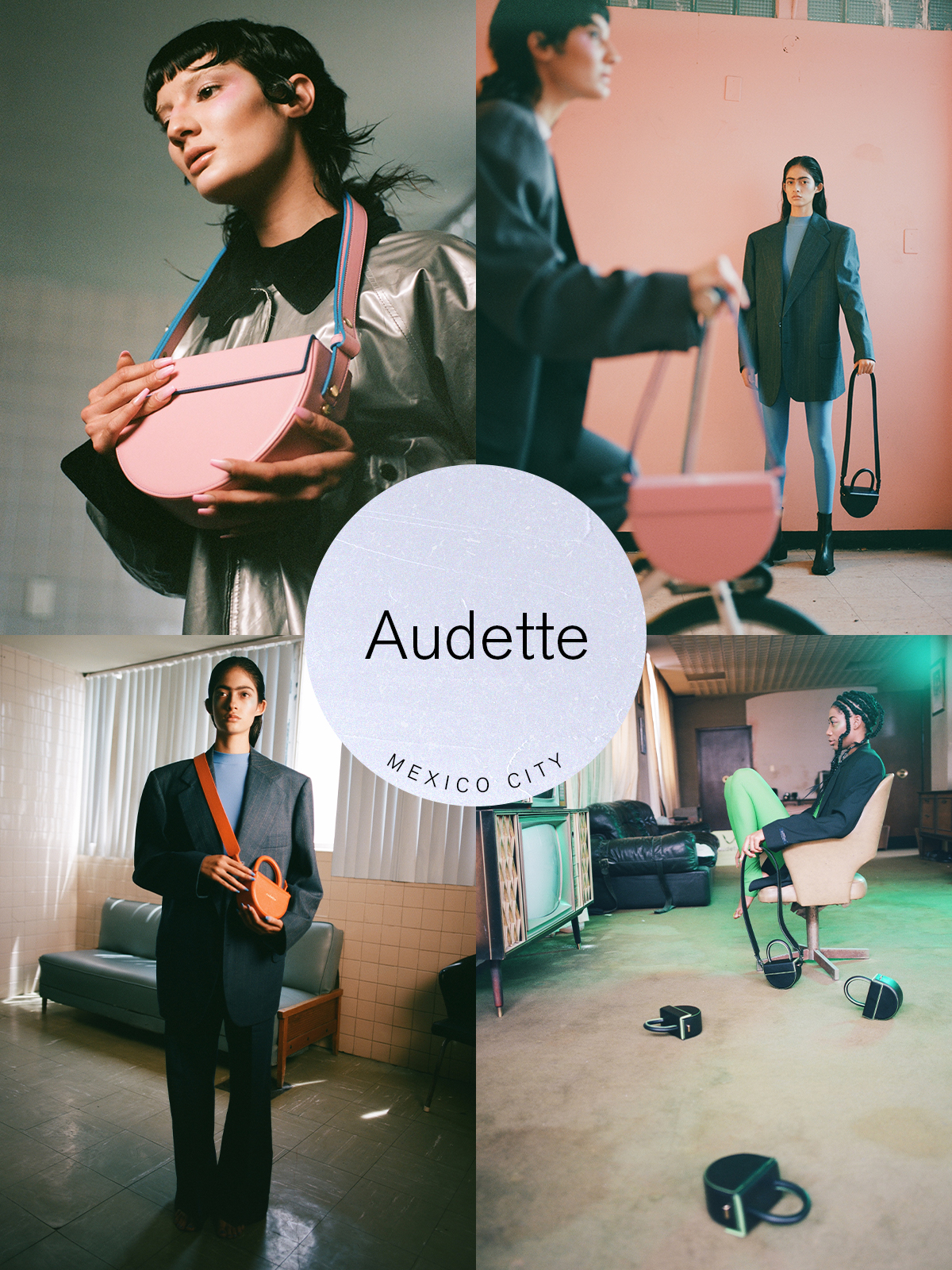
Audette is the perfect example of the creative community flocking to Mexico City in recent years. Five years ago, French couple Aude Jan and Charles Gout created Audette after falling in love with the city. "The chaos, the noise, the classical architecture mixed with wild constructions makes it a place that inspires us daily," Gout explains. He sees the duo as part of a growing group of creatives who are looking to contemporary Mexico for new inspirations. "It's a more urban movement, more provocative, and I think that makes Mexico City an emerging fashion capital," he adds.
Audette is a line of Mexico-made handbags that the designers think of more as design objects rather than everyday accessories. "The new baguette is our most futuristic bag. The lines are clean, and the Italian metal accessory is crazy," Gout remarks. "Annso, our marketing director, is going to hate me because it's not ready yet, but it's my favorite."
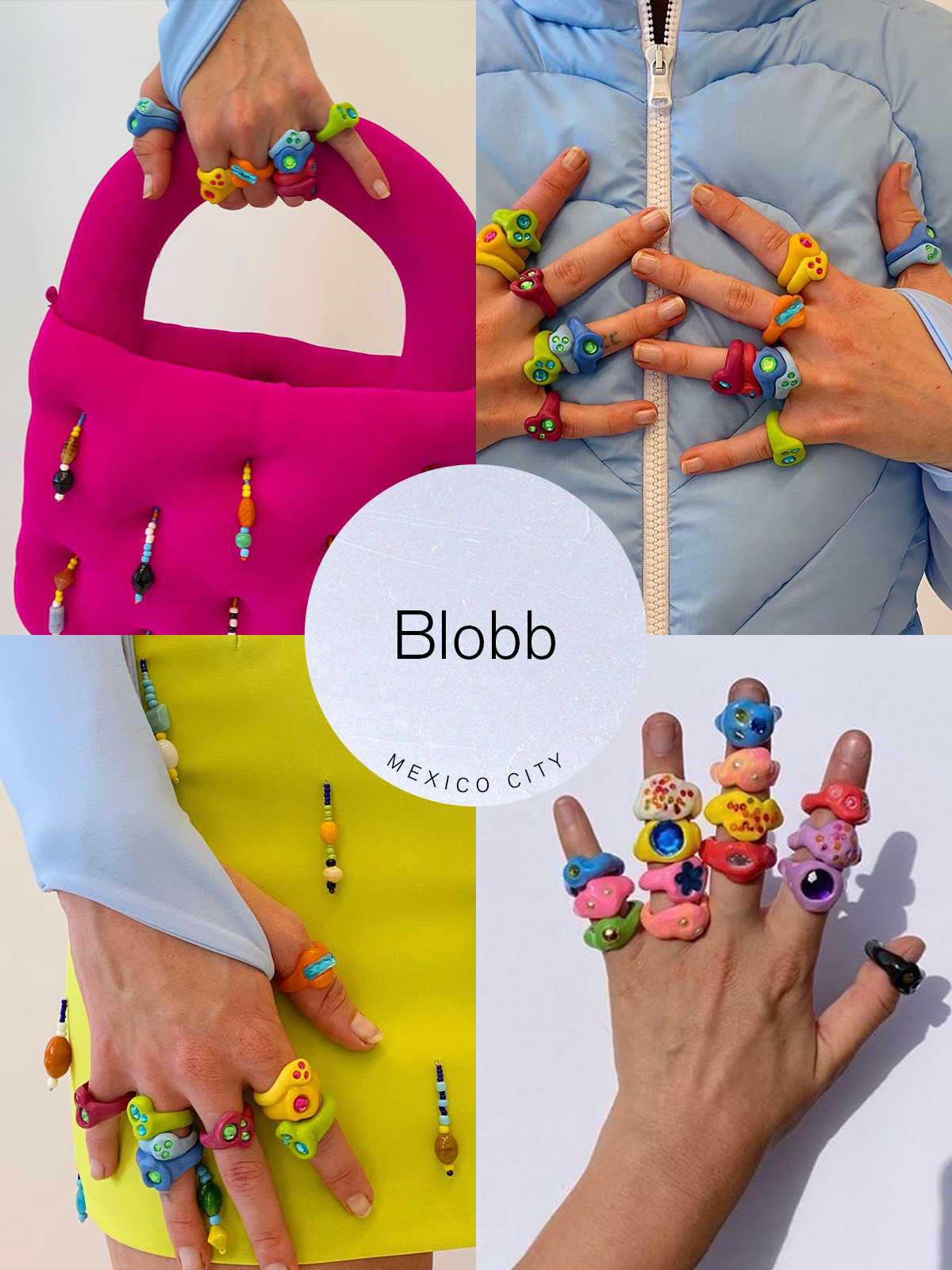
Art as fashion is an emerging theme for the creators of Mexico City. Instagram darling Blobb is simply the latest brand to capture our attention. The designer behind it, Sofía Elias, thinks of her handmade jewelry as miniature sculptures that remind her of the imperfect, mismatched, and deformed creations that were her childhood art projects. "My pieces allow the wearer to revisit past moments, to feel playful like a child again," she says. "This is a small object that provides a momentary flashback to our early years, where we are the purest version of ourselves."
Elias never saw herself making jewelry. But after studying architecture for five years, she says she felt an urge to move away from the computer and create something with her hands instead, like many who turned to tactile hobbies during the pandemic. Like all hobbies, the project began as jewelry for Elias: "I just wanted to play, touch, and feel materials, all kinds of them." Then, it started catching people's attention, which is when she took the brand online and decided to sell her work. Now, Blobb has collaborations with indie favorites Marshall Columbia and Mowalola under its belt along with the attention of Gen Z fashion folk.
Born in Guadalajara and currently residing in Mexico City, Elias has witnessed firsthand the growth of her country's capital. "In the last few years, Mexico City became very popular, and many people from all over the world are coming and seeing what a magical country it is," she says. "Perhaps this is why people are looking and seeing the brands and fashion scene just now."
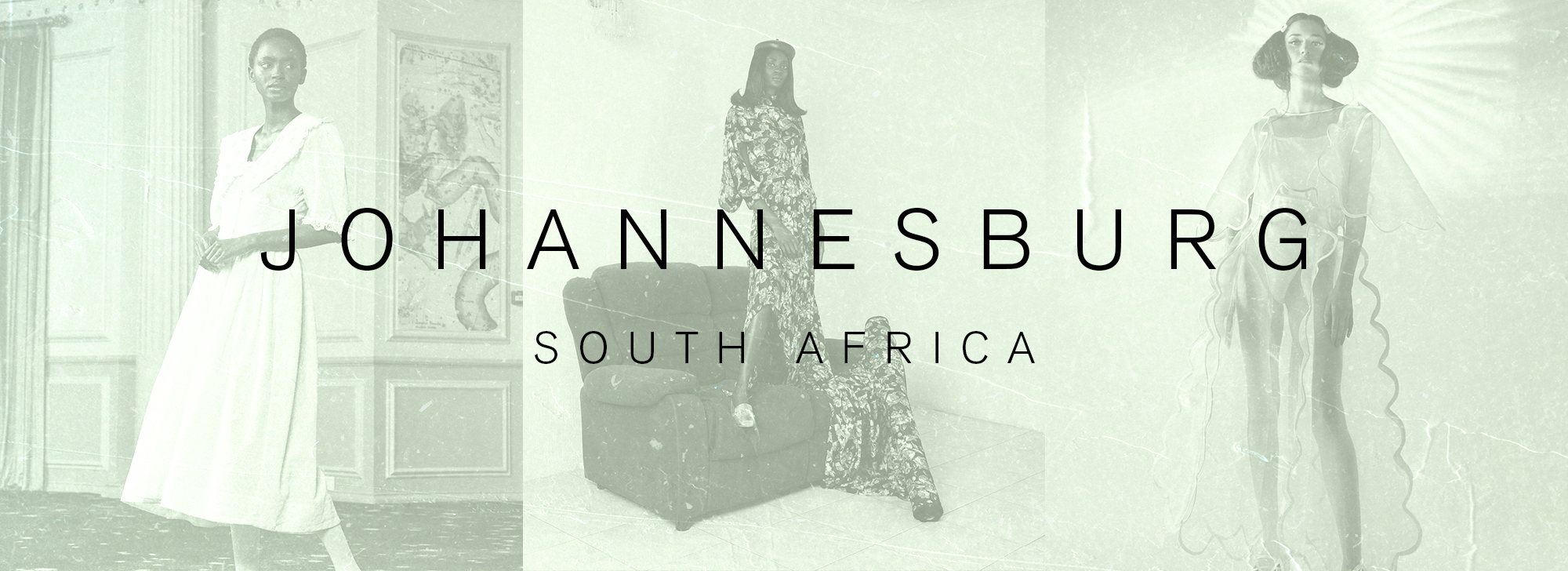
Johannesburg has not always been the fashion hub that it is right now, notes Vanessa Maseko, an associate buyer for The Folklore. What she calls the heartbeat of culture in South Africa, Johannesburg is diverse, vibrant, and most importantly known for its bold choice of color. Secondhand shopping is also a big part of style in Johannesburg, and the emphasis on sustainability has defined how the country has established itself in the fashion industry. "Very few individuals have access to international luxury, designer clothes—often not even local designer clothes—and are therefore forced to be very creative with secondhand finds and styling," adds Viviers Creative Director Lezanne Viviers.
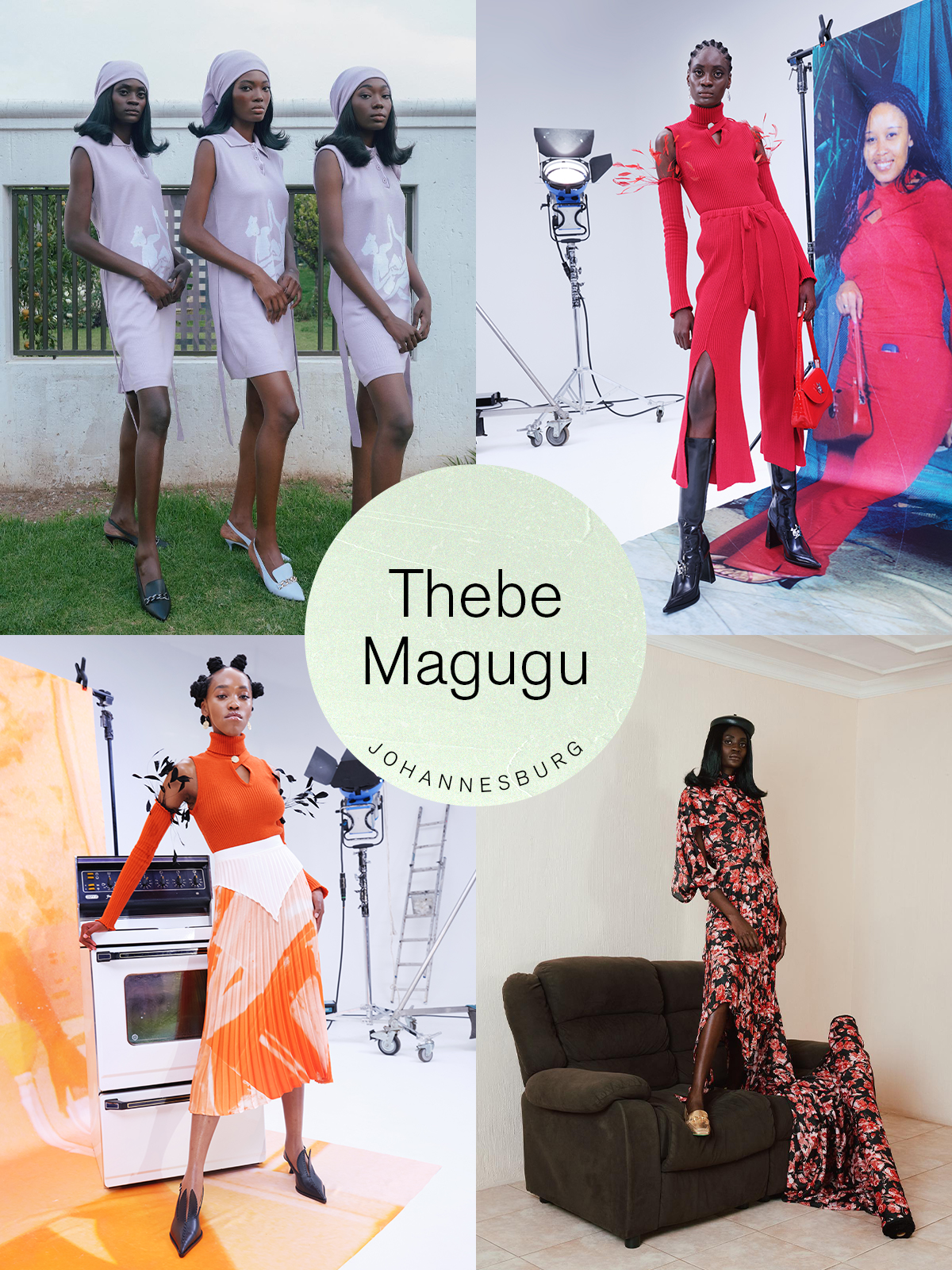
If you haven't heard the name Thebe Magugu yet, well, consider this your official intro. The label based in Johannesburg already holds the LVMH Prize and is part of the MatchesFashion Innovator's program. The stunning designs hit at the heart of what fashion people want to wear now, offering one-of-a-kind twists on staple silhouettes, such as reworked shirtdresses and innovative knits.
For the brand's S/S 22 collection, Ruffle notes, Magugu pulled inspiration from his personal archive of family photos, celebrating his upbringing in South Africa and how he came to be who he is in a family that loved dressing up. "He is looked up to as a trailblazer for other young designers across Johannesburg and greater South Africa," Ruffle says. "His interpretation of femininity and heartfelt storytelling through sharp tailoring, regal silhouettes, and strong prints has really resonated with [the Moda Operandi] client."
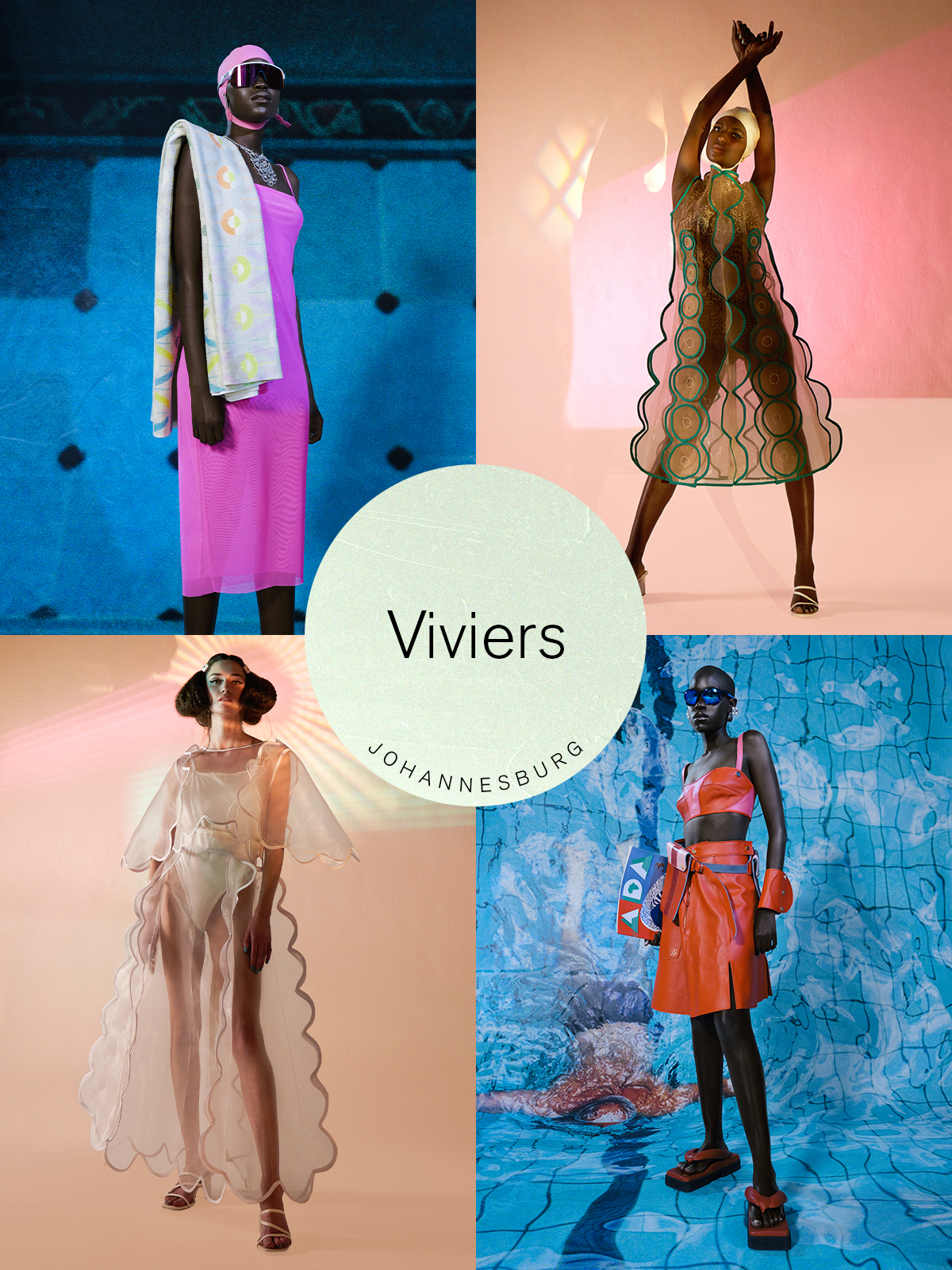
Viviers is a concept clothing brand produced in limited editions and often made to measure. Launched in 2019 in Johannesburg, the label was founded with a strong commitment to sustainability in mind, which it achieves in several different ways—minimizing textile waste by individually hand-cutting garments, reusing deadstock fabrics, producing only in limited-edition runs, and focusing on creating trans-seasonal and versatile pieces that are made with integrity. "The quality and the longevity of our garments take priority at Viviers," Viviers tells us. "By not only disregarding trends but also carefully selecting the best quality raw materials to start with."
Viviers is a line of expressive ready-to-wear that celebrates individuality. The collections are made by artisans in Johannesburg, and the nature of the hyper-local production successfully redefines luxury as Viviers set out to do. Johannesburg is woven into each garment, both literally and figuratively. "I believe I cannot remove myself and my inspiration from where I live. Not only does Johannesburg act as the home for our very culturally diverse team, but it also inspires us with its chaos," she says. "Our upcoming collection draws inspiration from the informal recyclers who collect and resell our trash. The new collection is partly inspired by the e-waste that is found along the streets. The city reminds us to seek beauty in the mundane, to be inspired by the imperfections that surround us. Johannesburg is a textured city that is grounded in paradoxes."
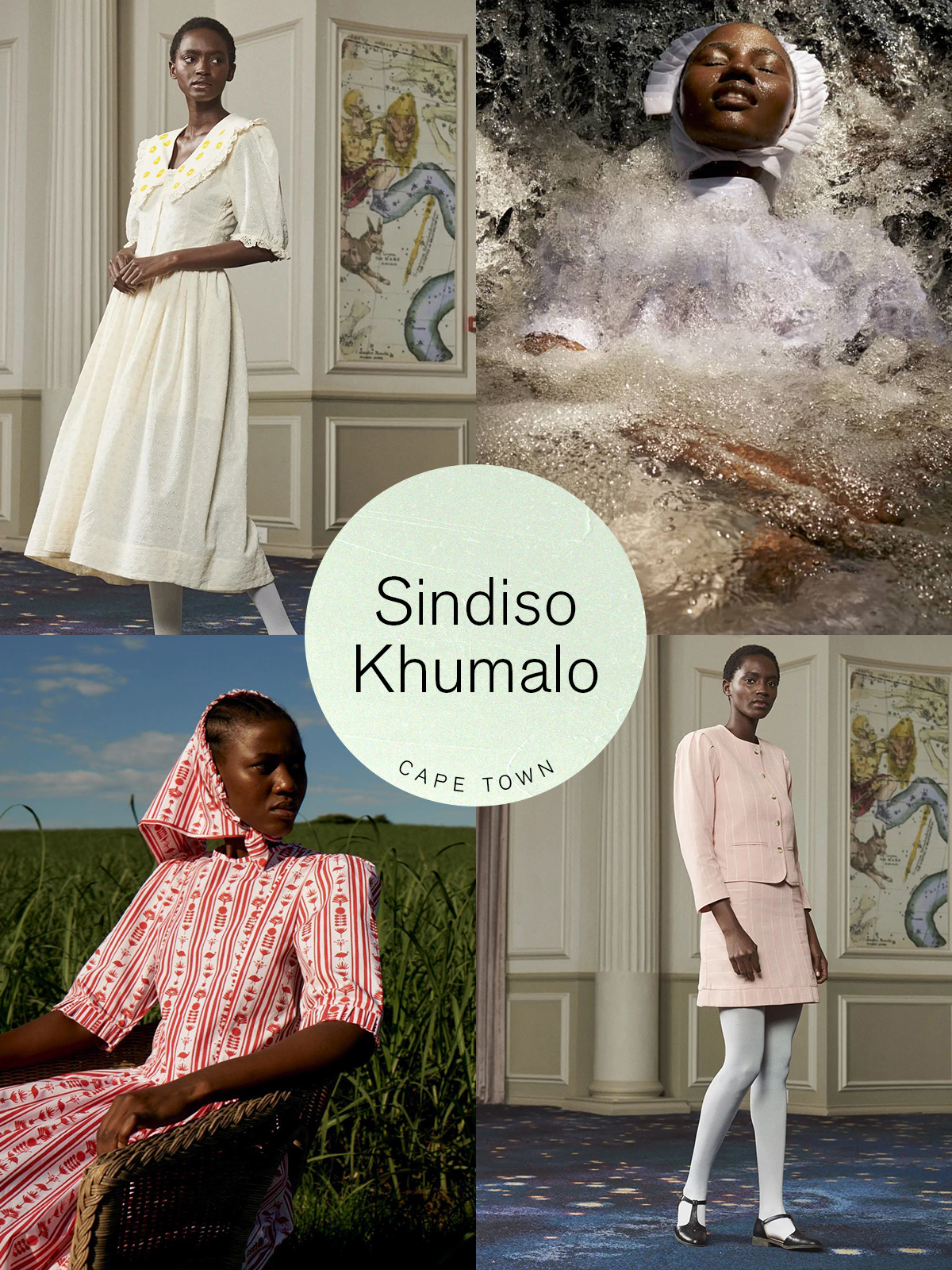
Johannesburg may be home to a burgeoning fashion community, but we couldn't paint the full picture of South Africa's talent without mentioning Sindiso Khumalo. Based in Cape Town, Khumalo started her namesake label to create modern, sustainable clothing inspired by her Zulu and Ndebele heritage, with an emphasis on African storytelling. This ethical approach to creating has landed her a spot in Net-a-Porter's coveted Vanguard program that supports and highlights up-and-coming talent. Additionally, Khumalo was awarded the LVMH Prize as part of the class of 2022. Working closely with small African factories to produce the handwoven textiles, her collections are full of colorful dresses and wearable separates.
Sindiso Khumalo will be available to shop soon.
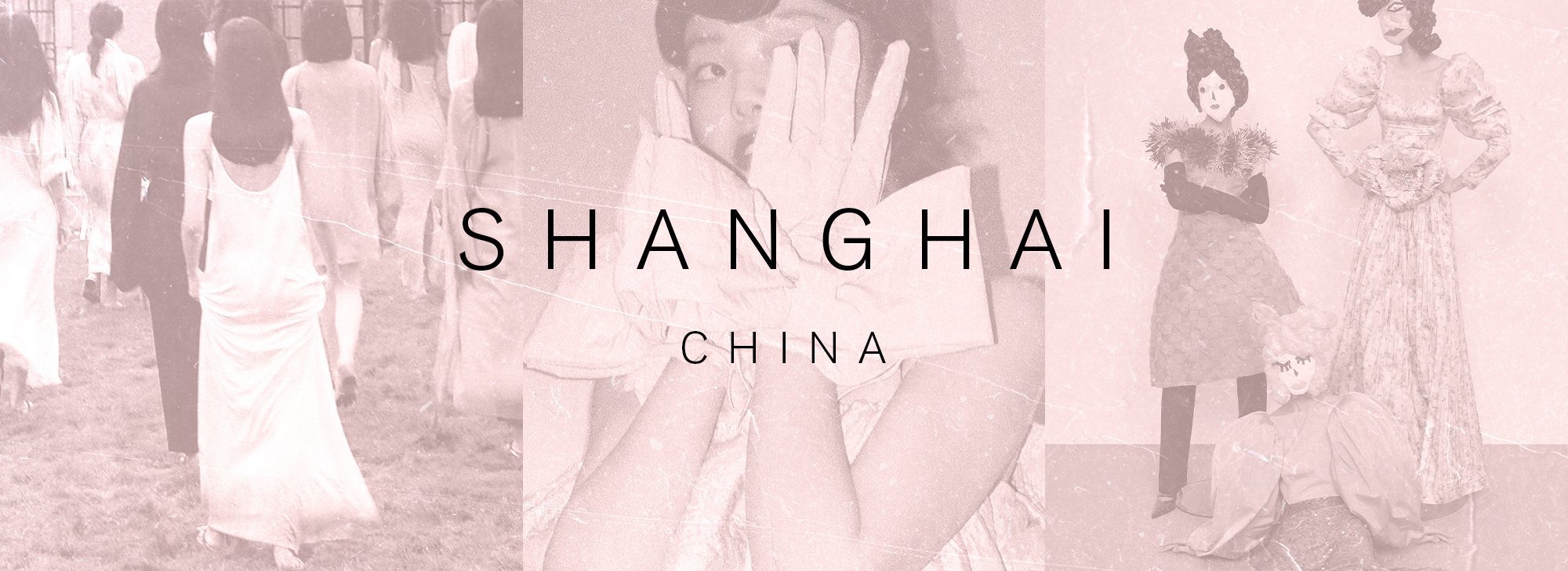
The spring/summer 2022 collections that designers showed during the last Shanghai Fashion Week are proving that the city is, without question, the emerging fashion capital of China and home to some of the most exciting new talent. Designers staged incredible in-person runway shows that featured a range of themes, from Shushu/Tong's prim and proper ensembles finished with all manner of bow ties and floral appliqués to the retro glamour that Ming Ma is bringing to eveningwear.
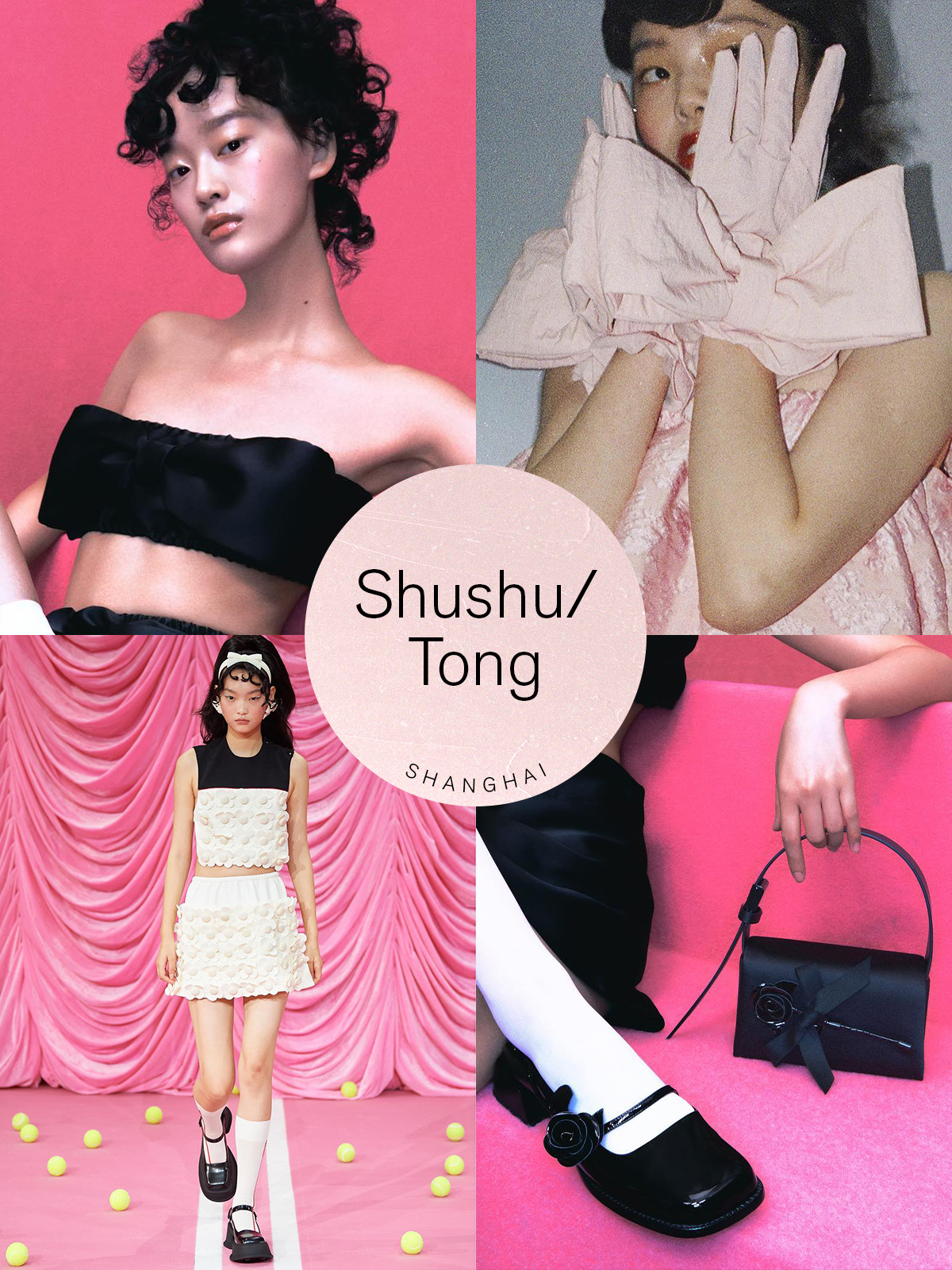
Shushu/Tong focuses on serving up sweetly feminine style with its signature twist. Designers Liushu Lei and Yutong Jiang launched the brand in 2015 after sharpening their design skills at Simone Rocha and Gareth Pugh, respectively. The duo sets out to "push the boundaries between girl and women" and redefine our ideas of femininity with their playful take on 1950s motifs like the shift dress, which they've assigned an exaggerated bow and modern cutout. The brand recently partnered with Charles & Keith to make affordable versions of its signature Mary Janes.
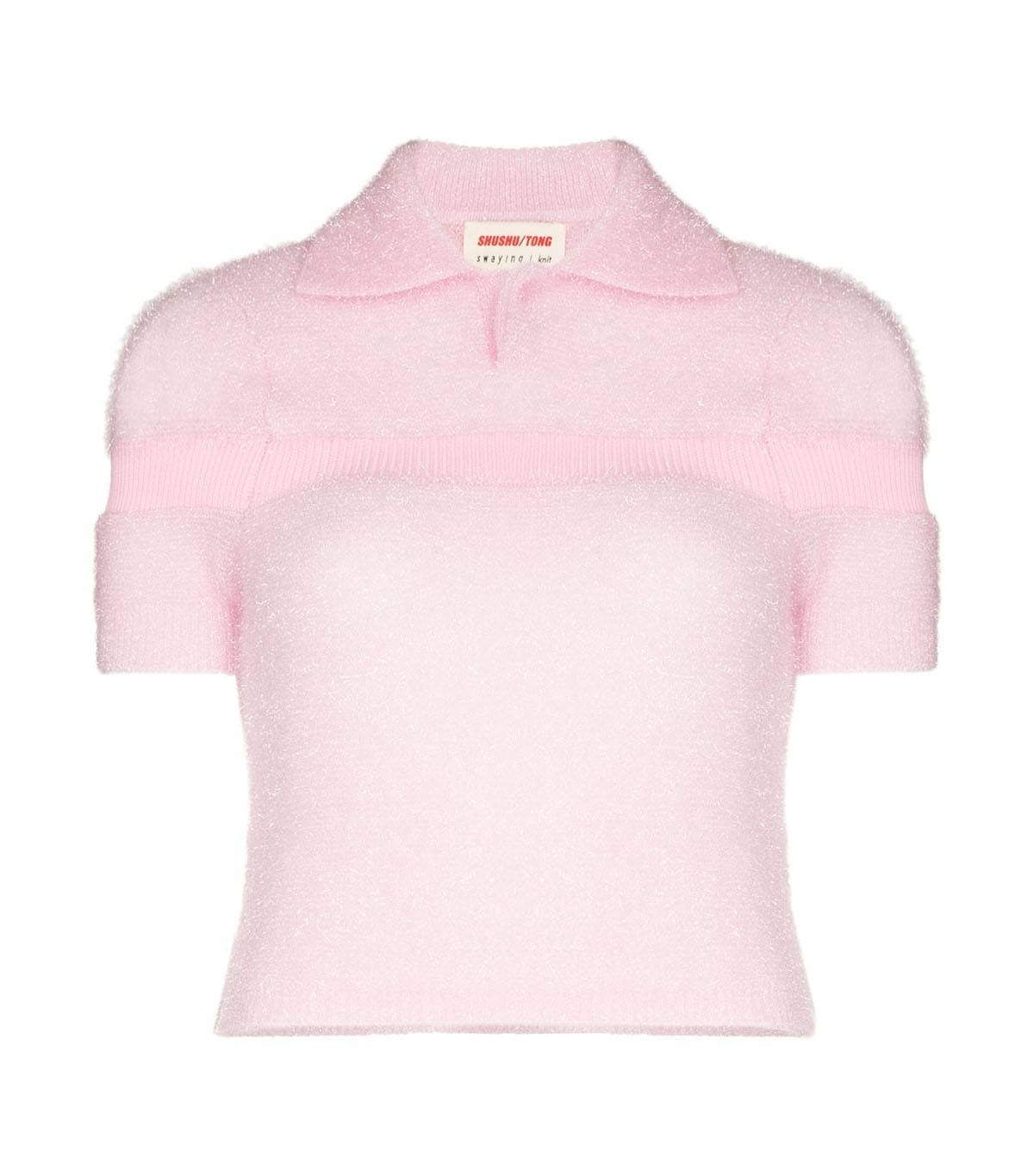
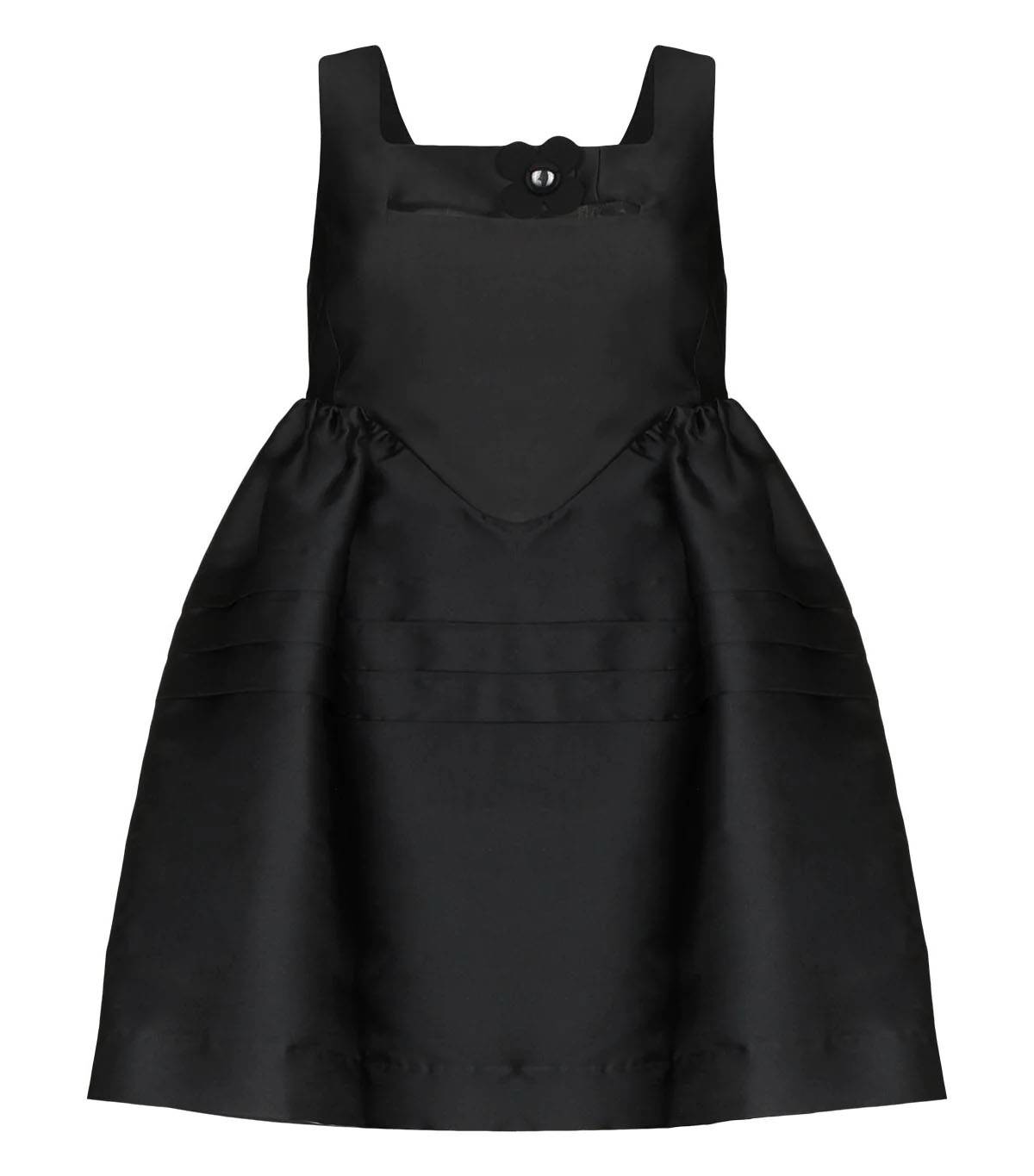
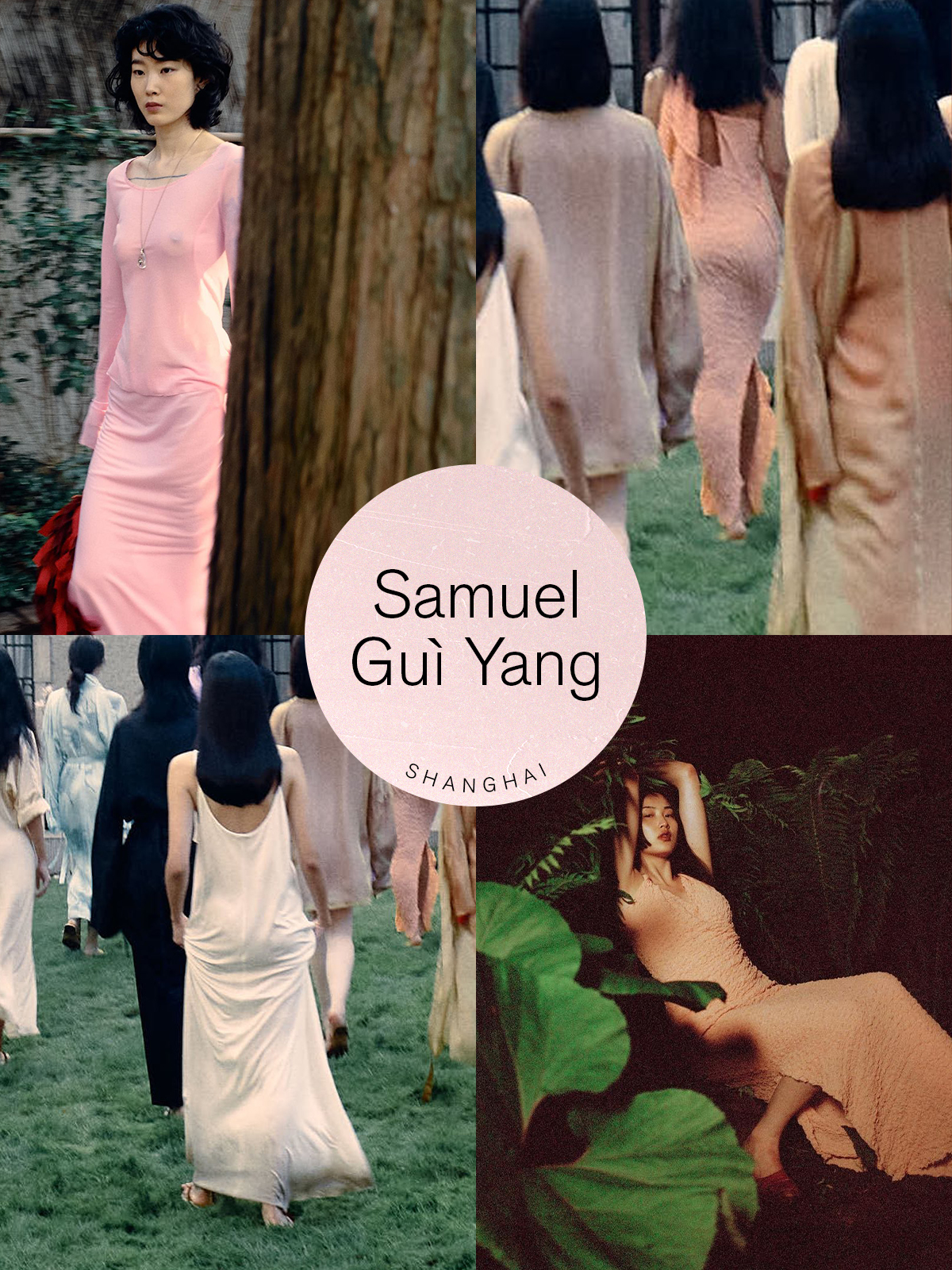
This season was a particularly exciting one for Samuel Guì Yang. Not long after staging his S/S 22 show, the Central Saint Martins–educated designer was the primary recipient of China's Hu Fashion Forward Prize, which honors the country's best and brightest new fashion talent. Yang is known for his modern and minimalistic take on traditional Chinese dress codes and has already earned the attention of stockists such as Farfetch and Browns. We're especially keen on the relaxed tailoring, simple skirts, and soft color palettes on offer.
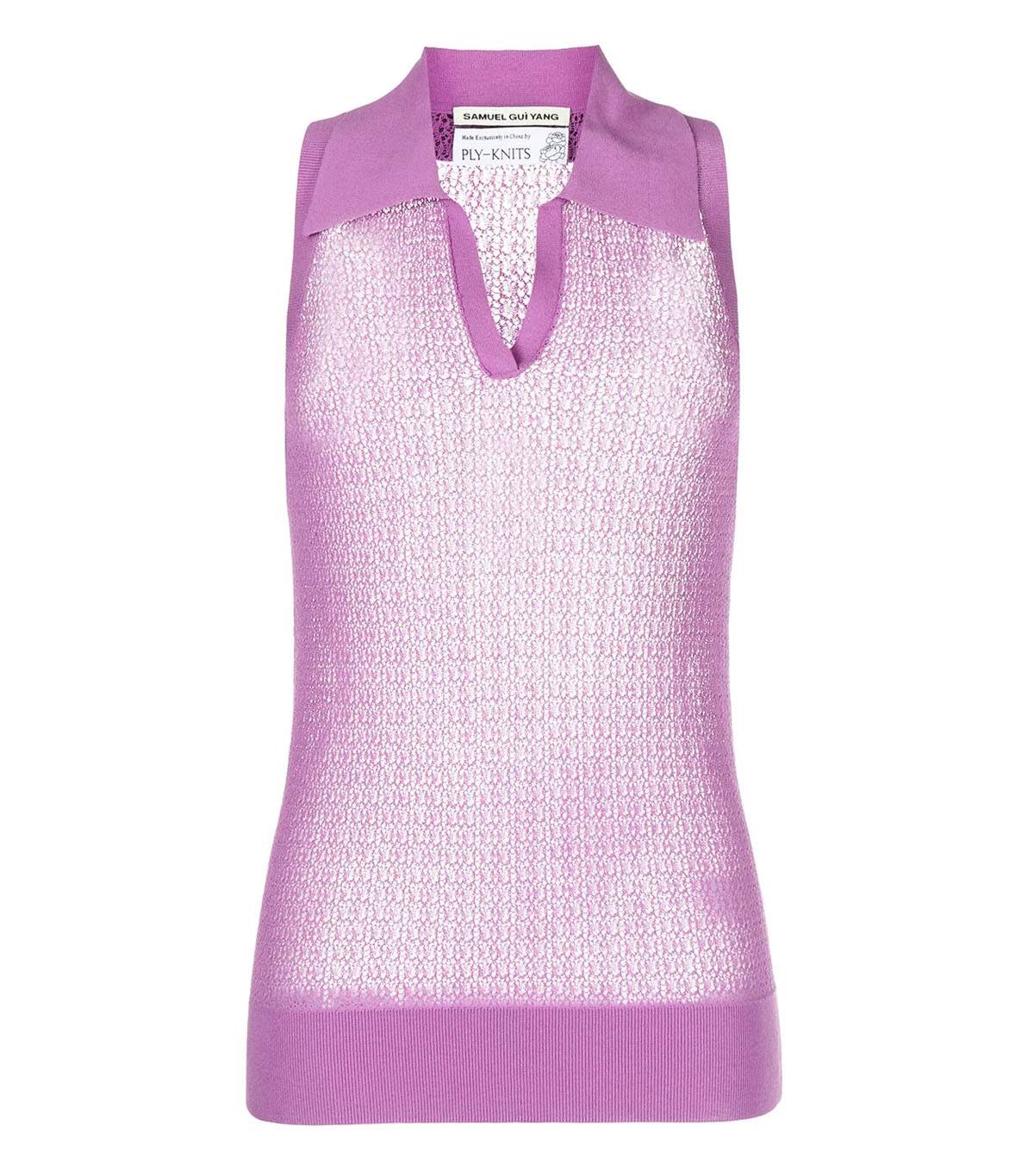
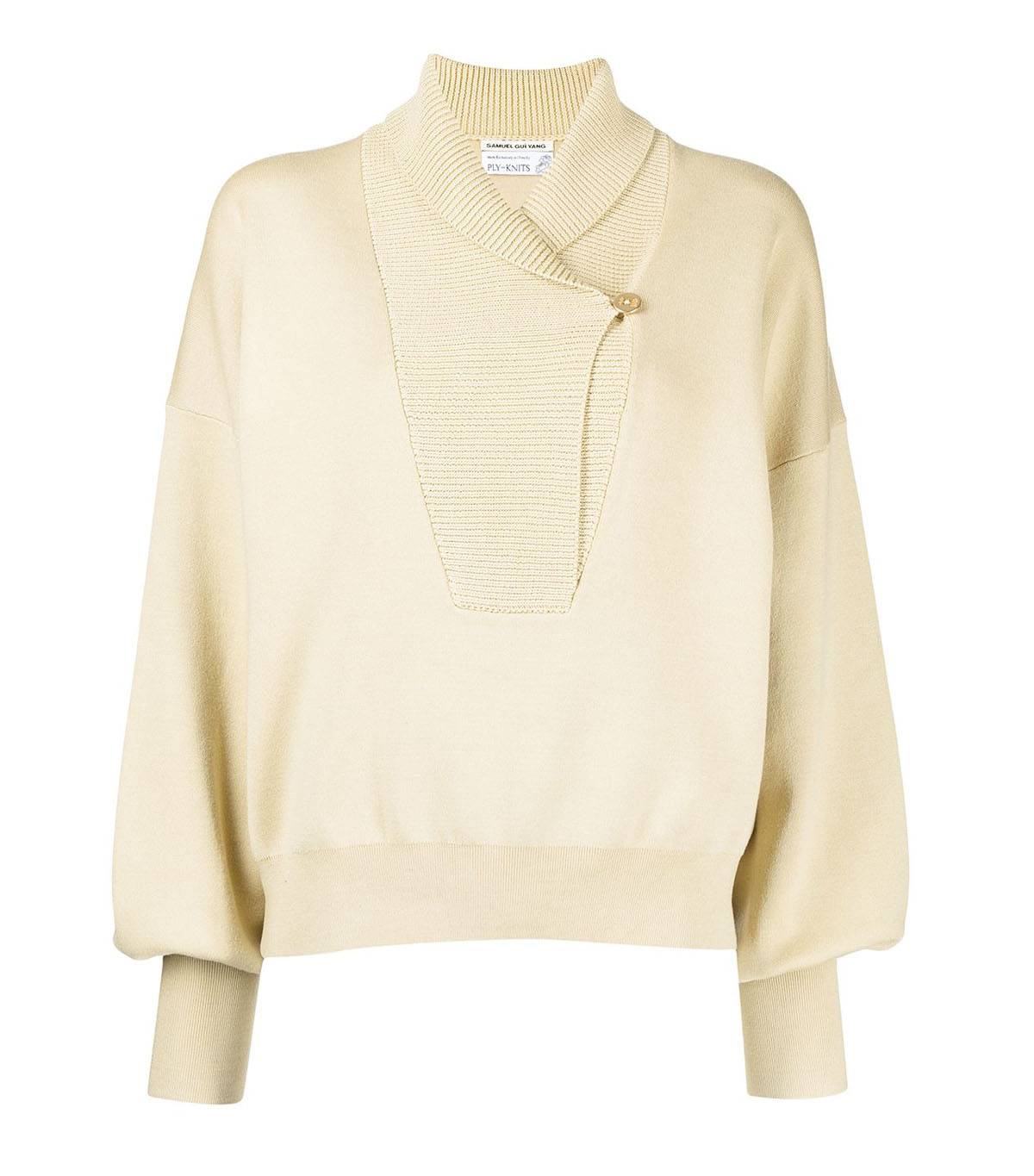
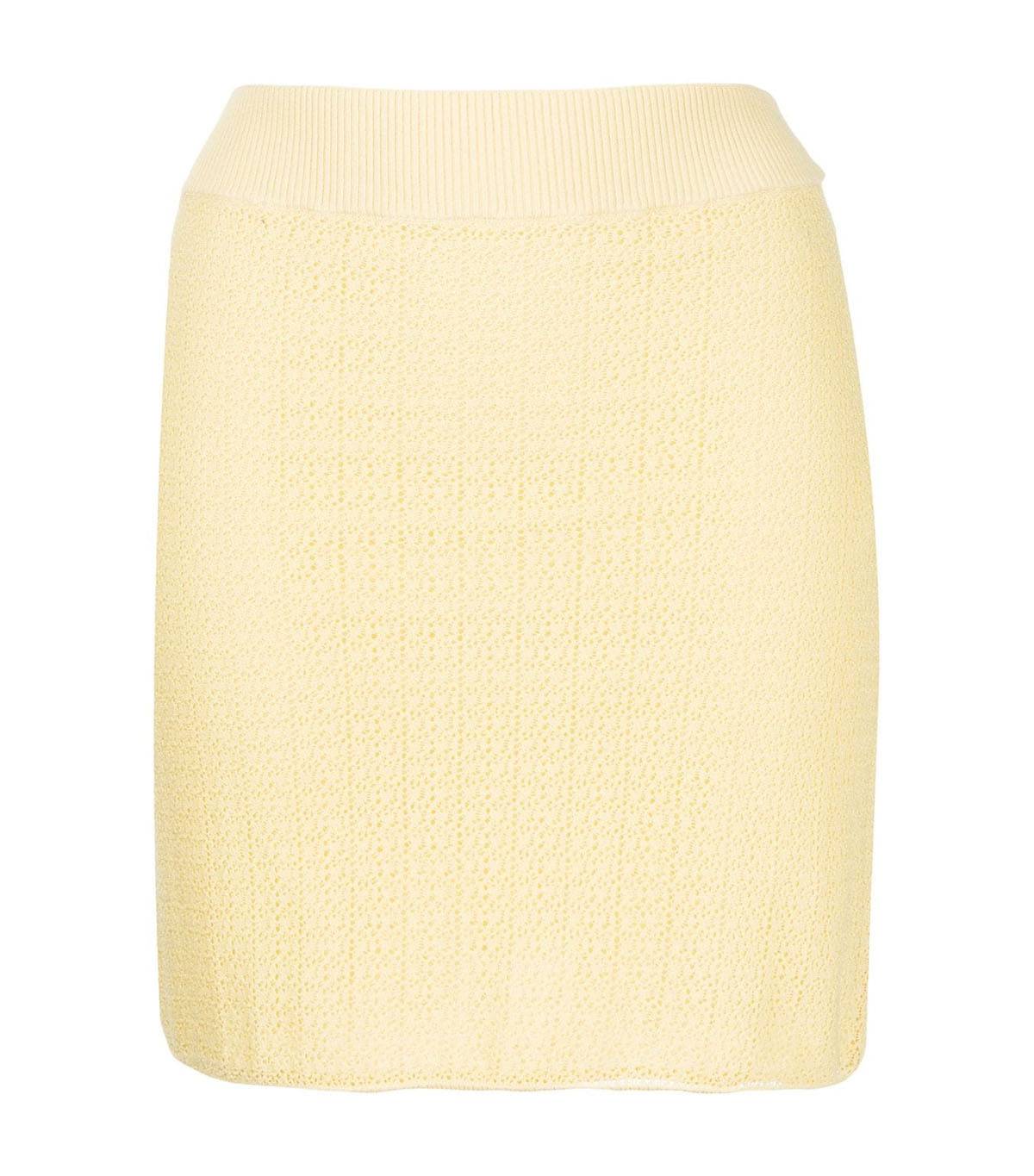
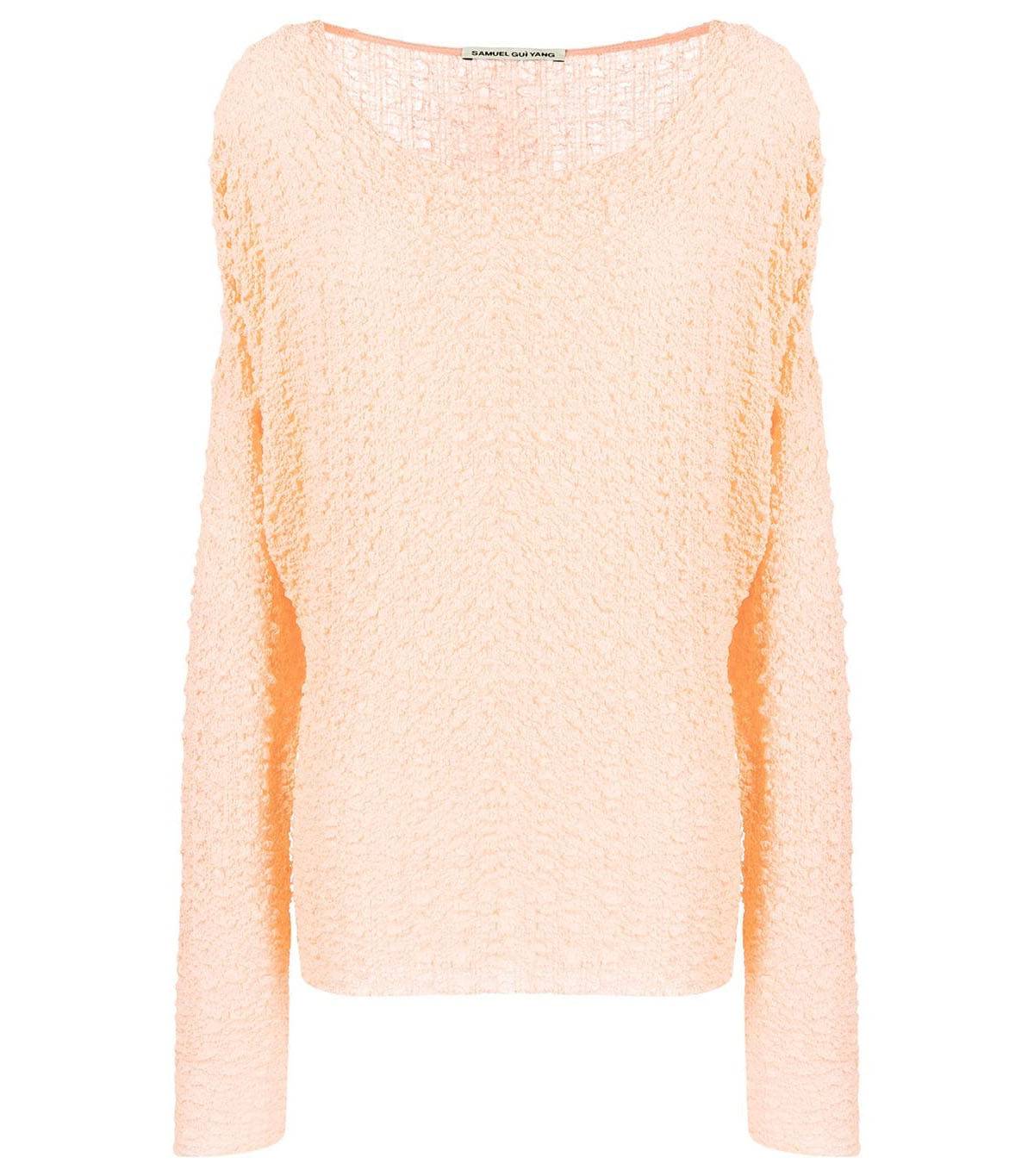
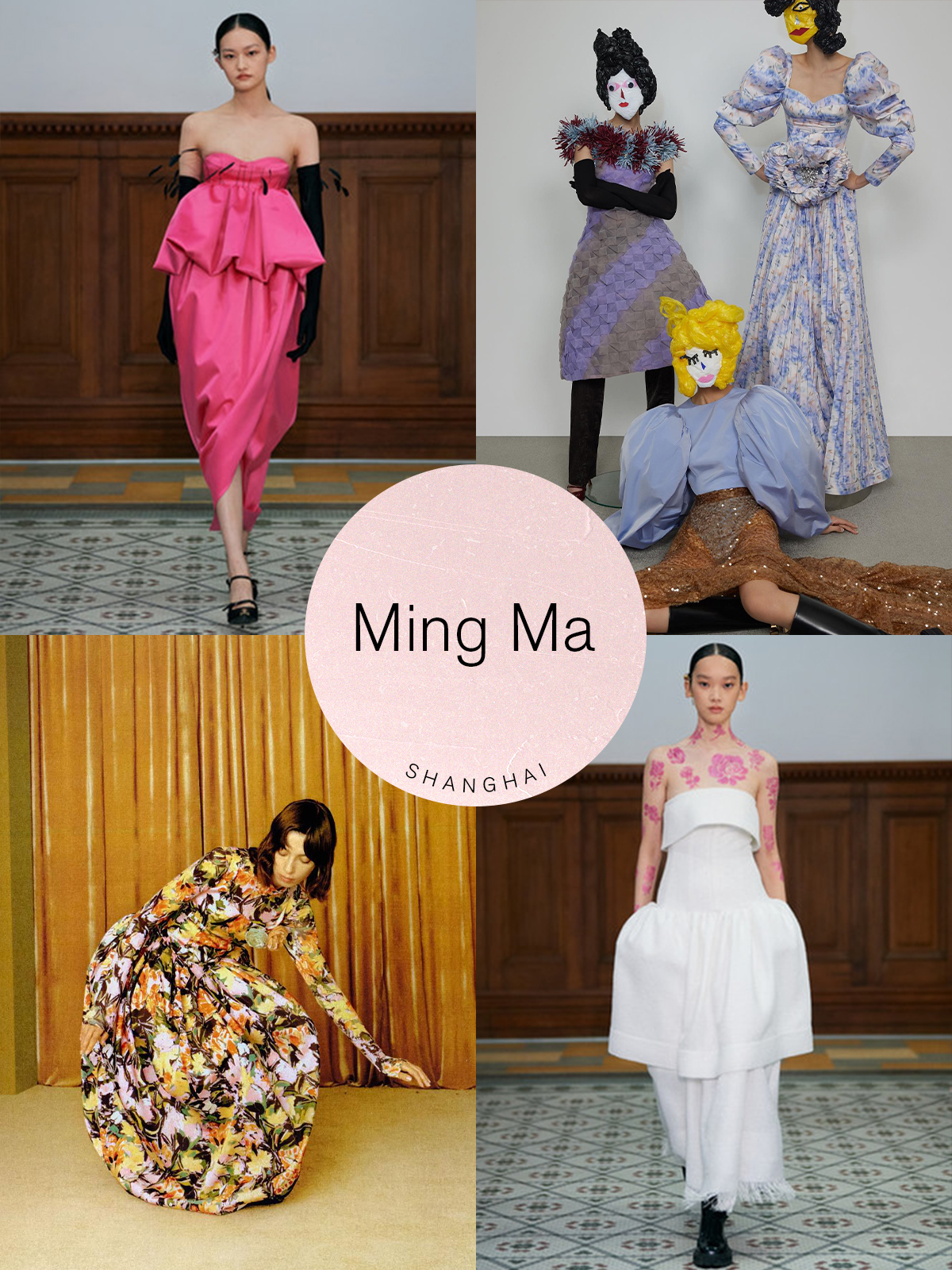
Central Saint Martins alum Ming Ma knows how to bring the drama. The designer studied under famed professor Louise Wilson, sharing a mentor with some of fashion's most beloved talents, including Christopher Kane and Phoebe Philo. Ma went on to establish his Shanghai-based label in 2018, and his modern couture–esque works have since been lauded in publications such as Vogue Italia and The Gentlewoman. If the new guard of Chinese talent is on the rise, then Ma is largely credited with leading the charge.
Ruffle is excited about Ma as well. "In terms of aesthetic desire, Ming Ma's designs check all the boxes: exuberant florals, sculptural silhouettes, and, of course, bows," she says. "Our client has never met a bow she didn't love. Ma's pieces are exactly what our Trunkshow customer is willing to preorder and wait for—it's something she knows that no one else will be wearing at the party."
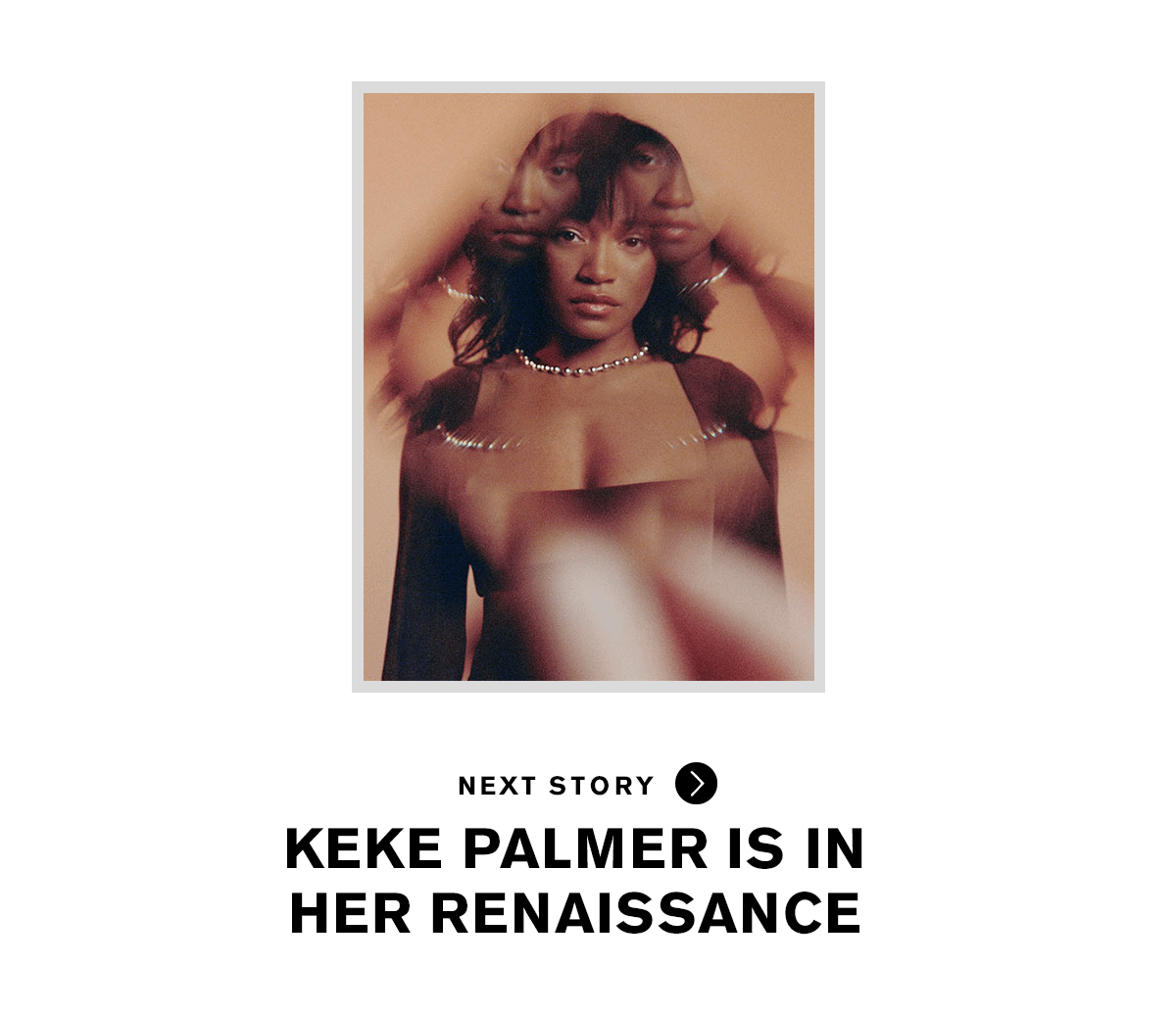
Anna is an NYC-based senior fashion editor who has been a member of the Who What Wear team for over seven years, having begun her career in L.A. at brands like Michael Kors and A.L.C. As an editor, she has earned a reputation for her coverage of breaking trends, emerging brands, luxury shopping curations, fashion features, and more. Anna has penned a number Who What Wear cover interviews, including Megan Fox, Julia Garner, and Lilly Collins. She also leads the site’s emerging travel vertical that highlights all things travel and lifestyle through a fashion-person lens.
-
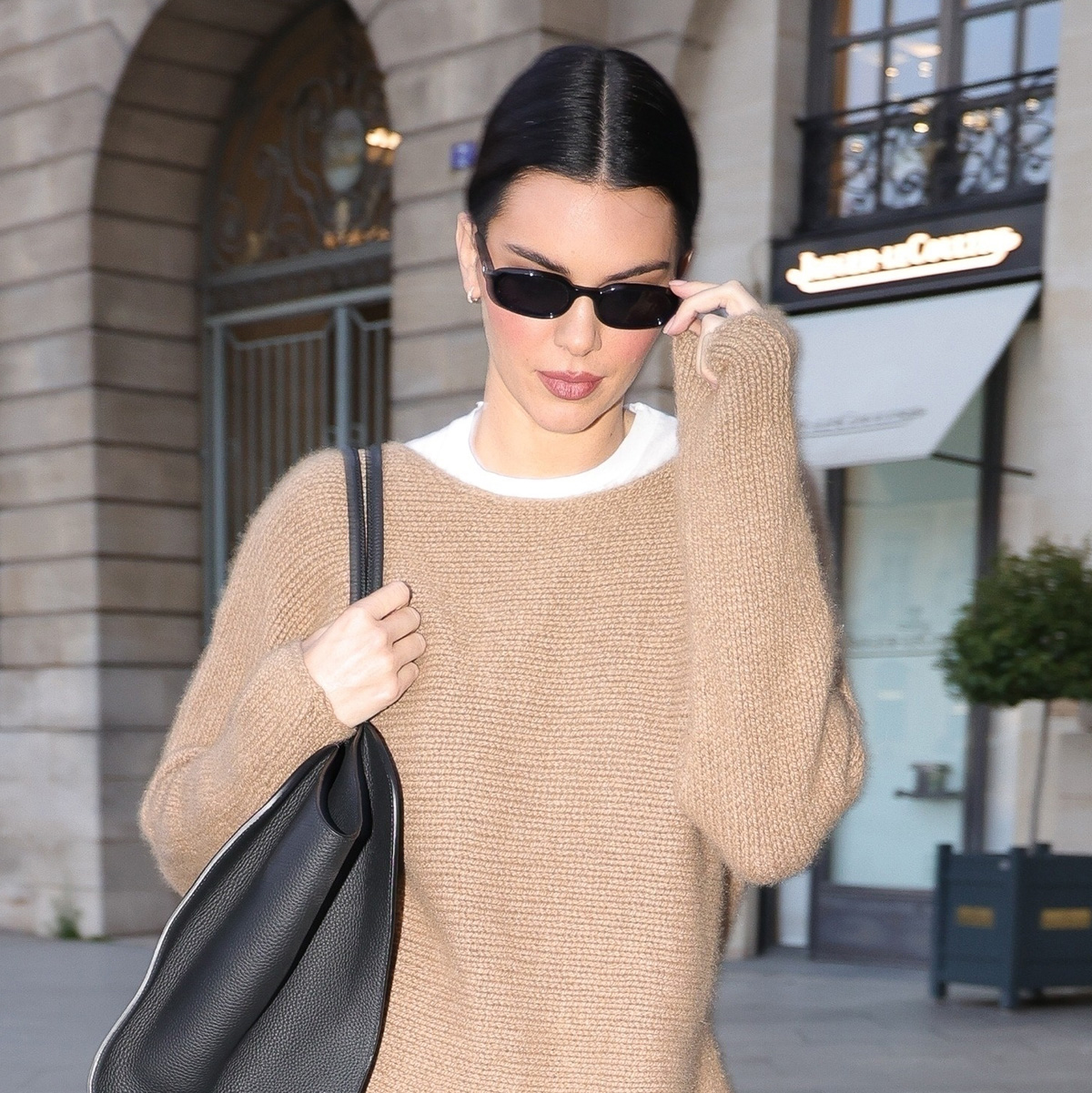 Spotted in Paris's Poshest Arrondissement: Kendall Jenner in the "Boring" Pants I Now Need
Spotted in Paris's Poshest Arrondissement: Kendall Jenner in the "Boring" Pants I Now NeedMy baggy black trousers are going on hiatus.
By Allyson Payer
-
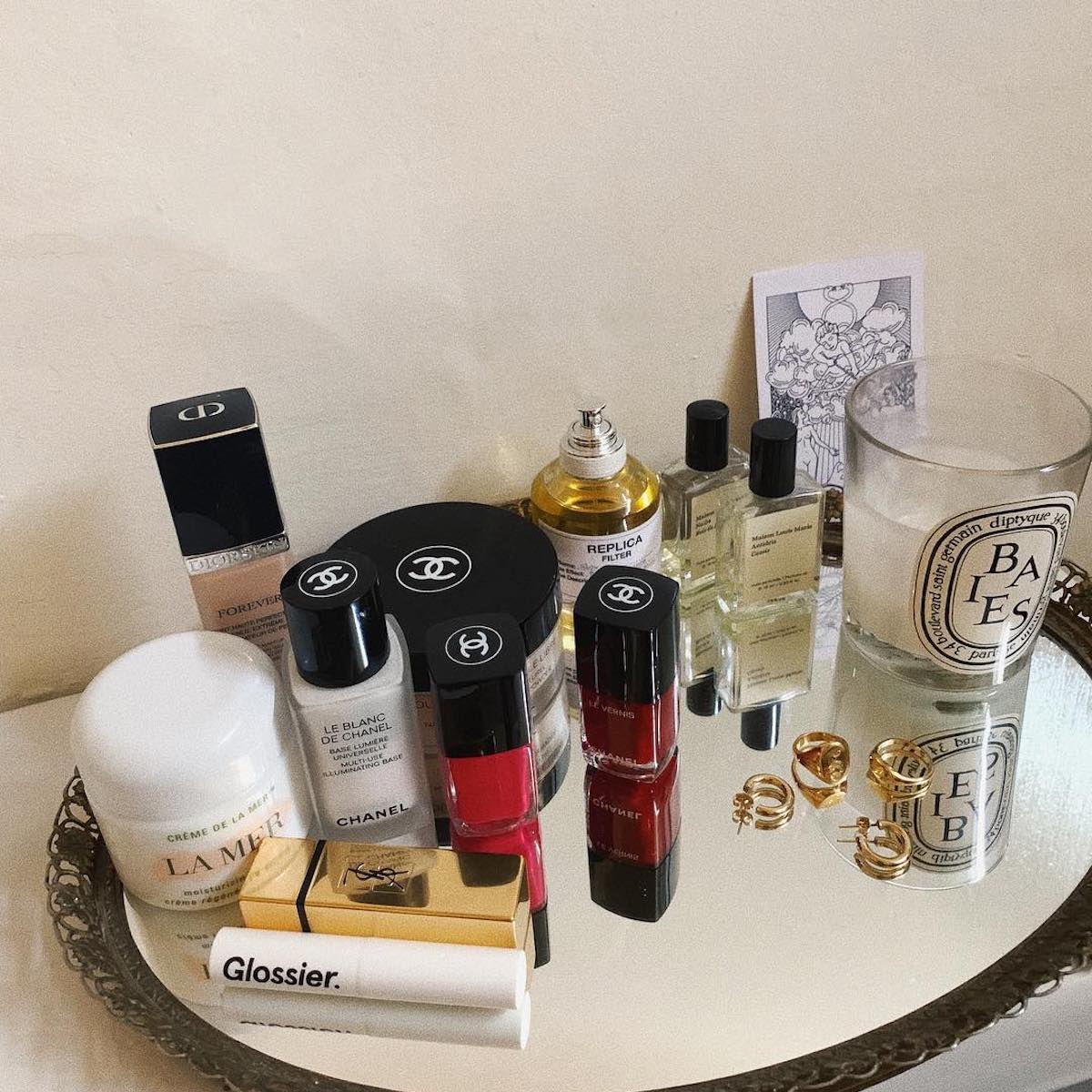 Prada, Dior, and Givenchy: I'm Crossing Off Items on My Luxury Beauty Wish List During This Short Sale
Prada, Dior, and Givenchy: I'm Crossing Off Items on My Luxury Beauty Wish List During This Short SaleHere are my top 10 picks.
By Kaitlyn McLintock
